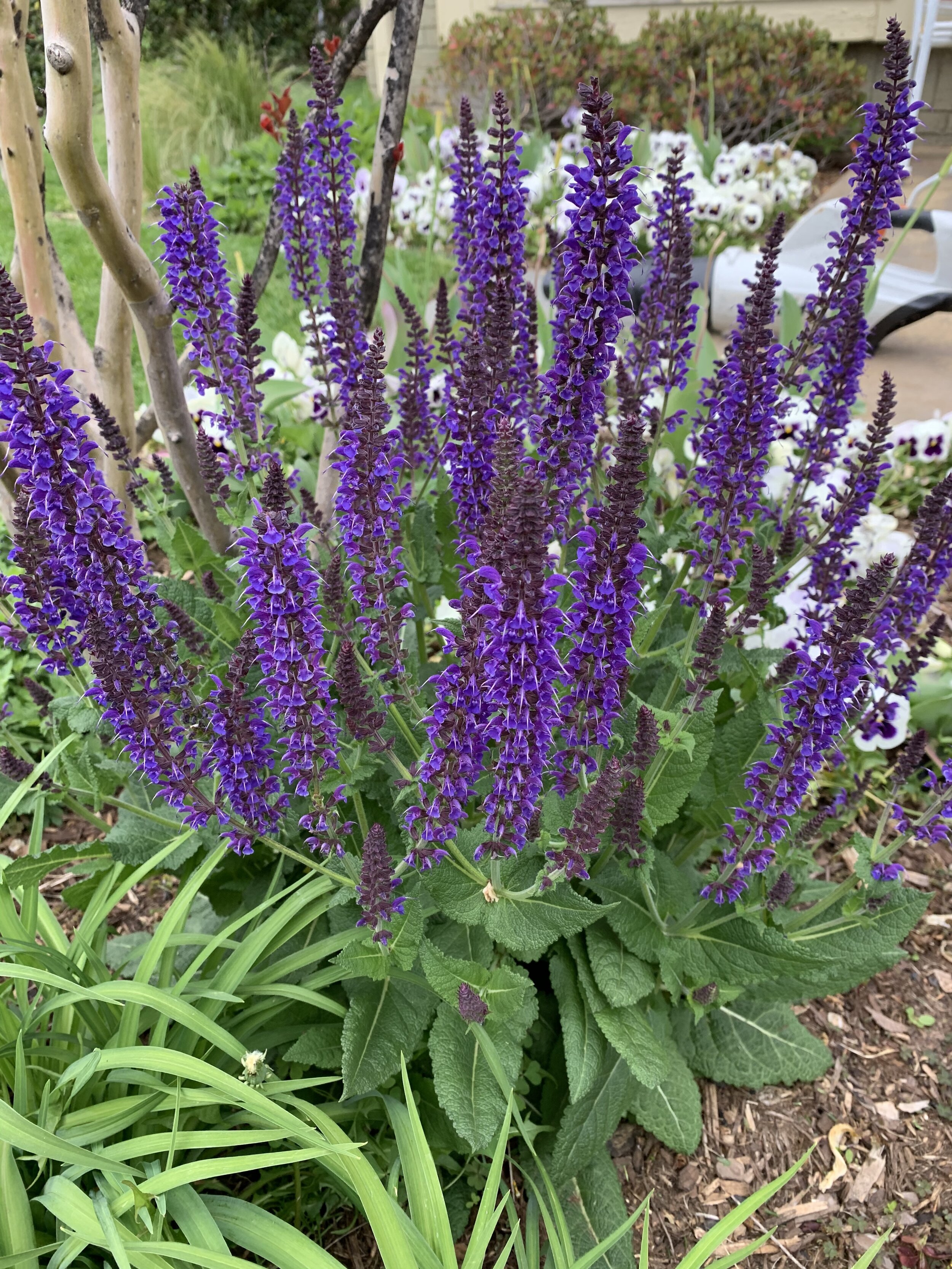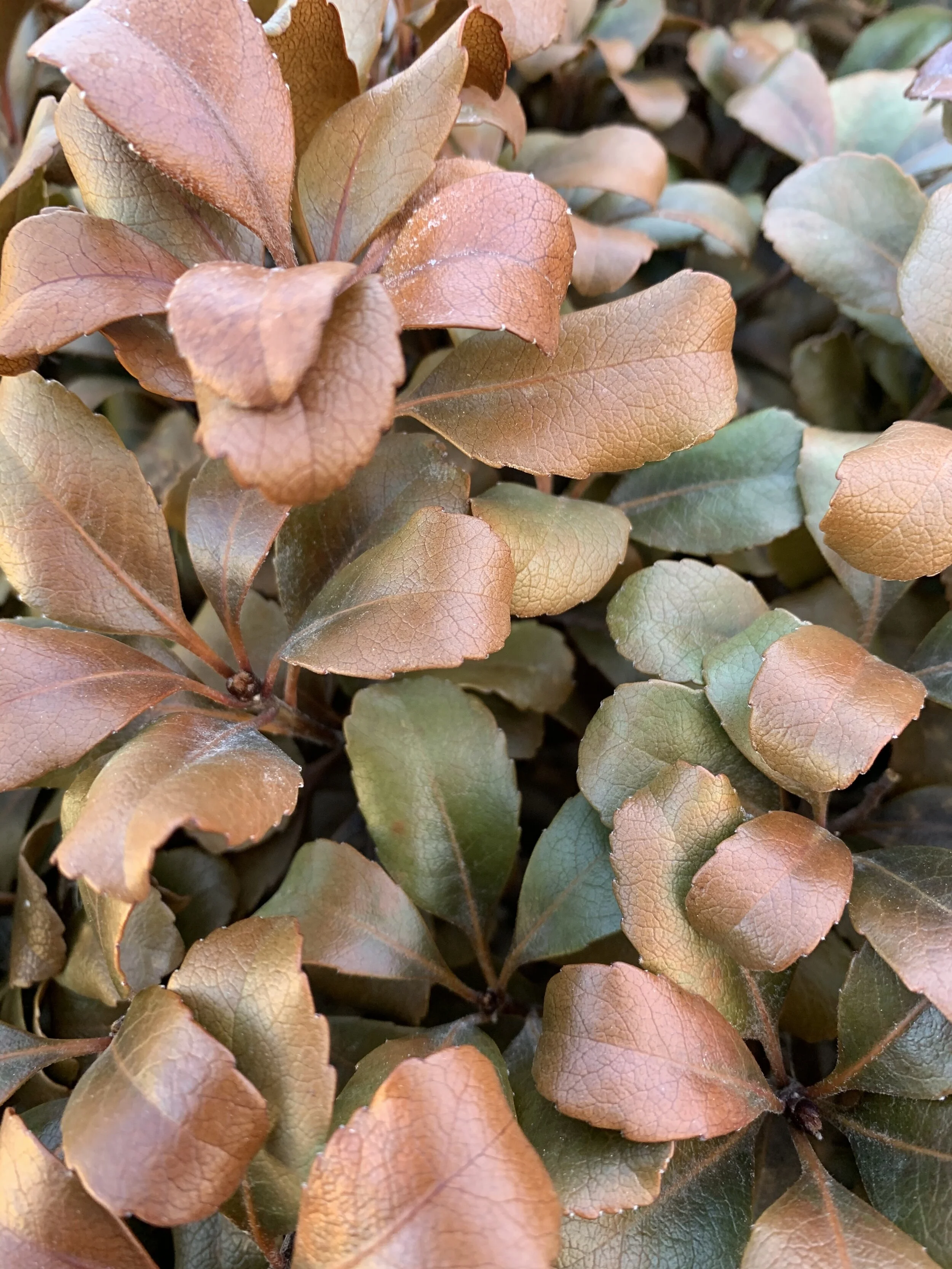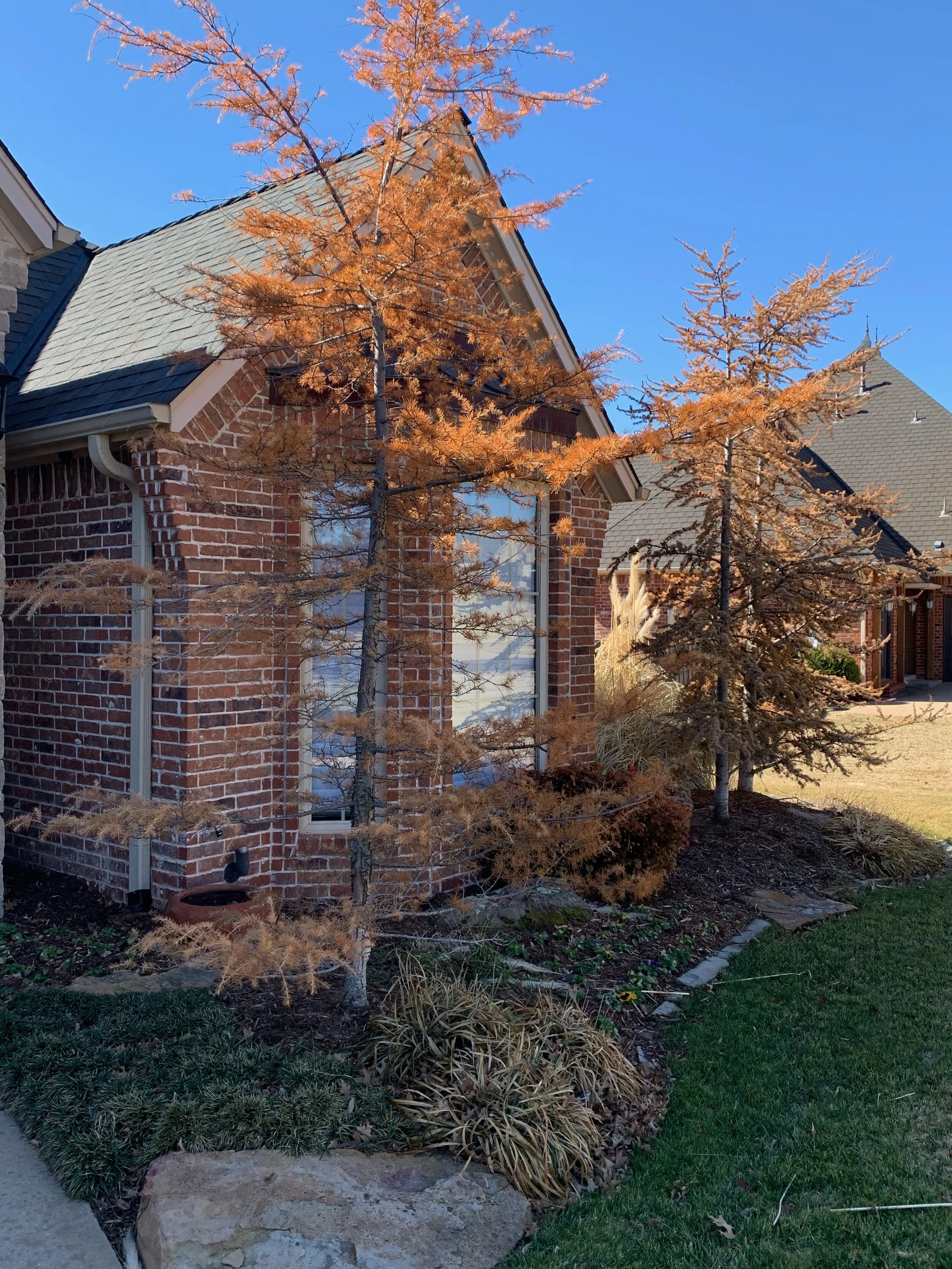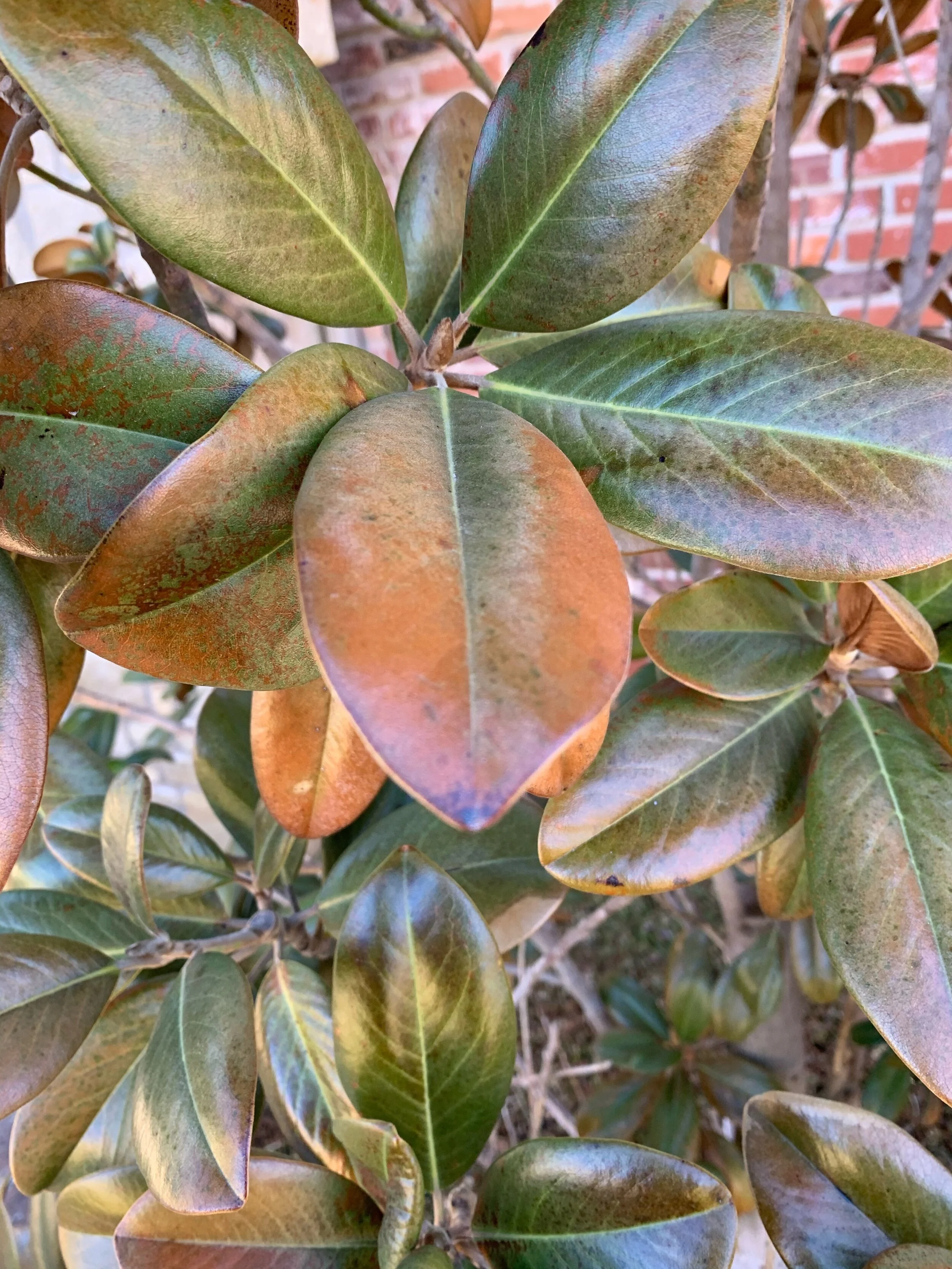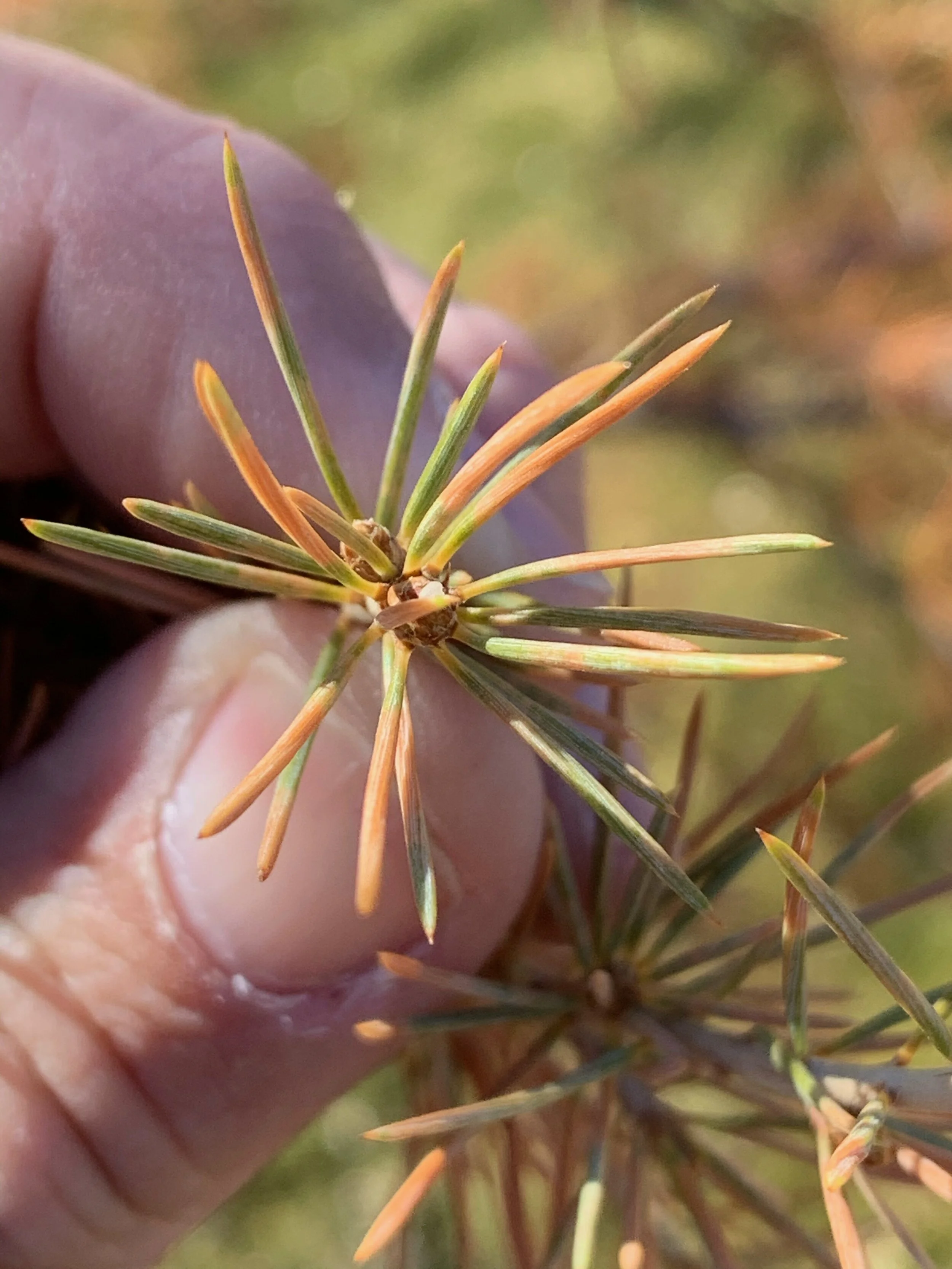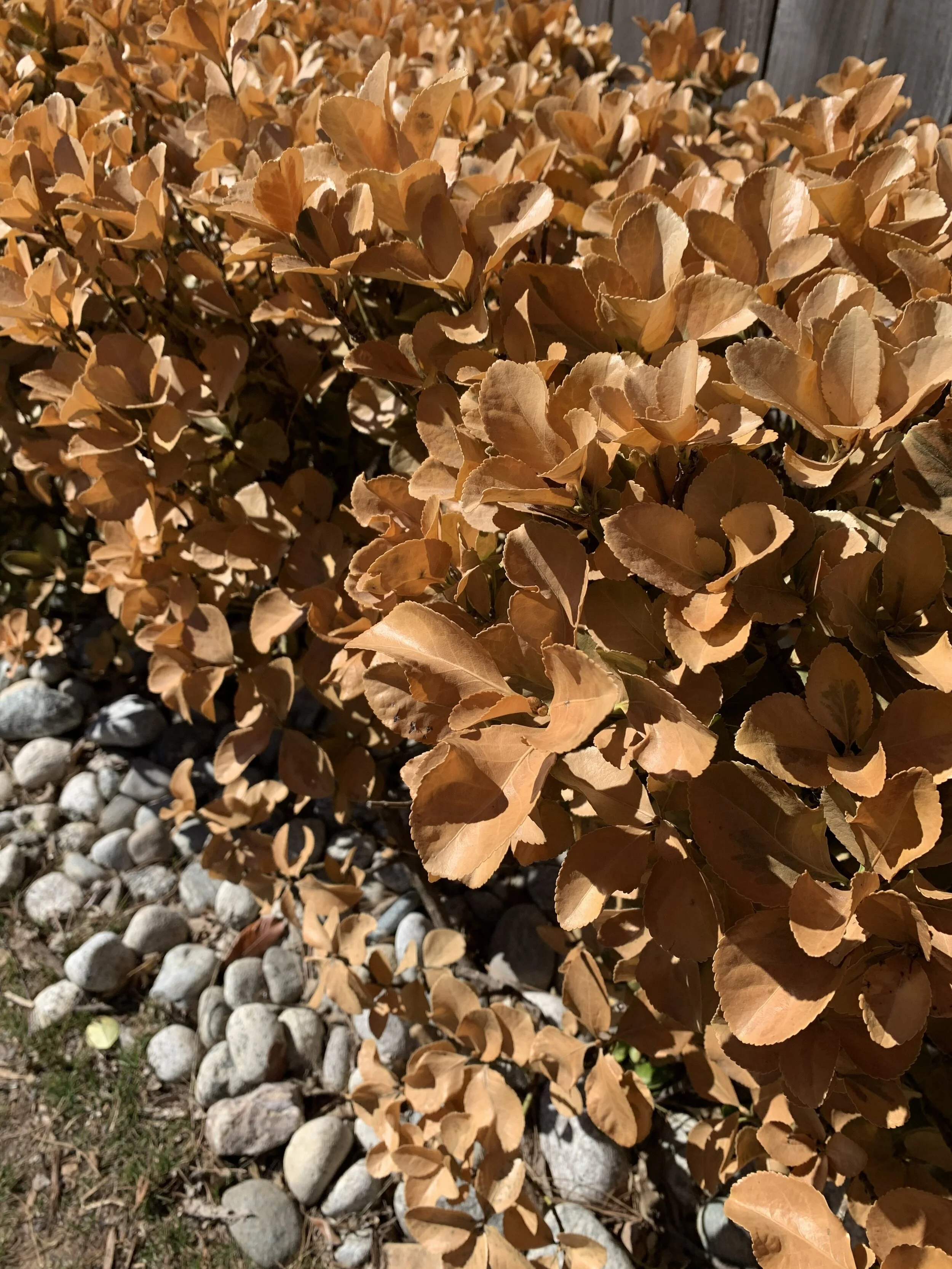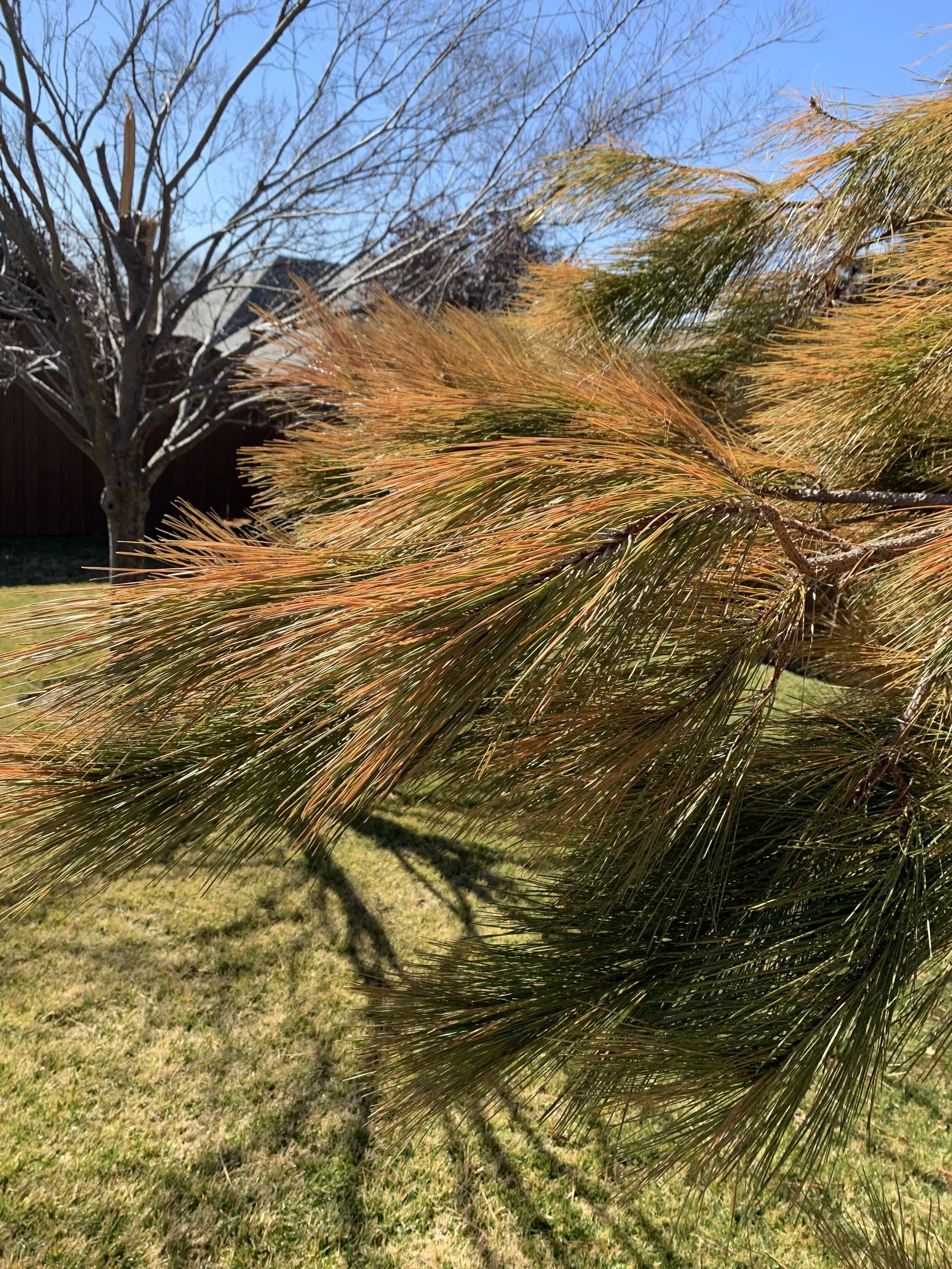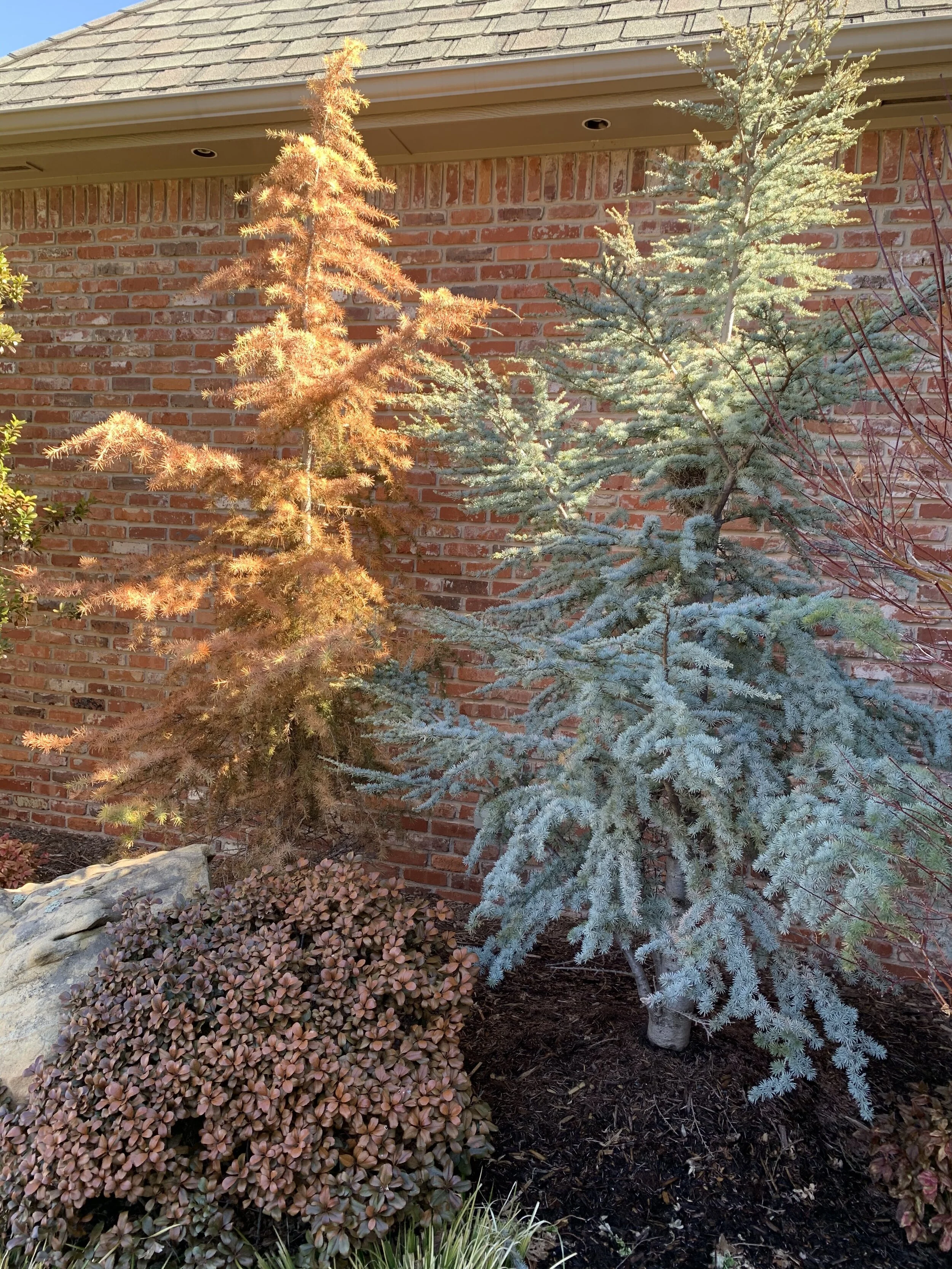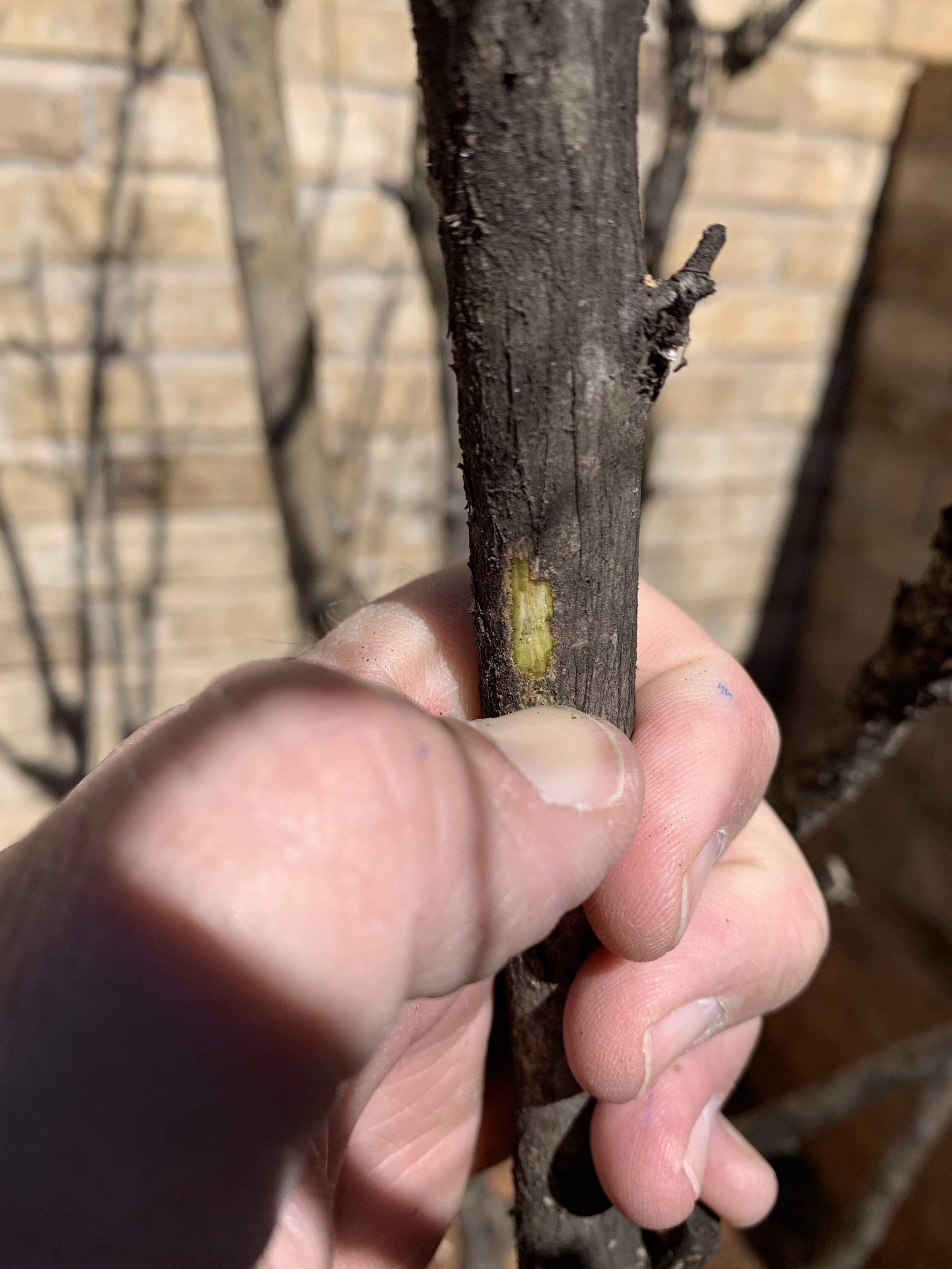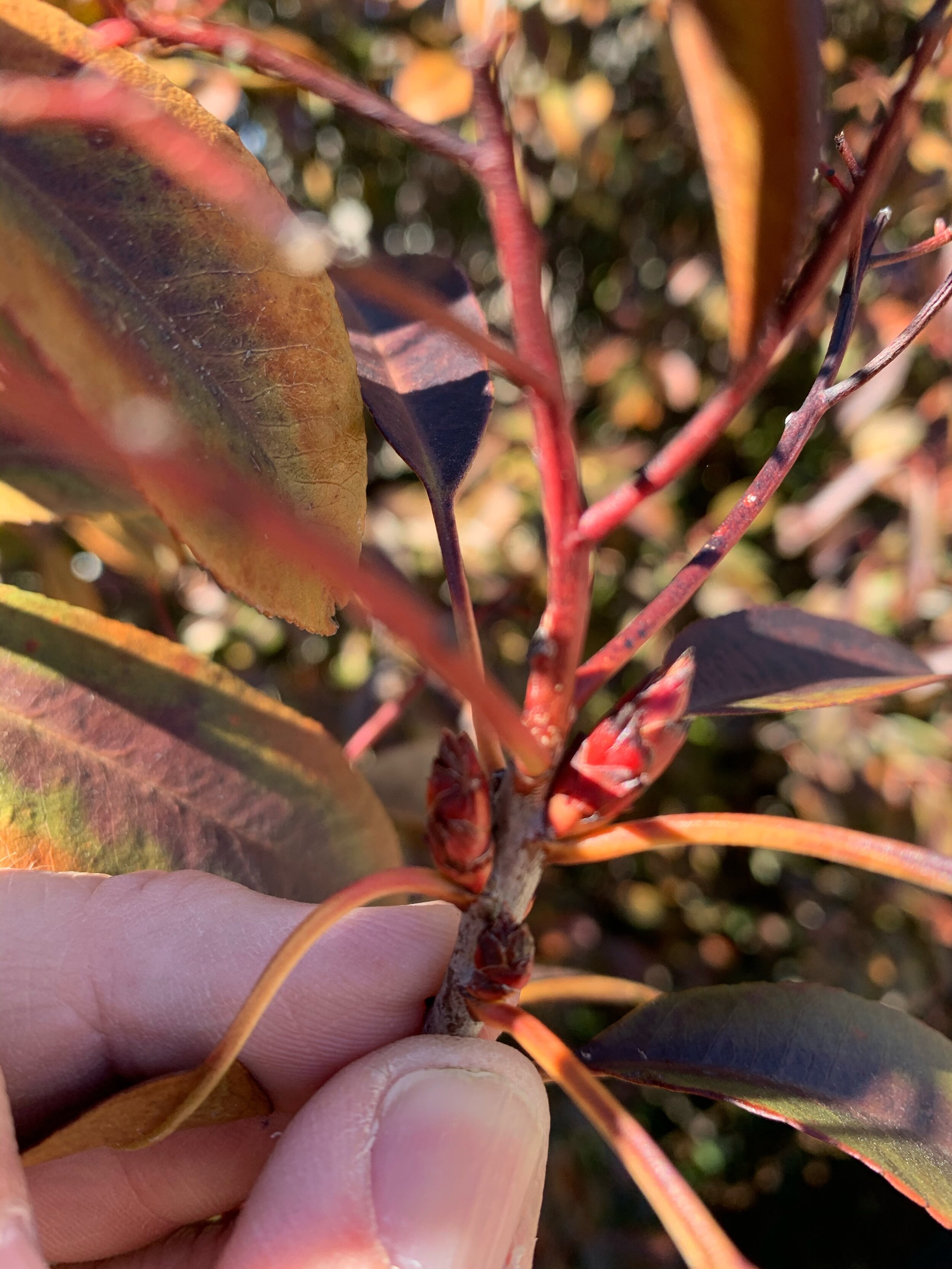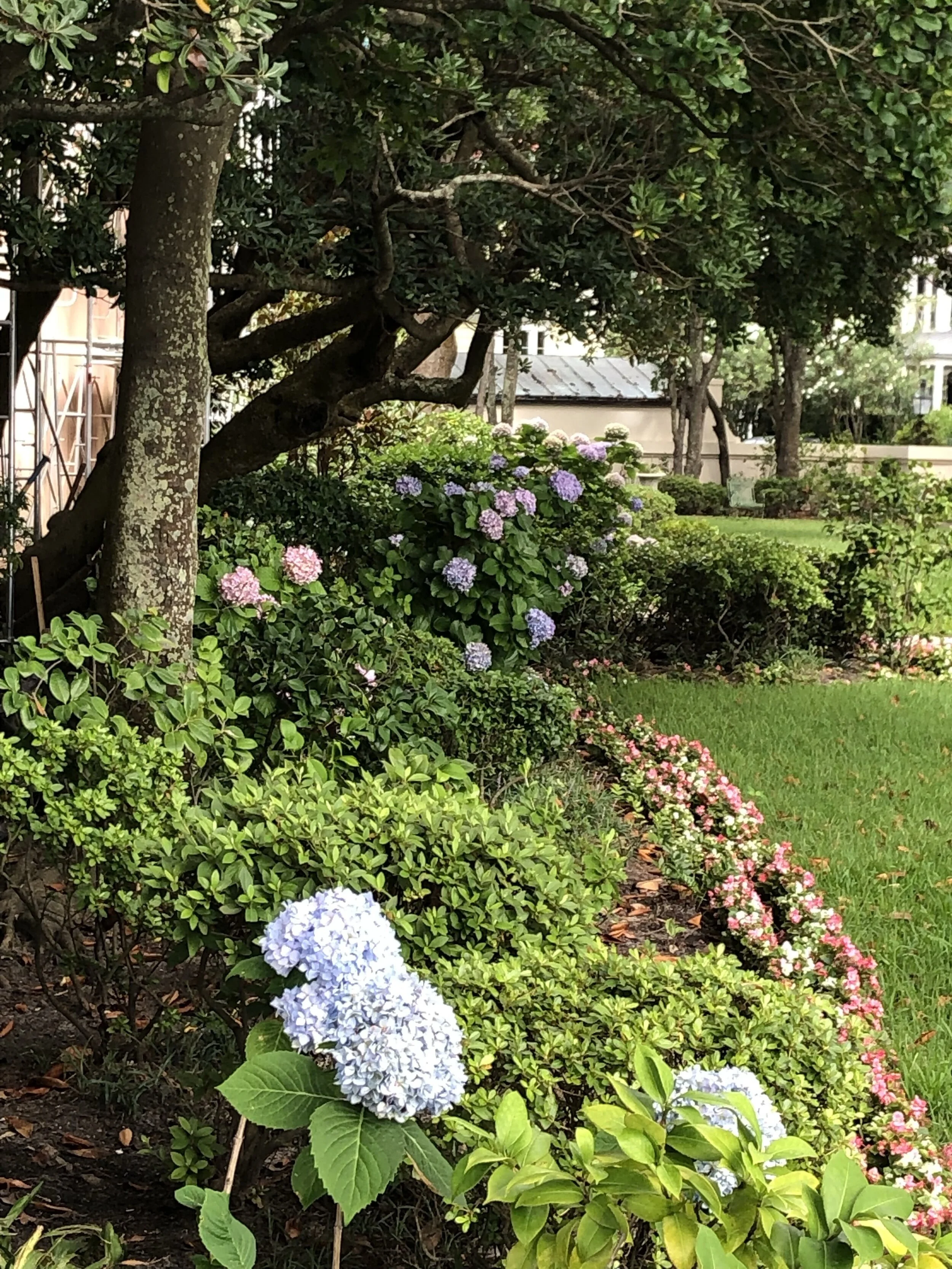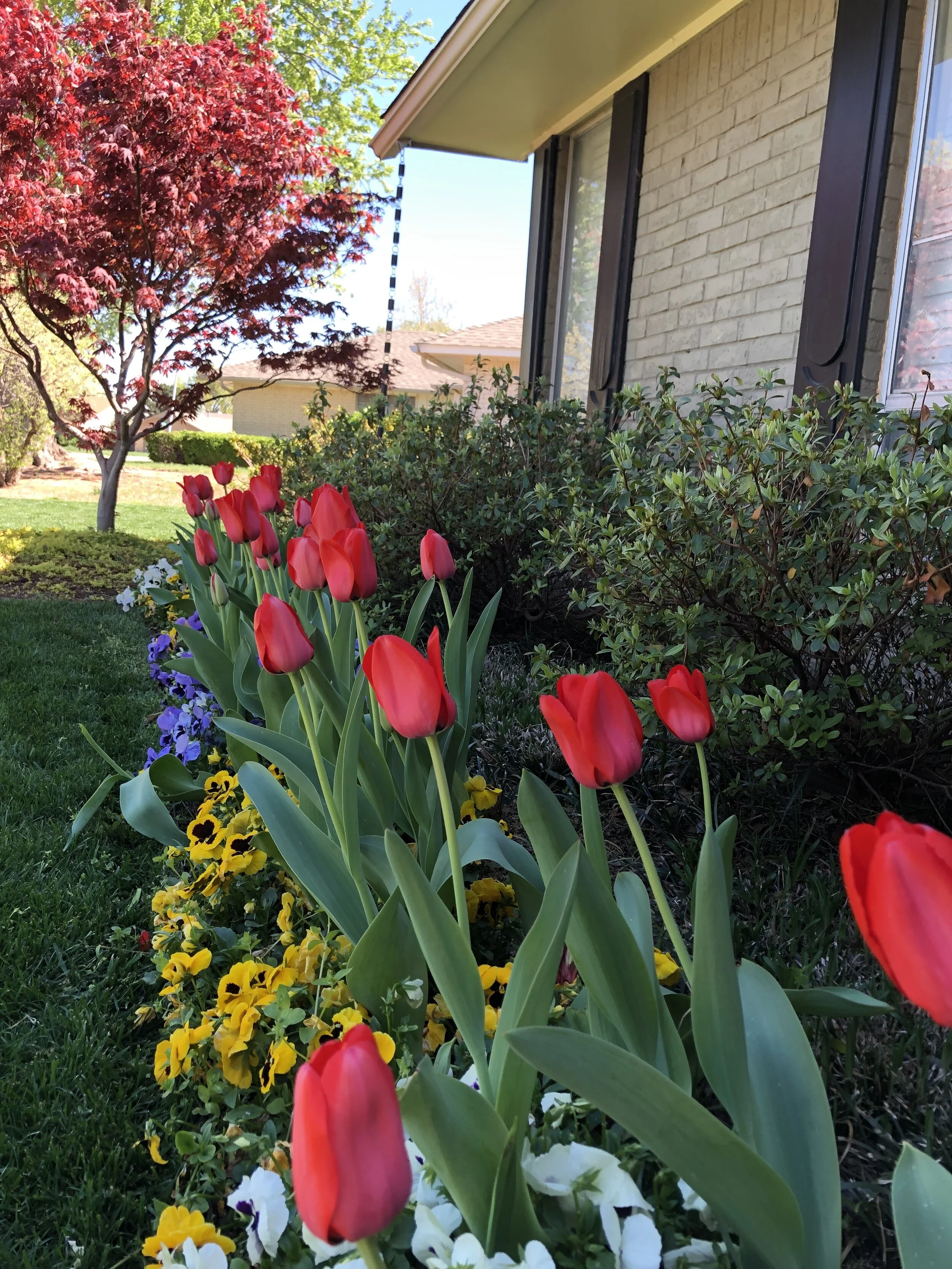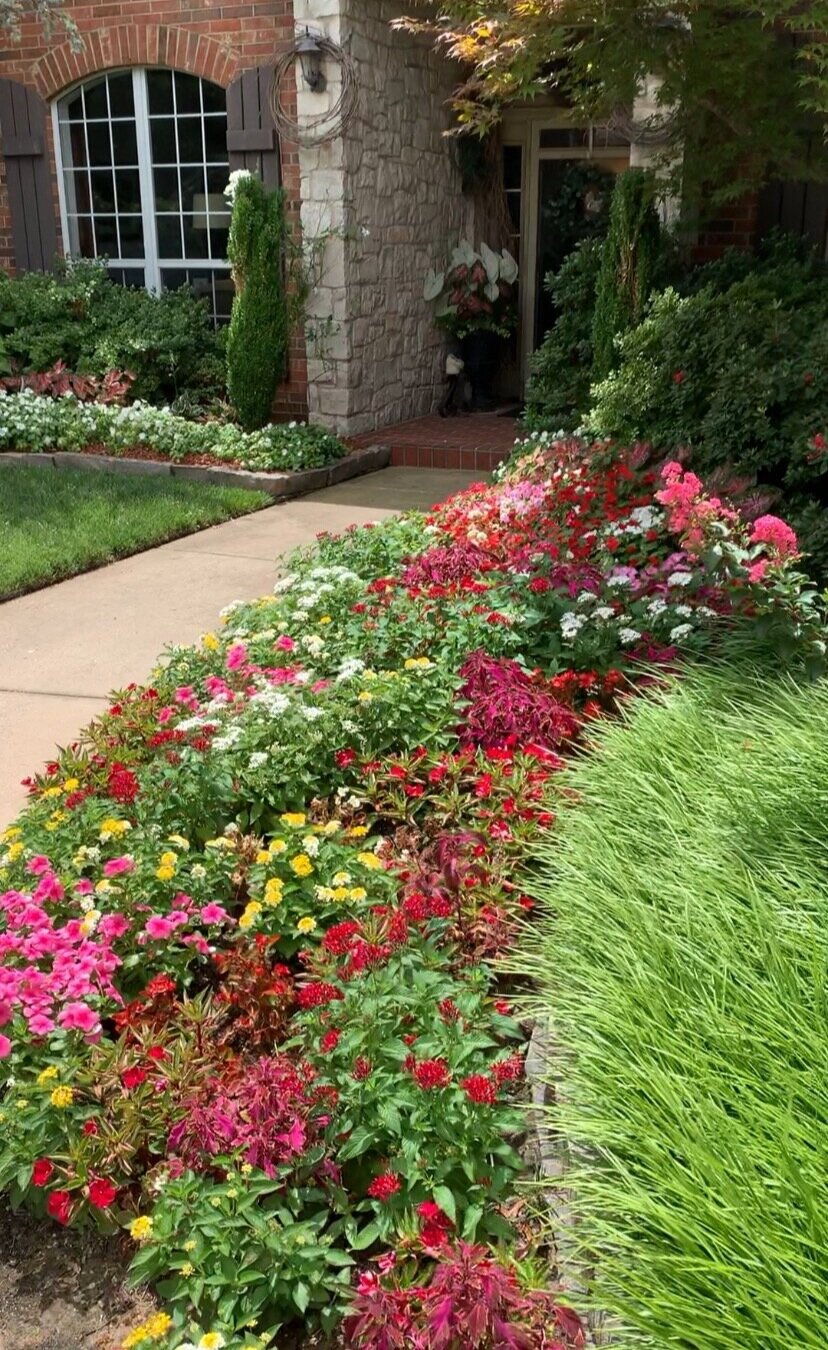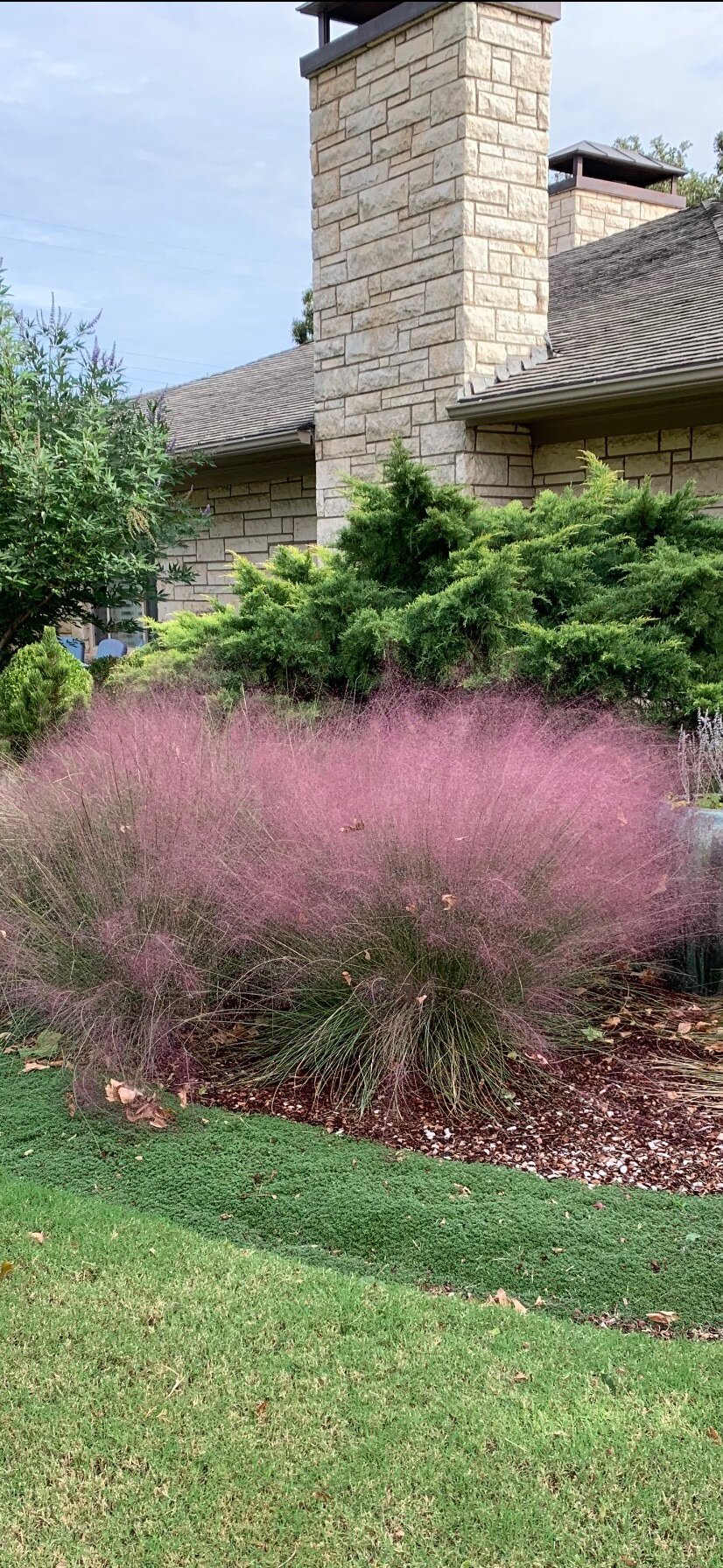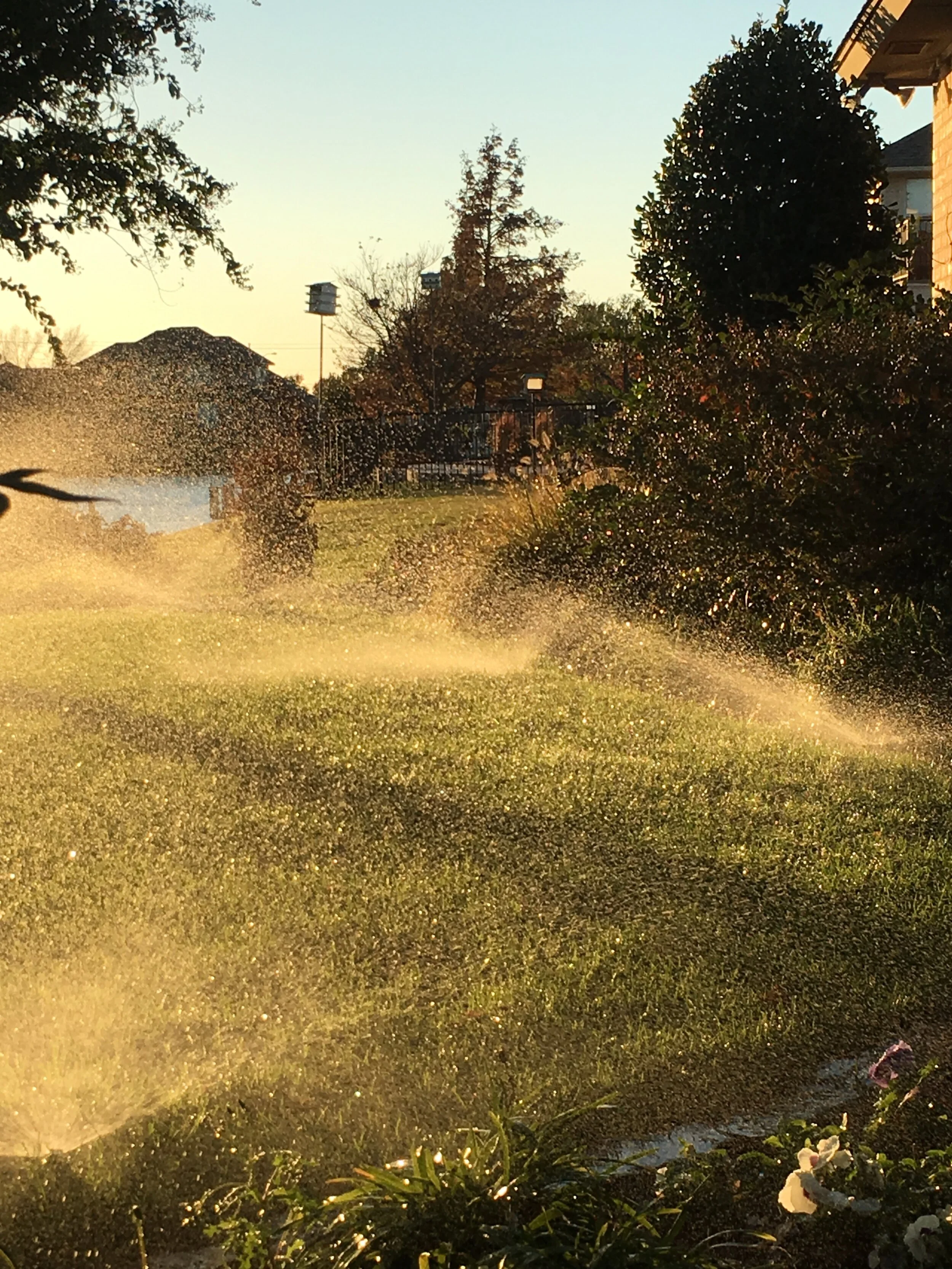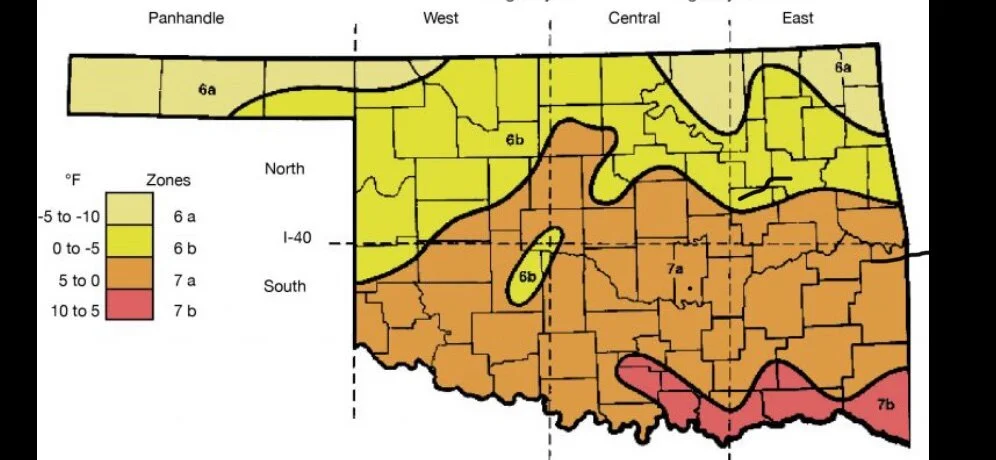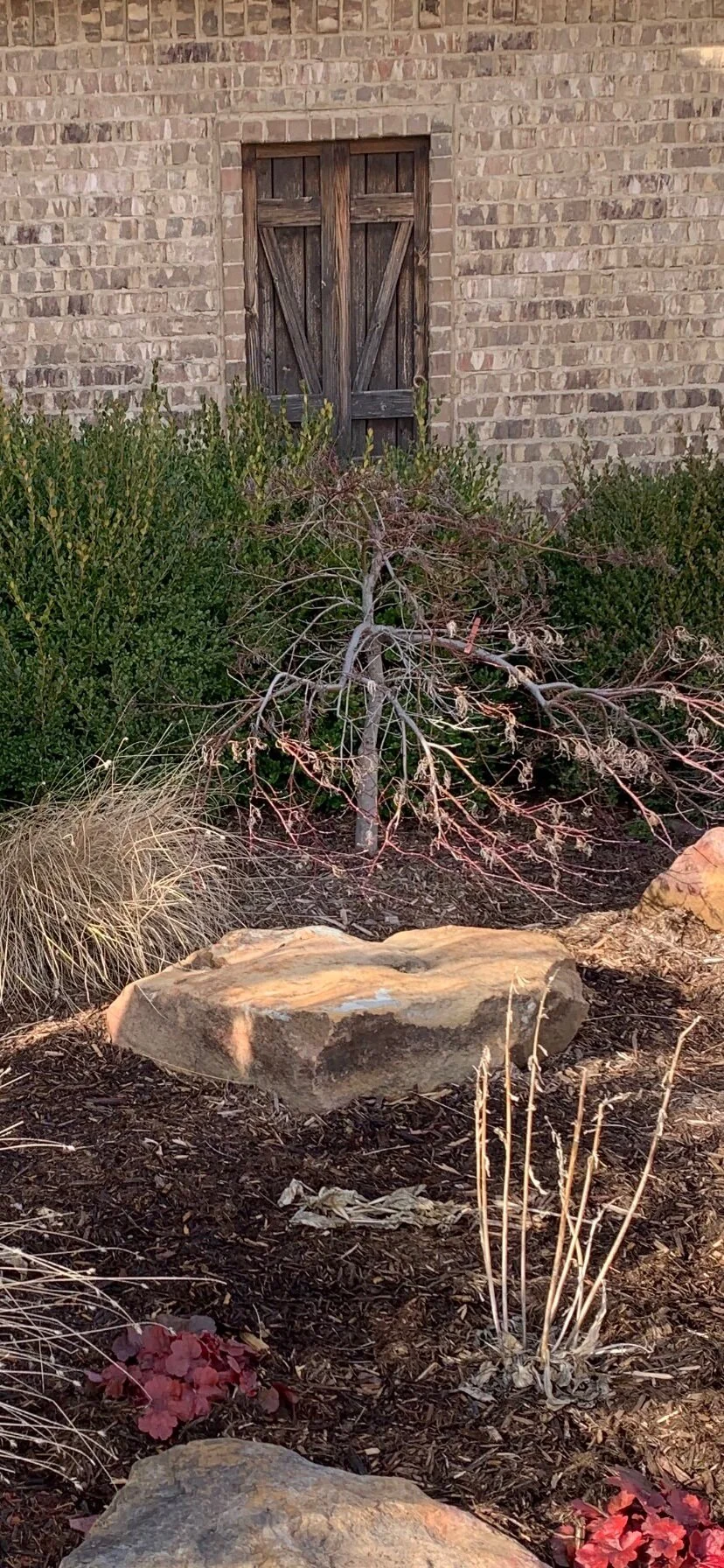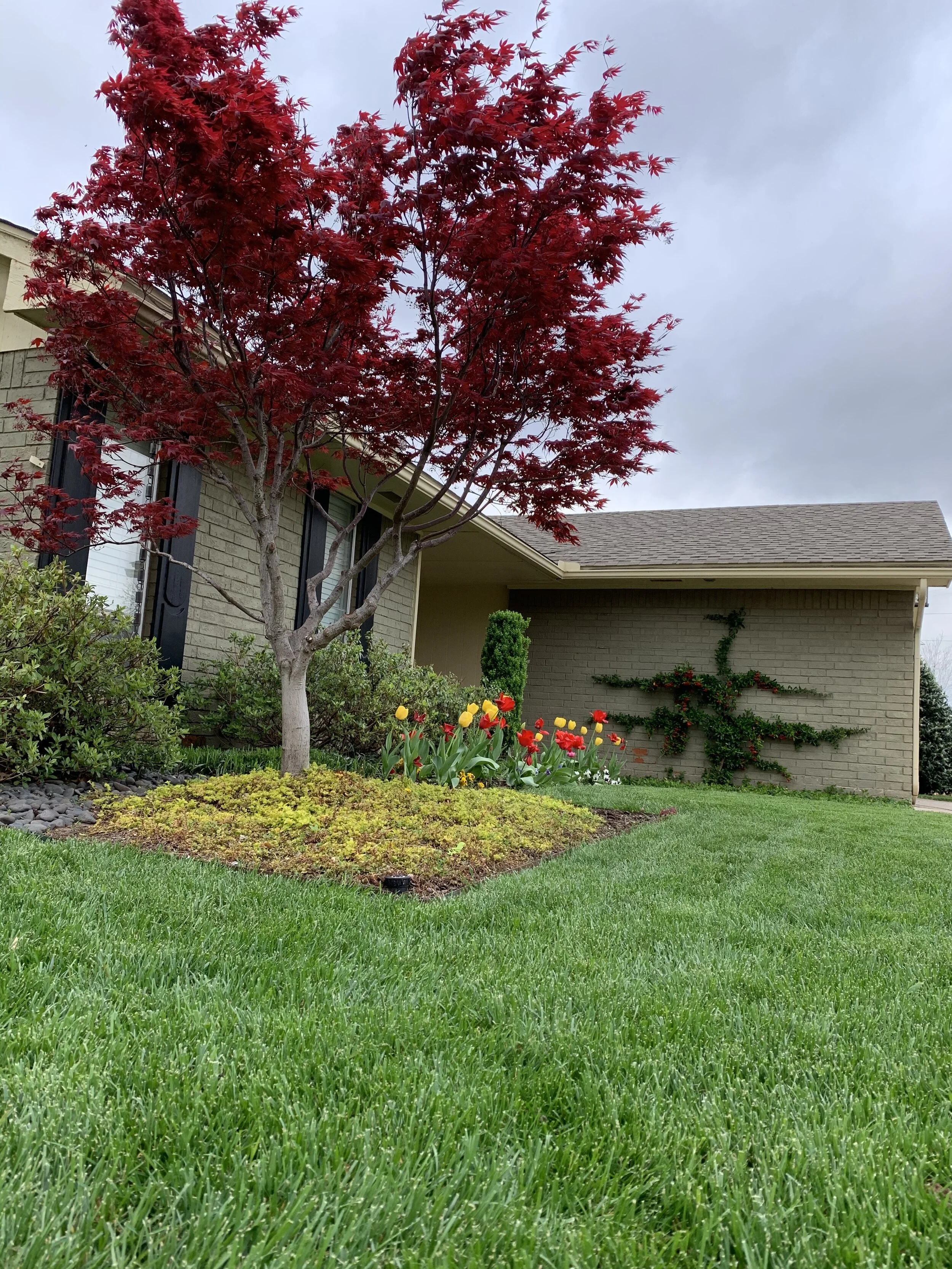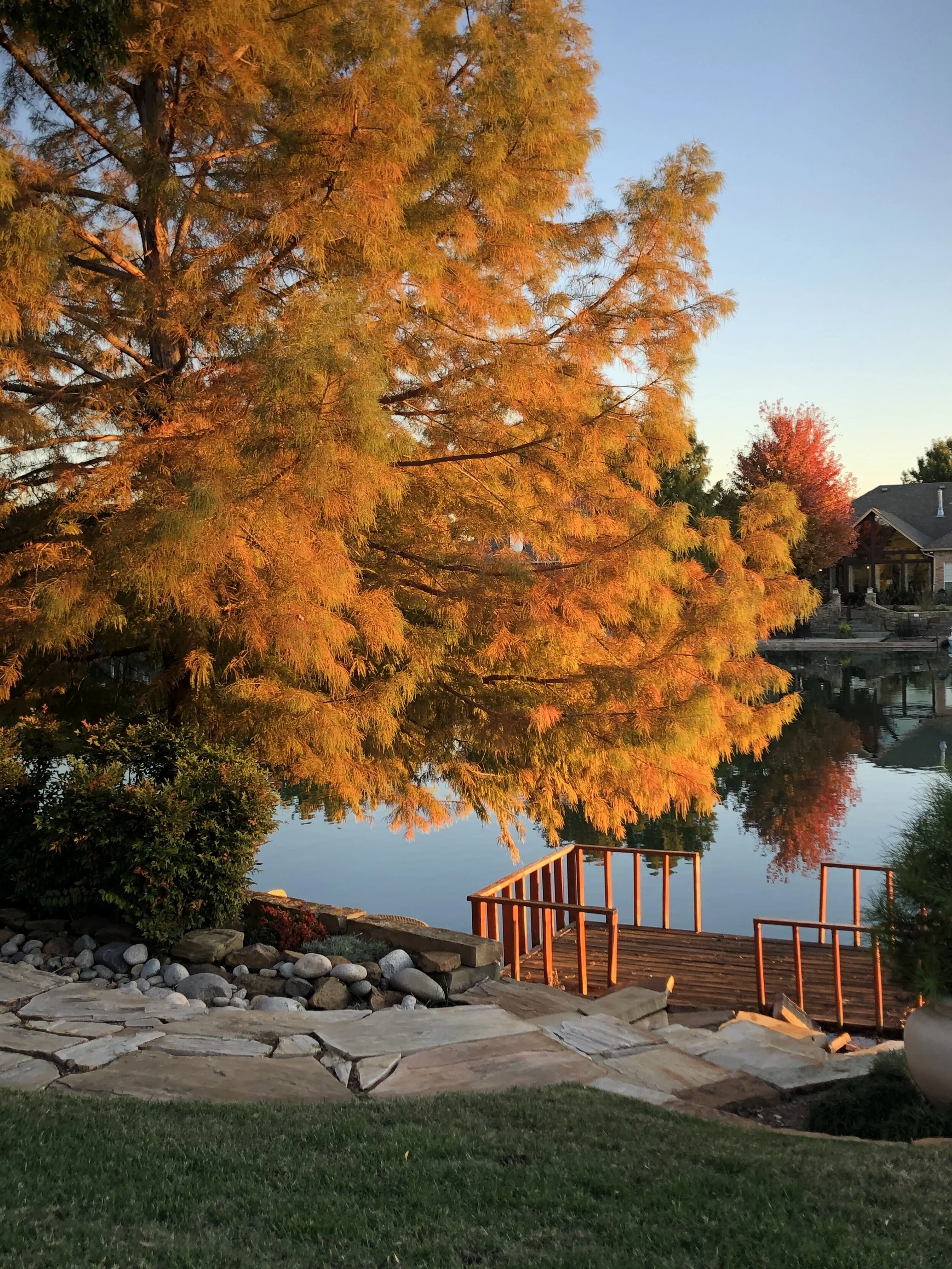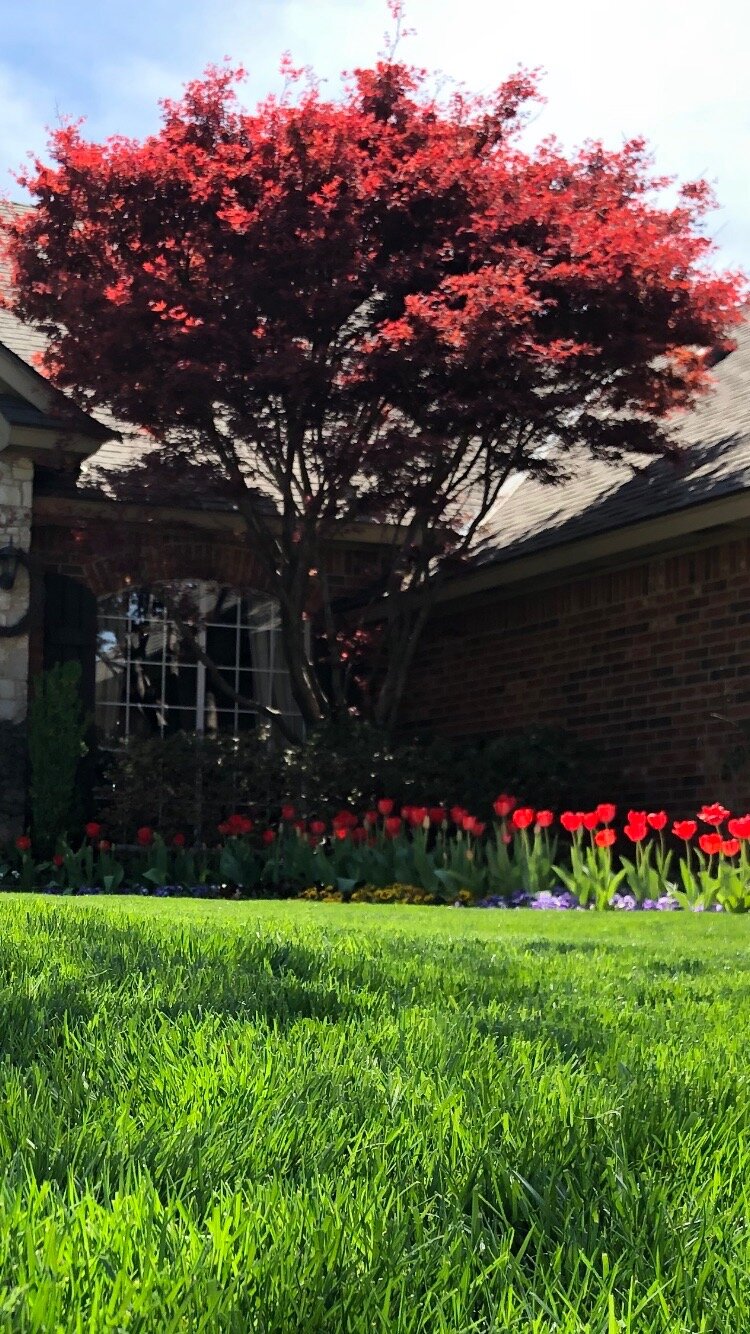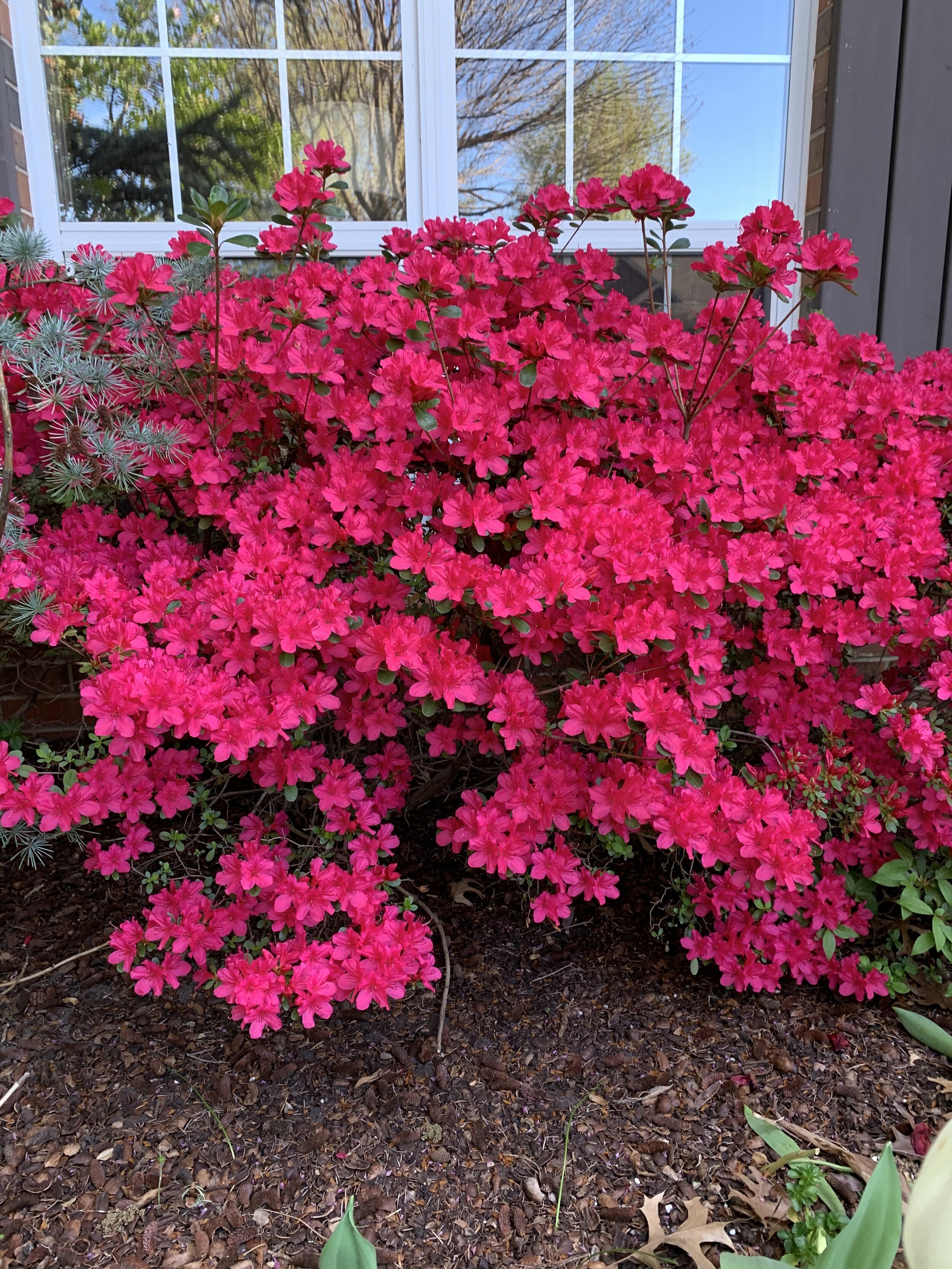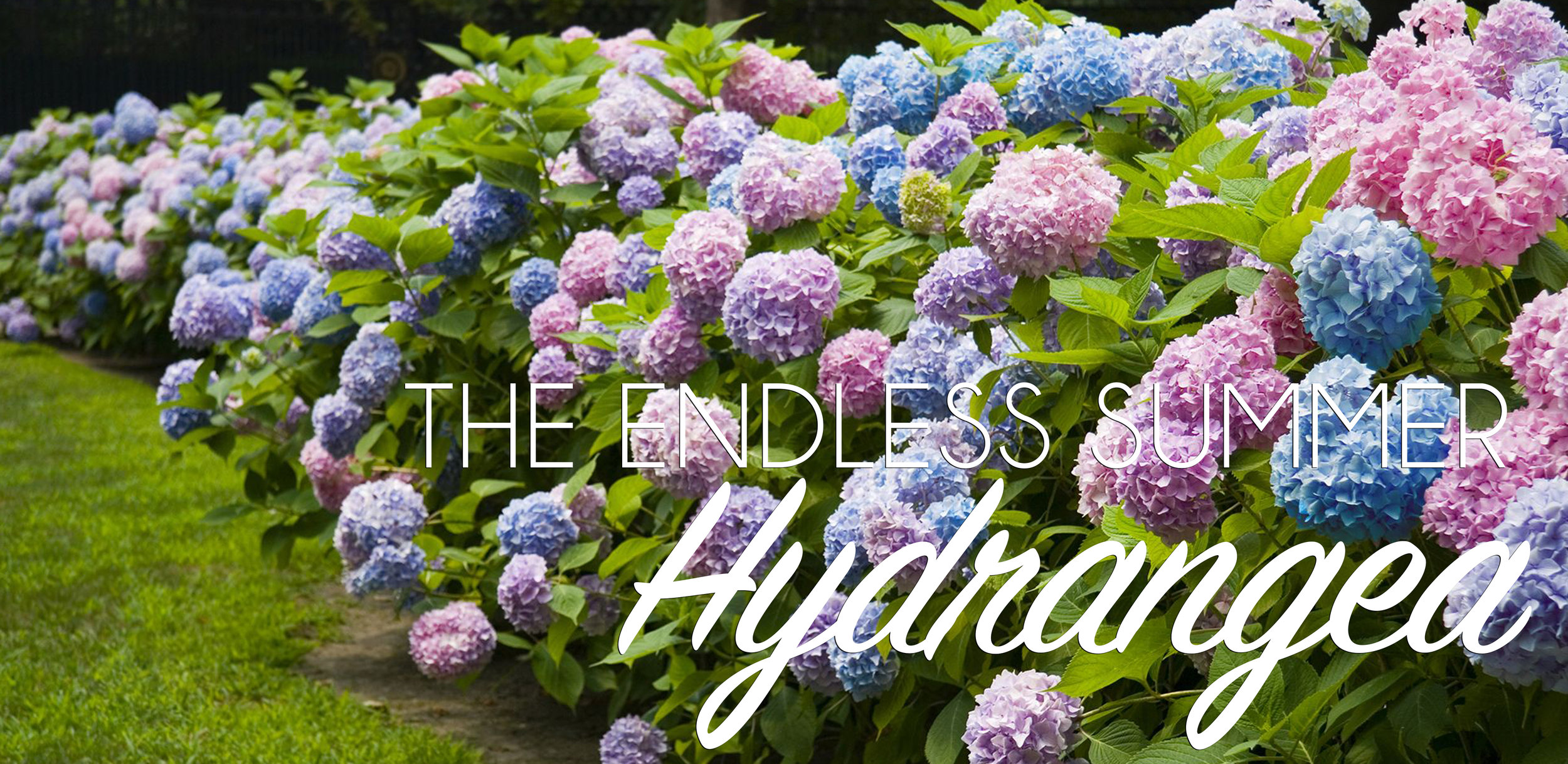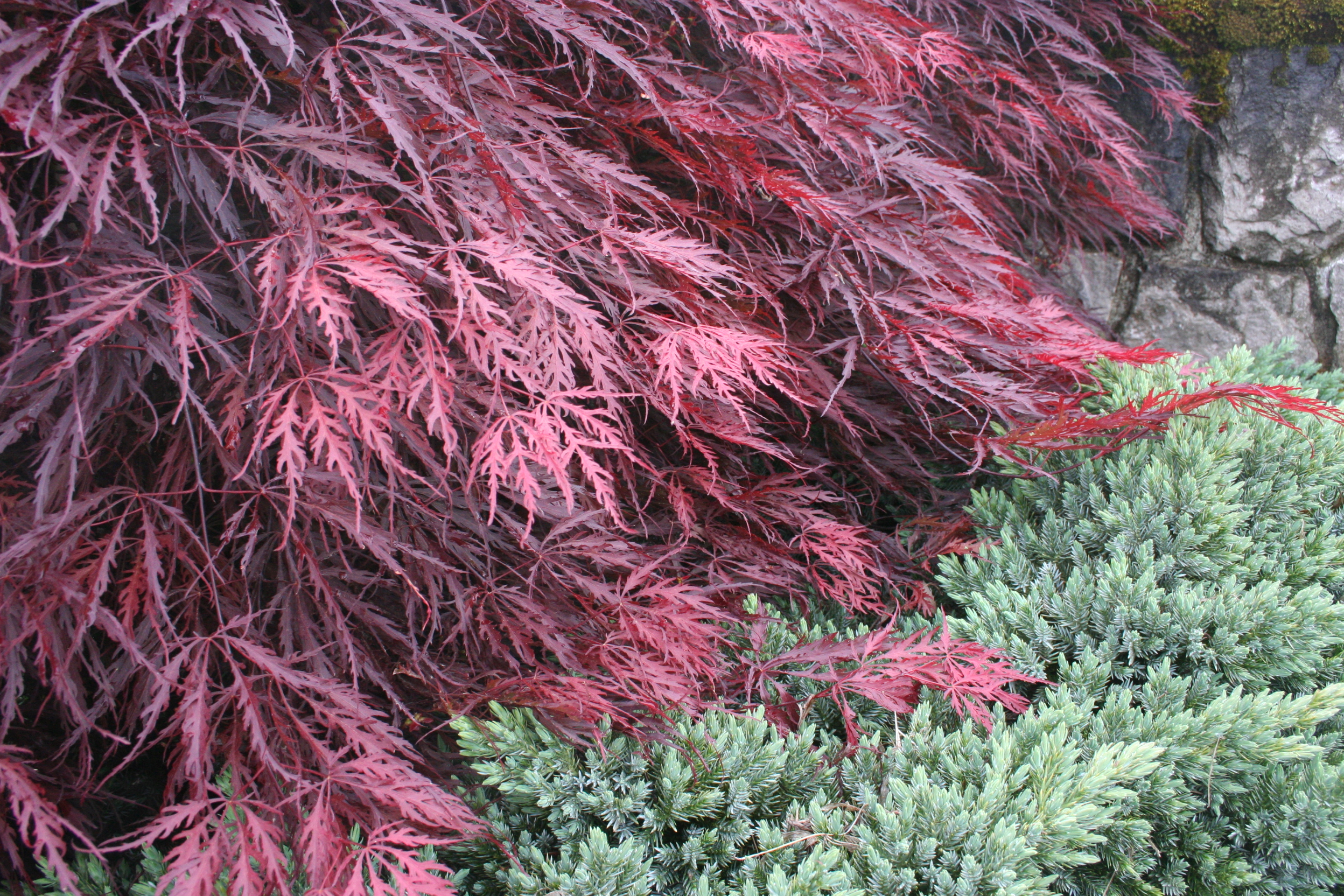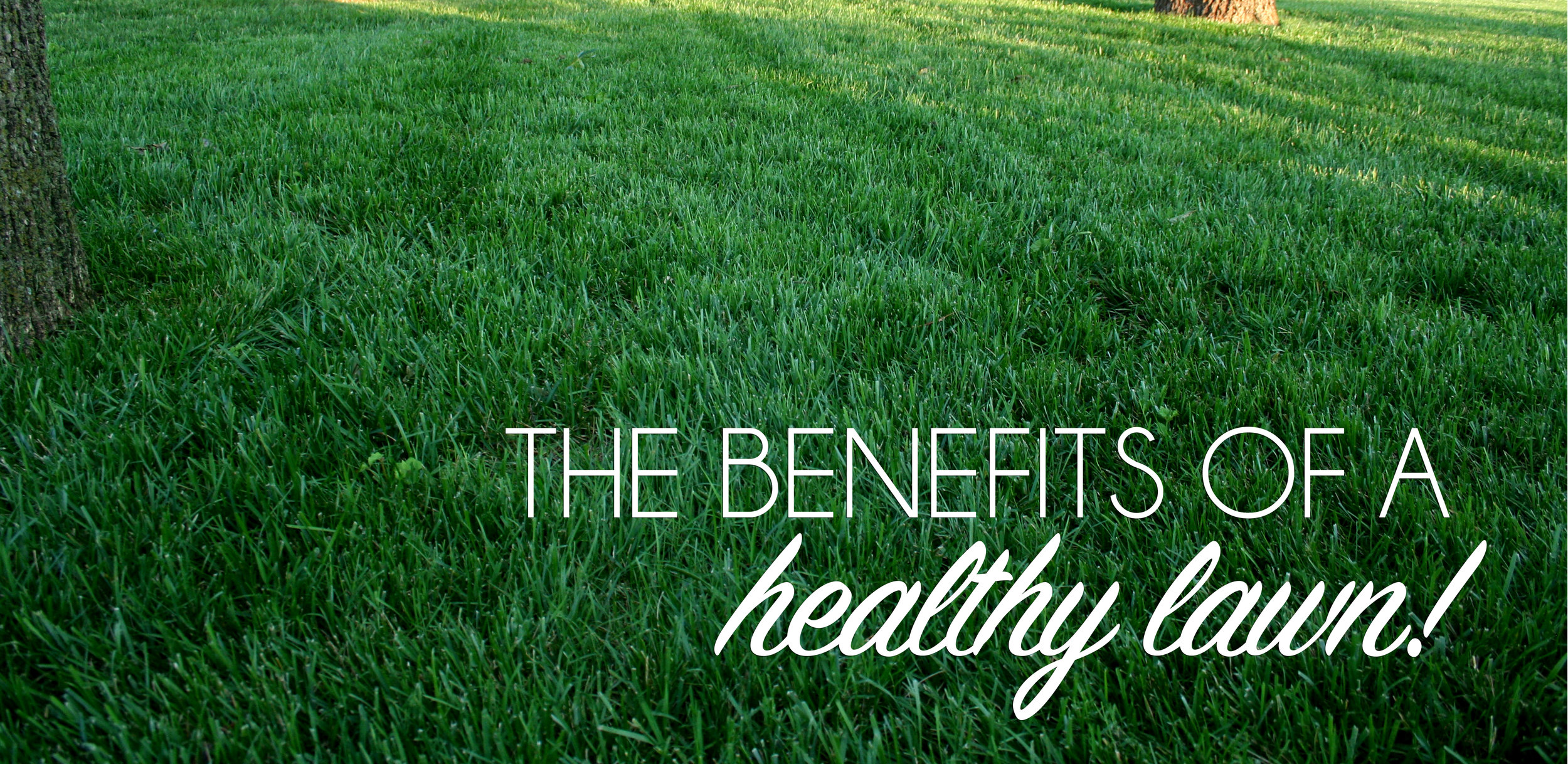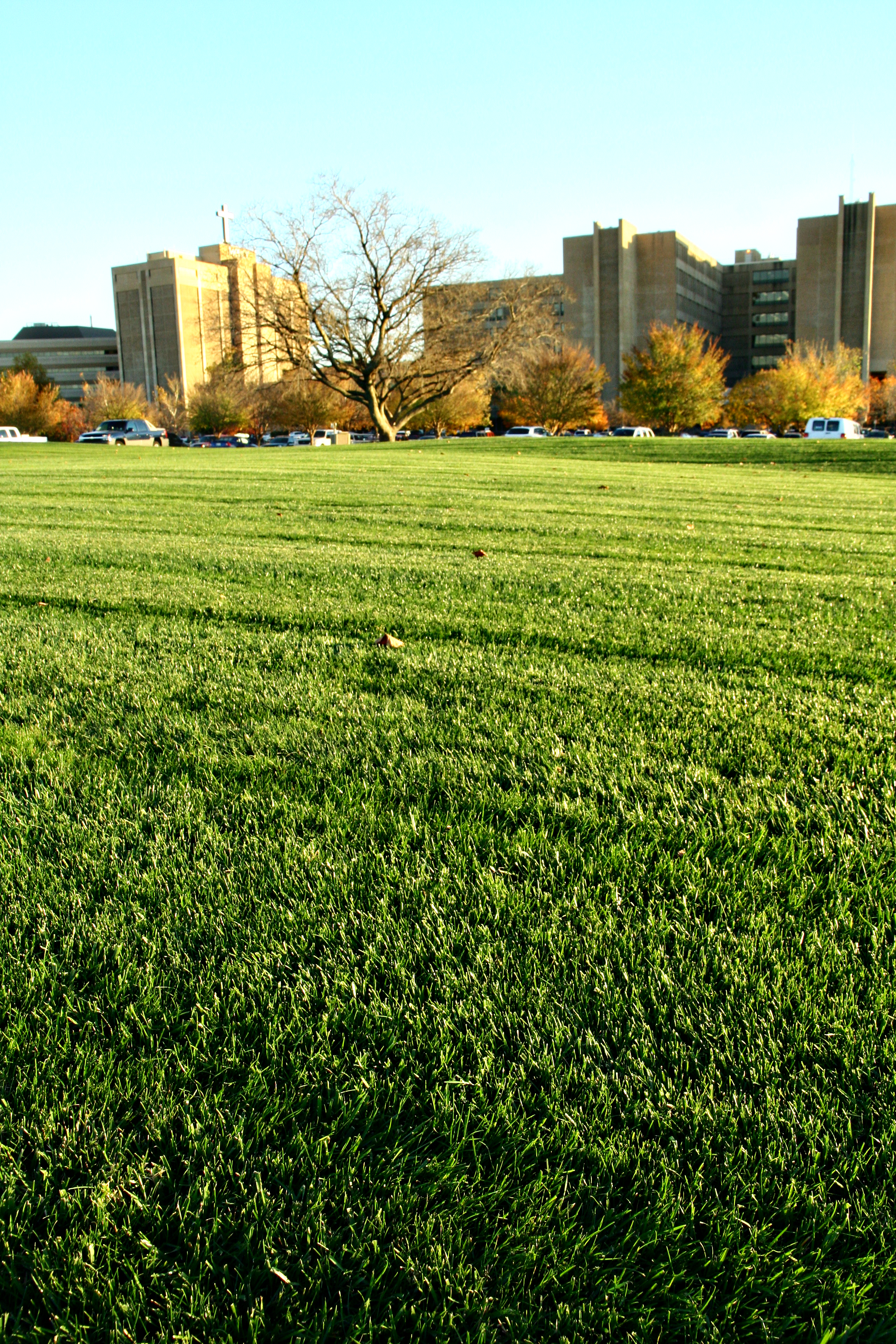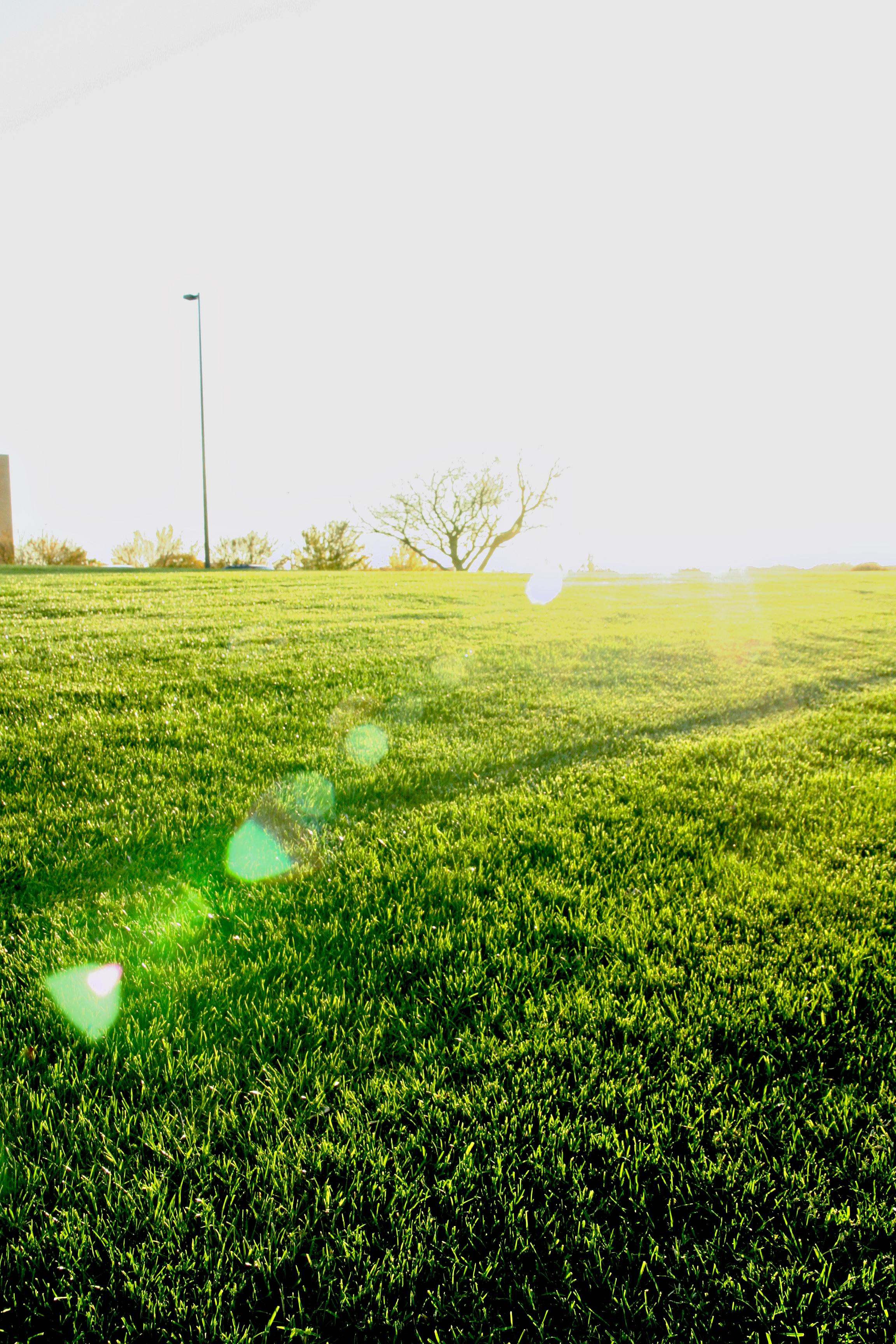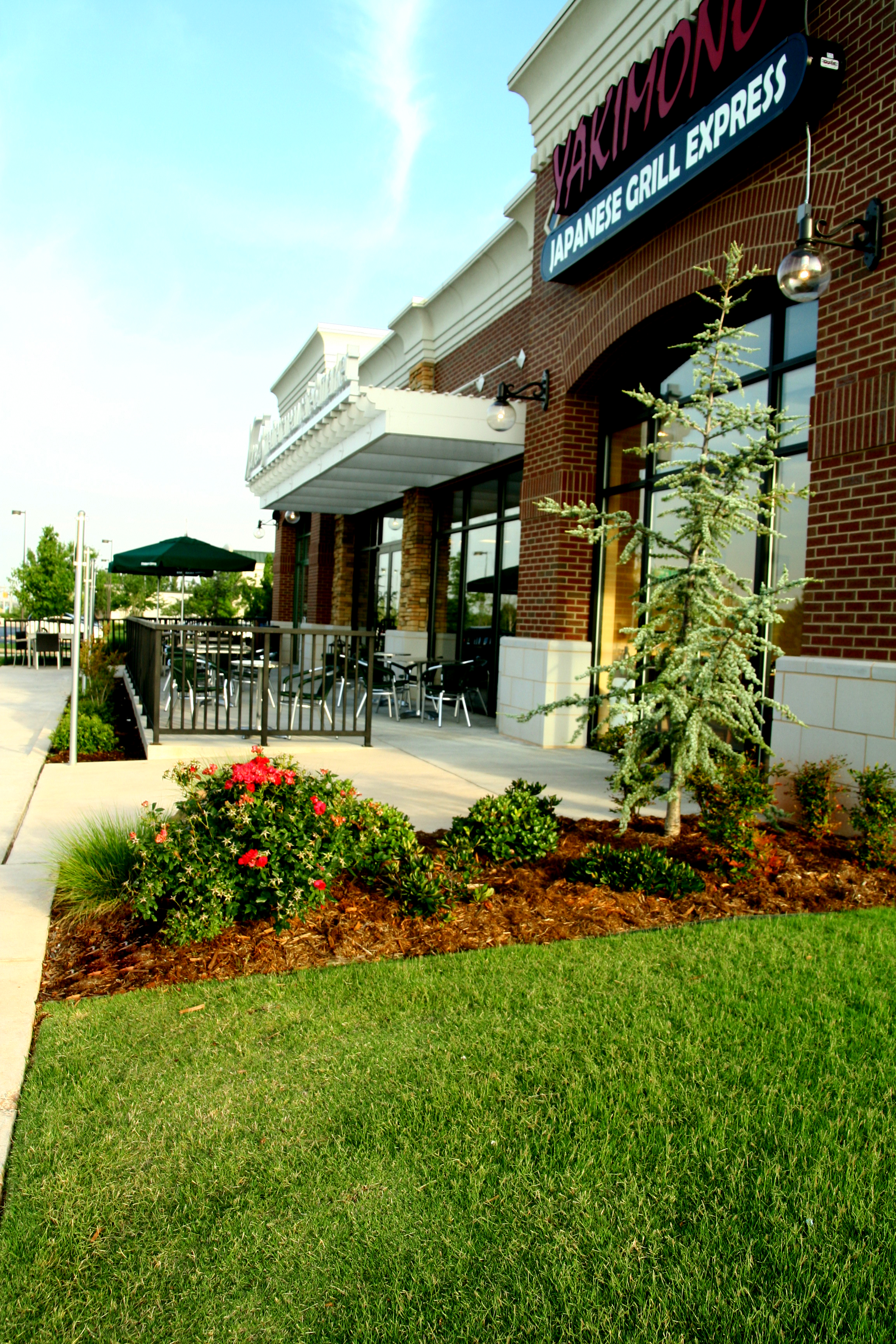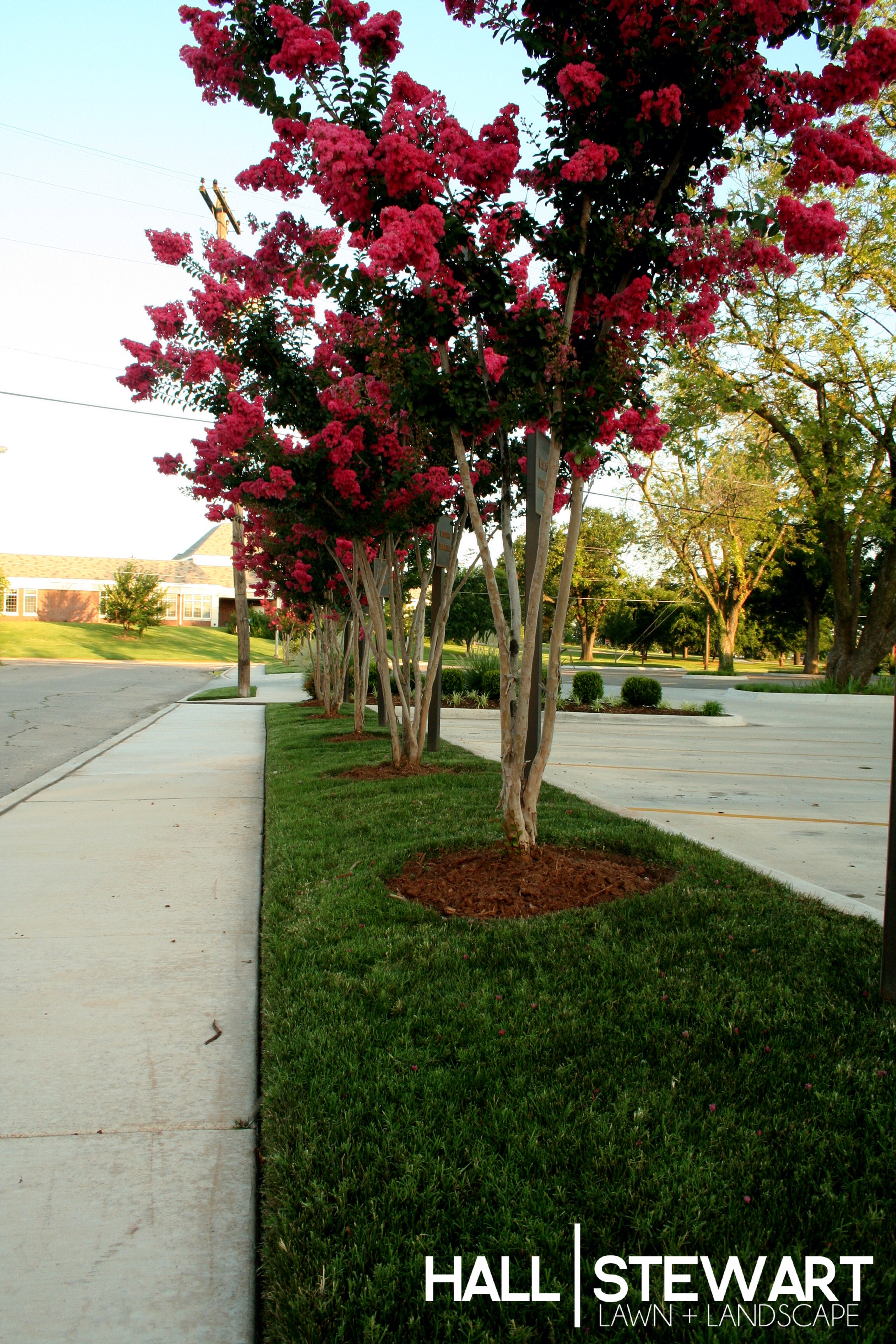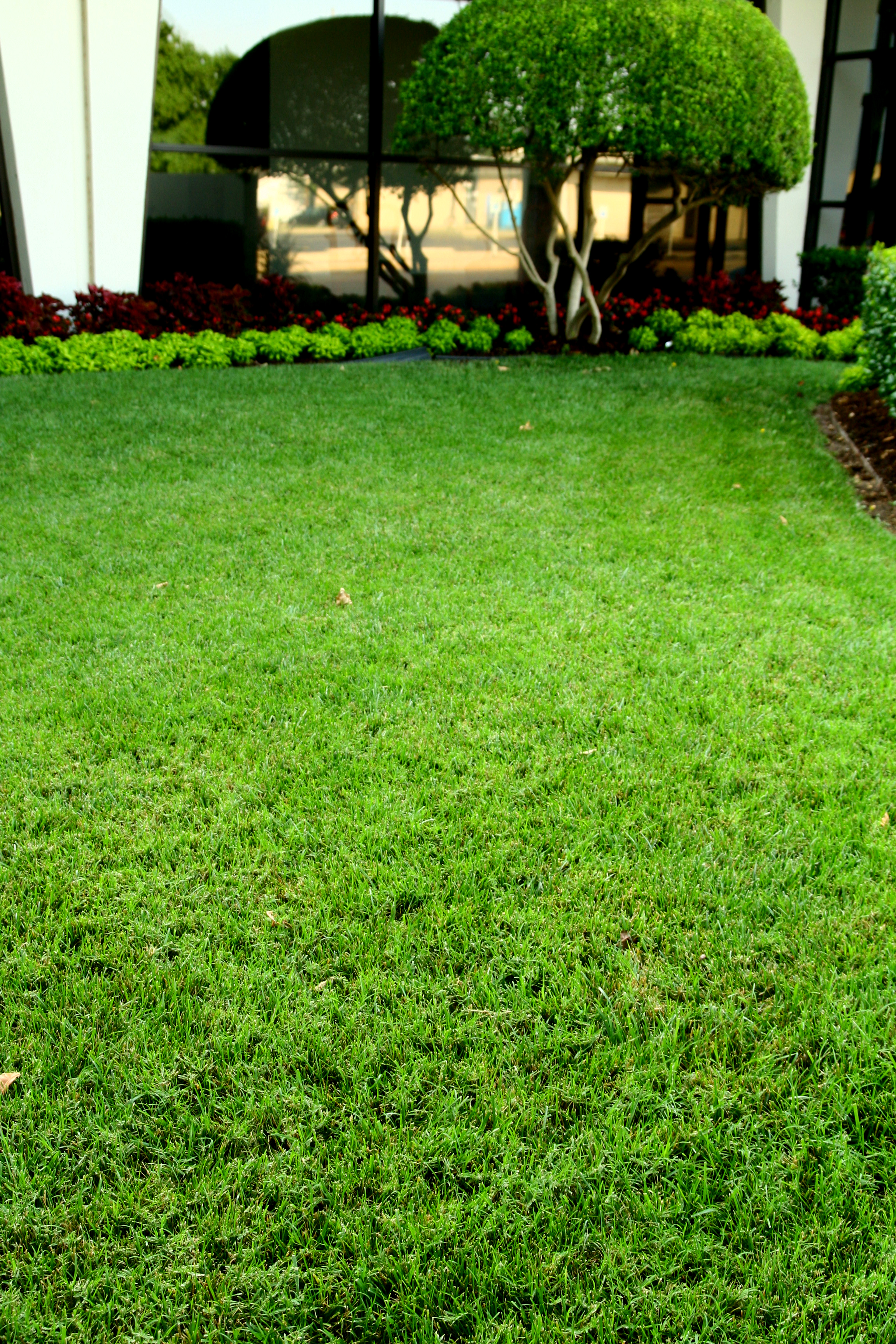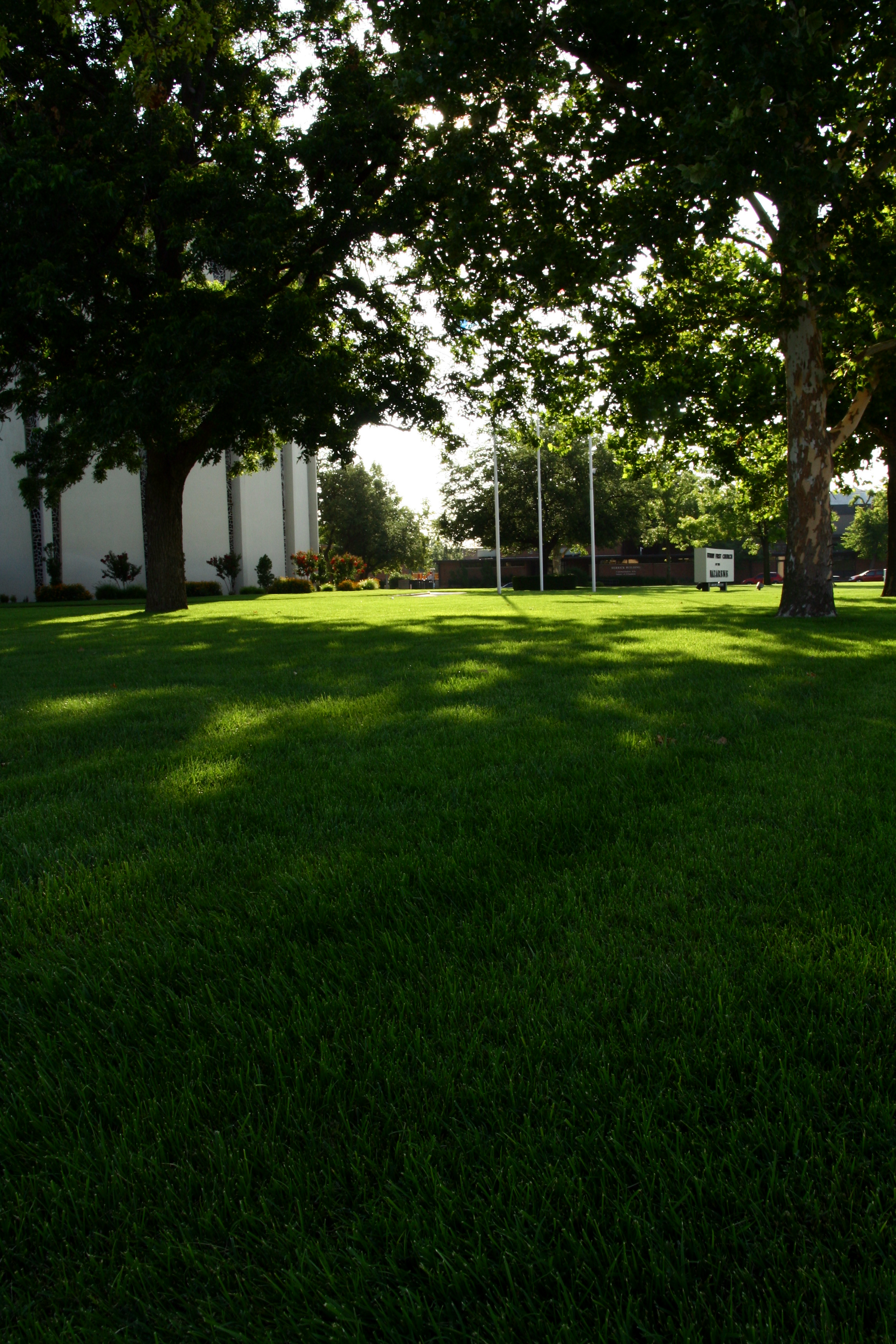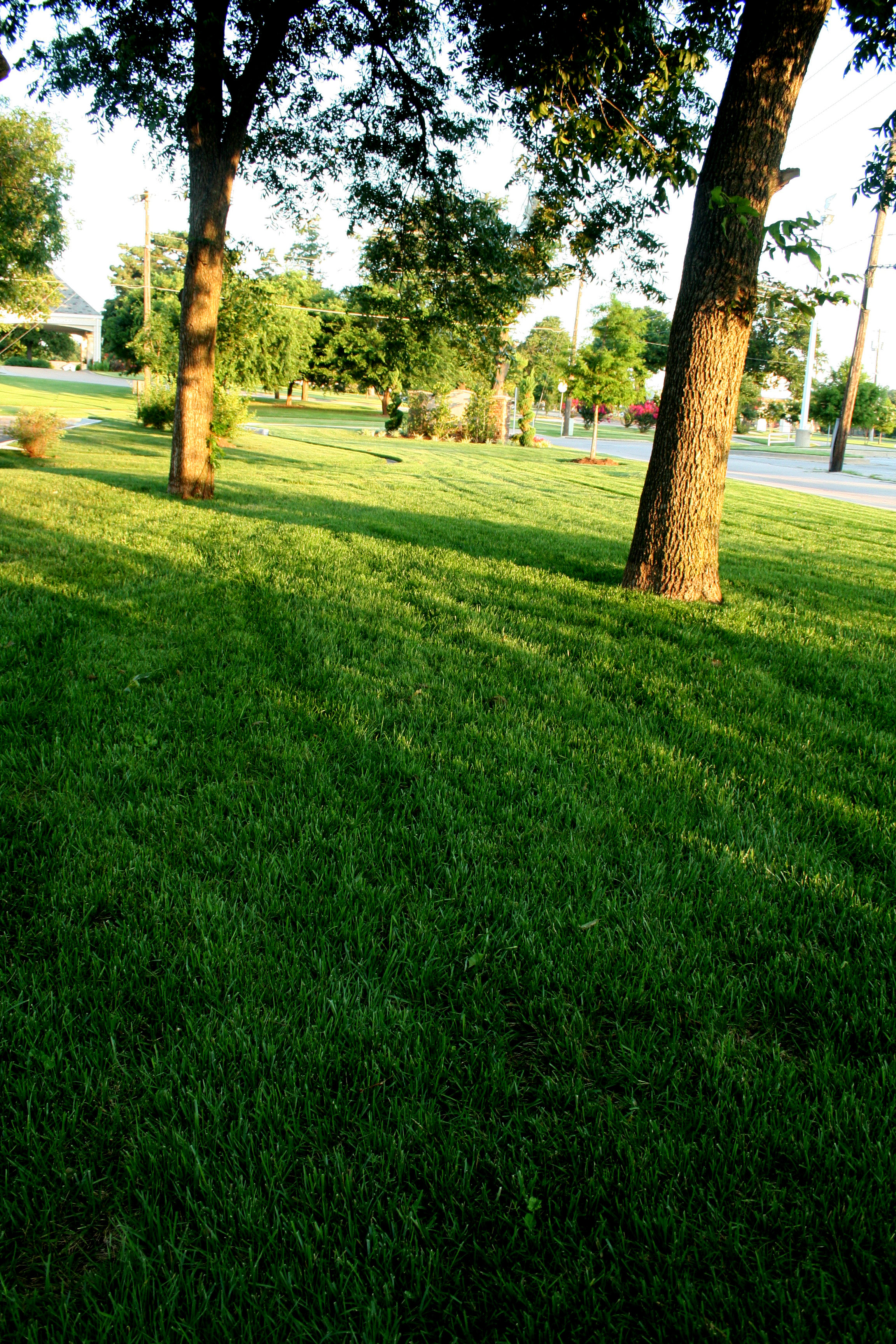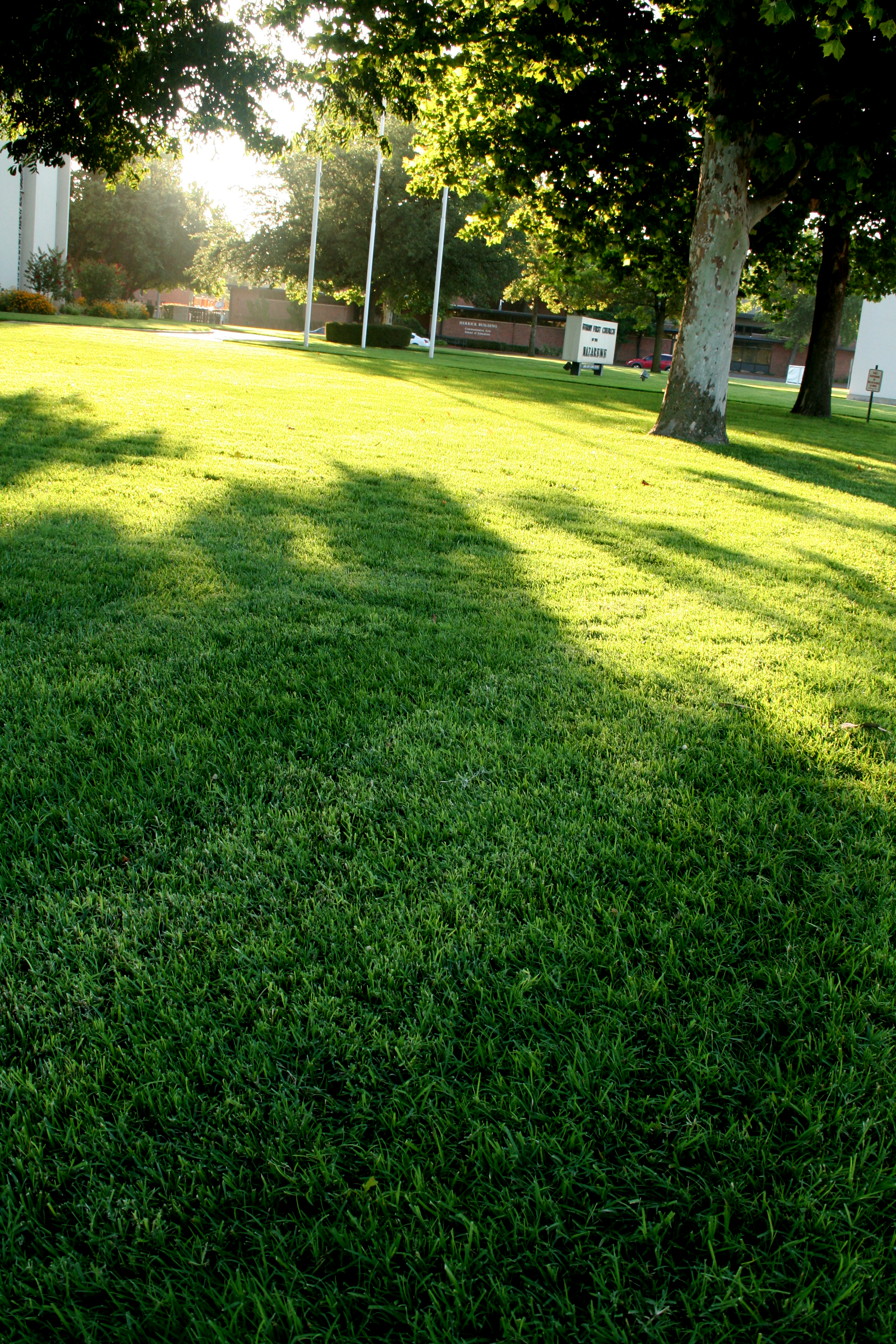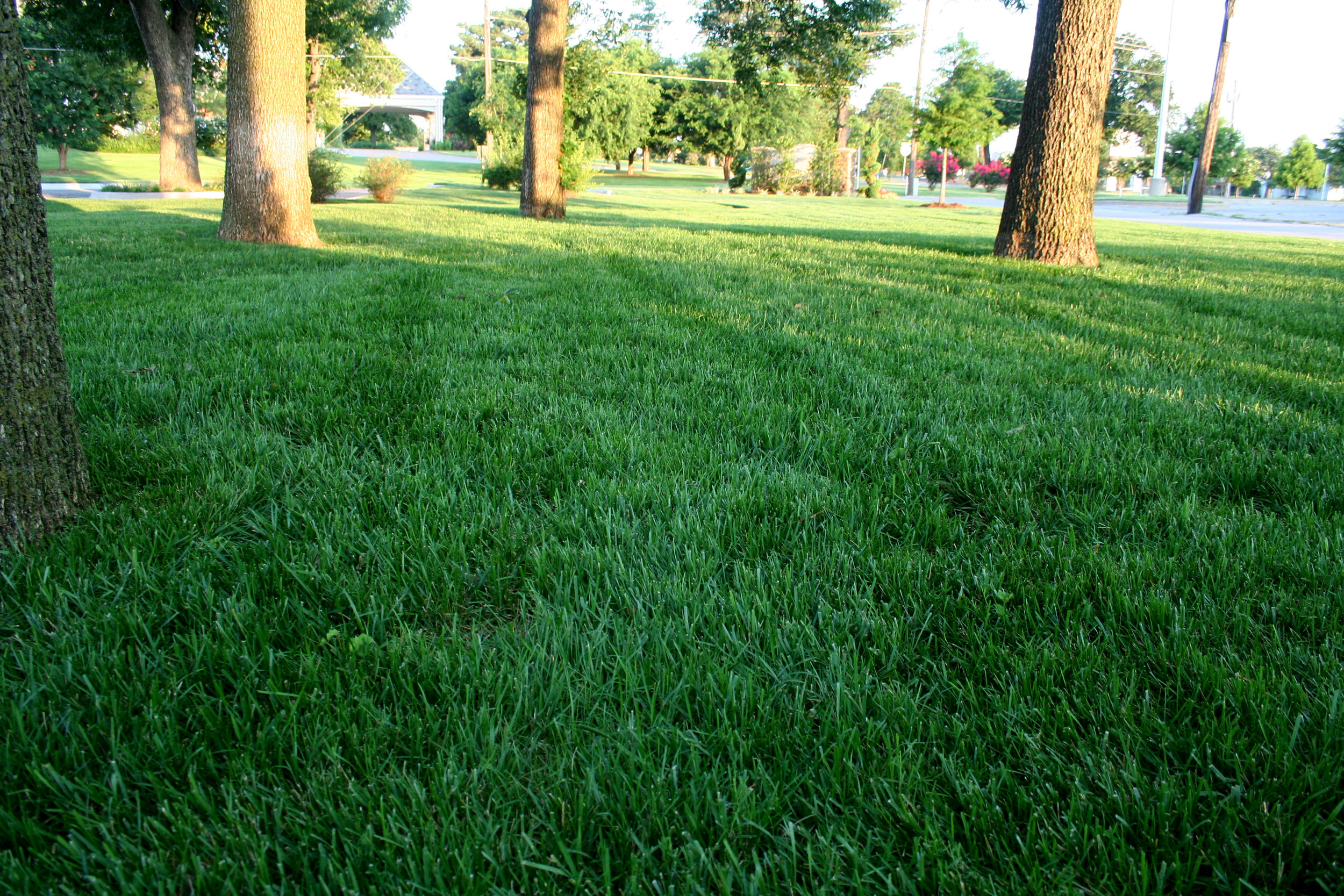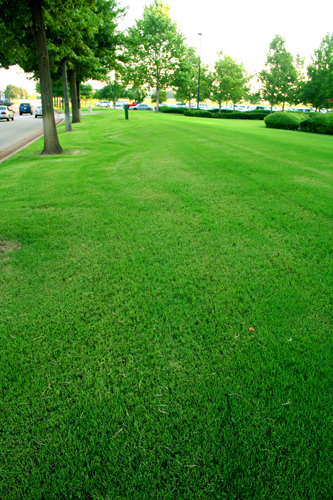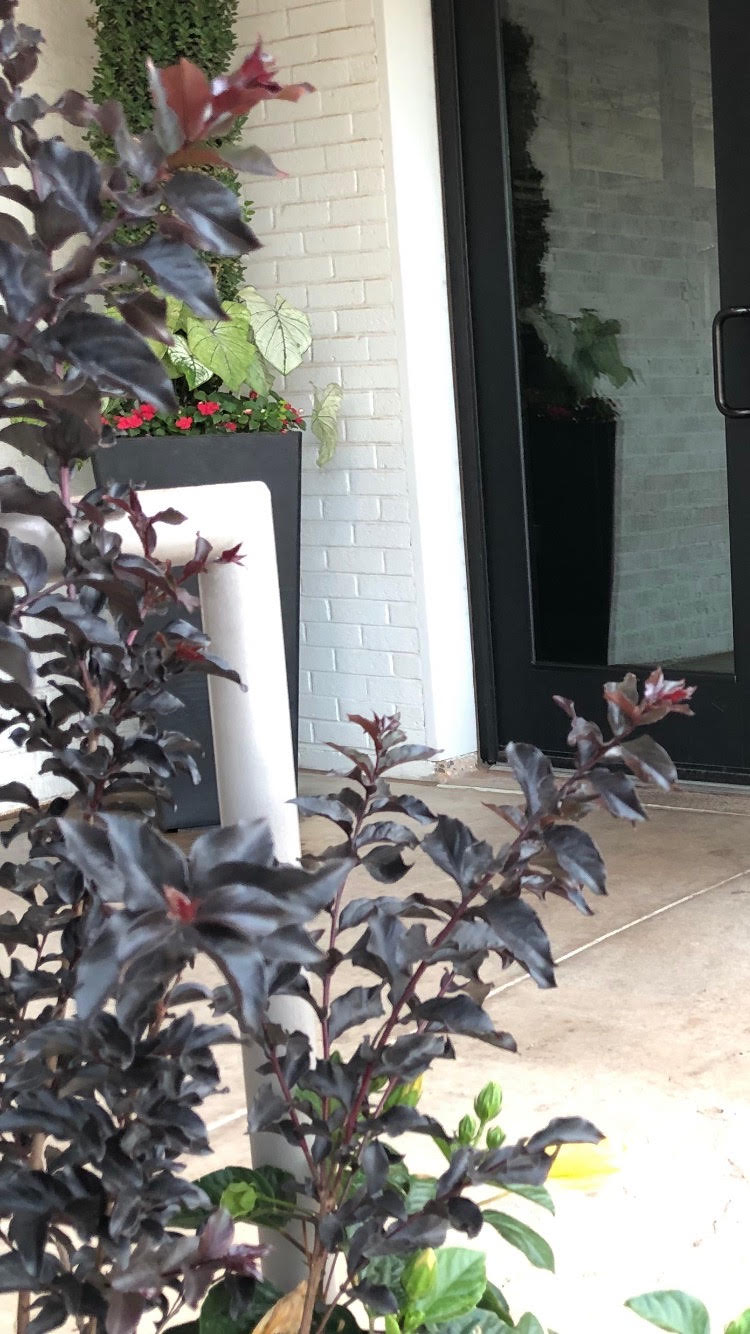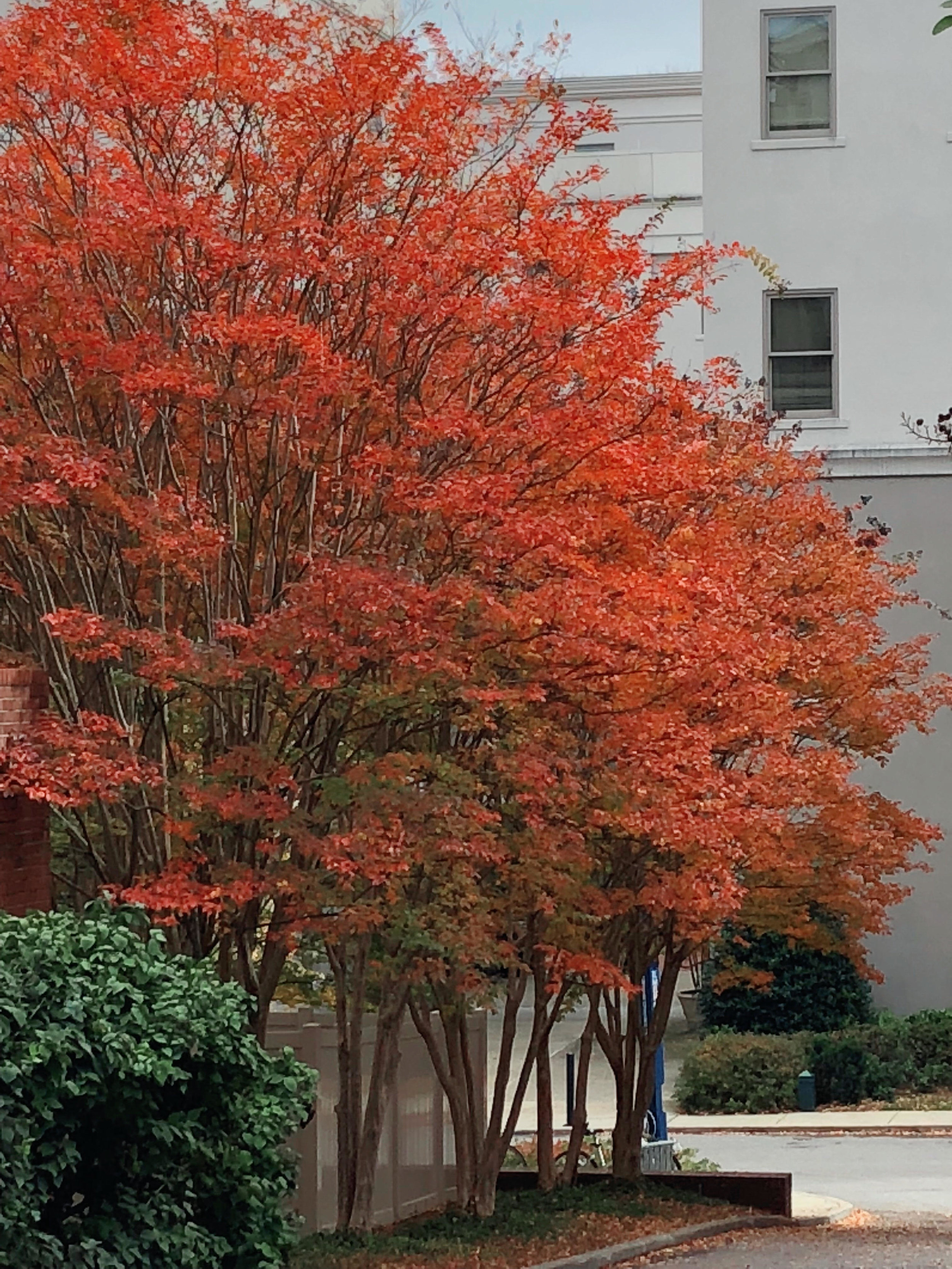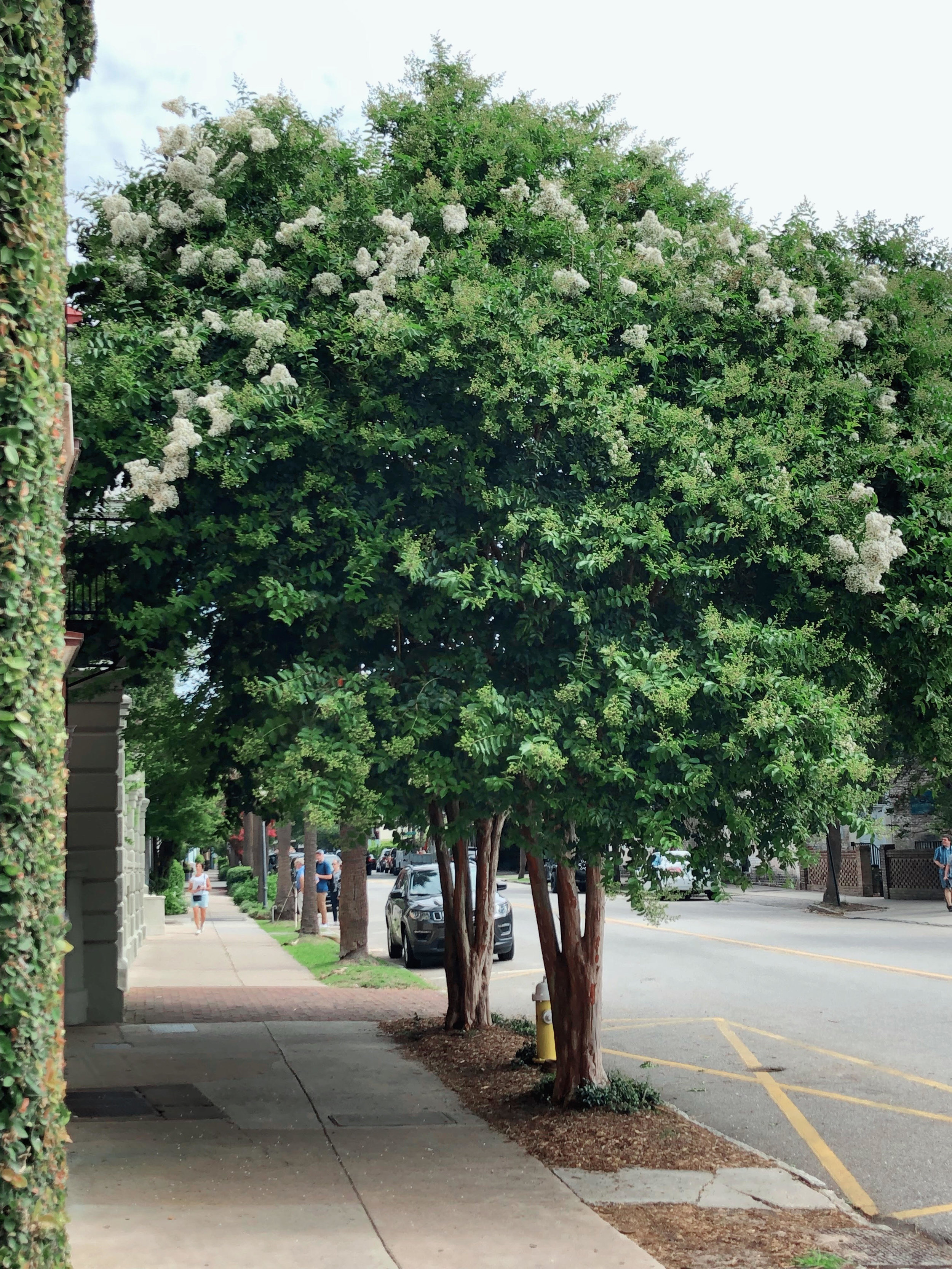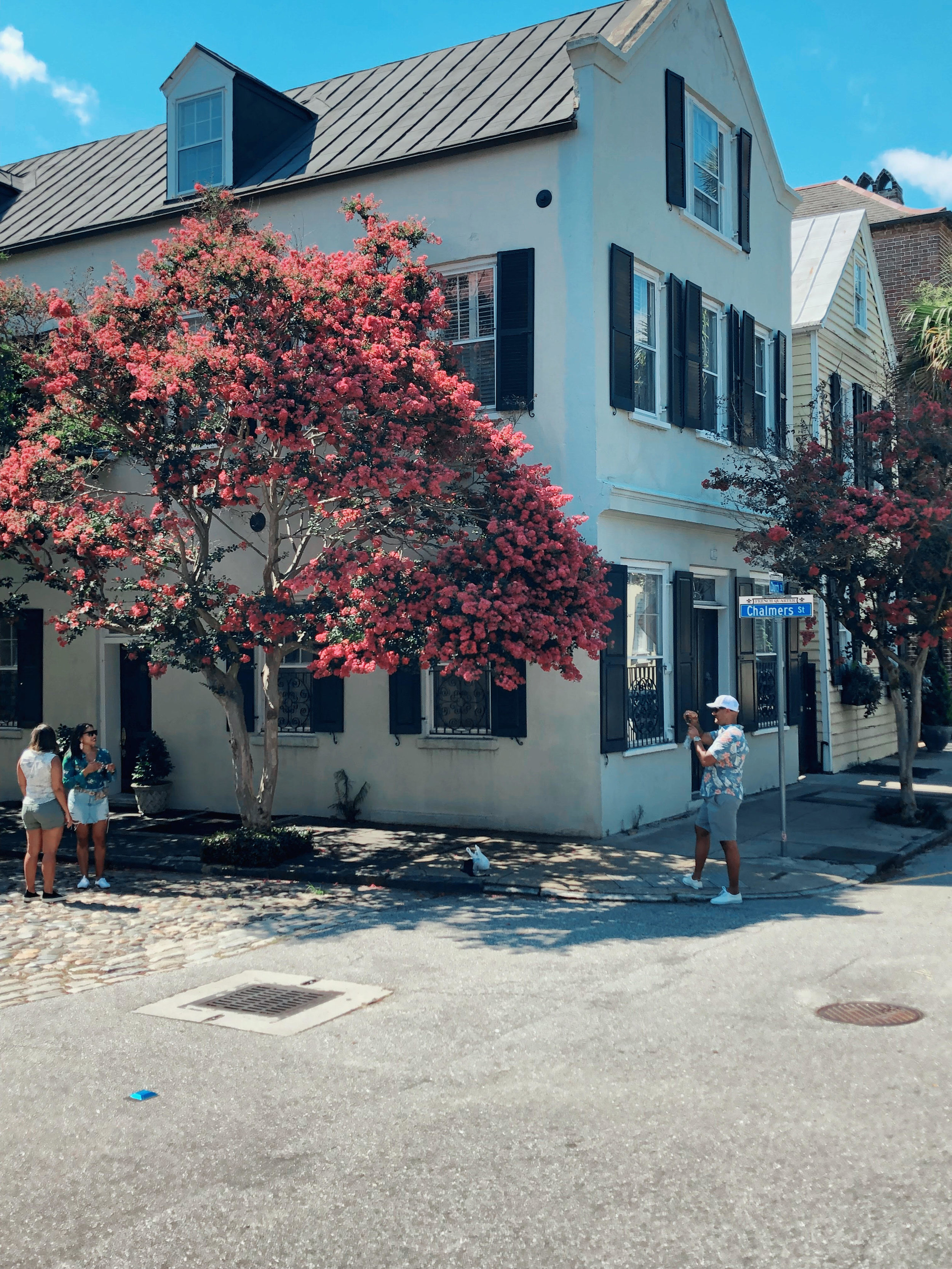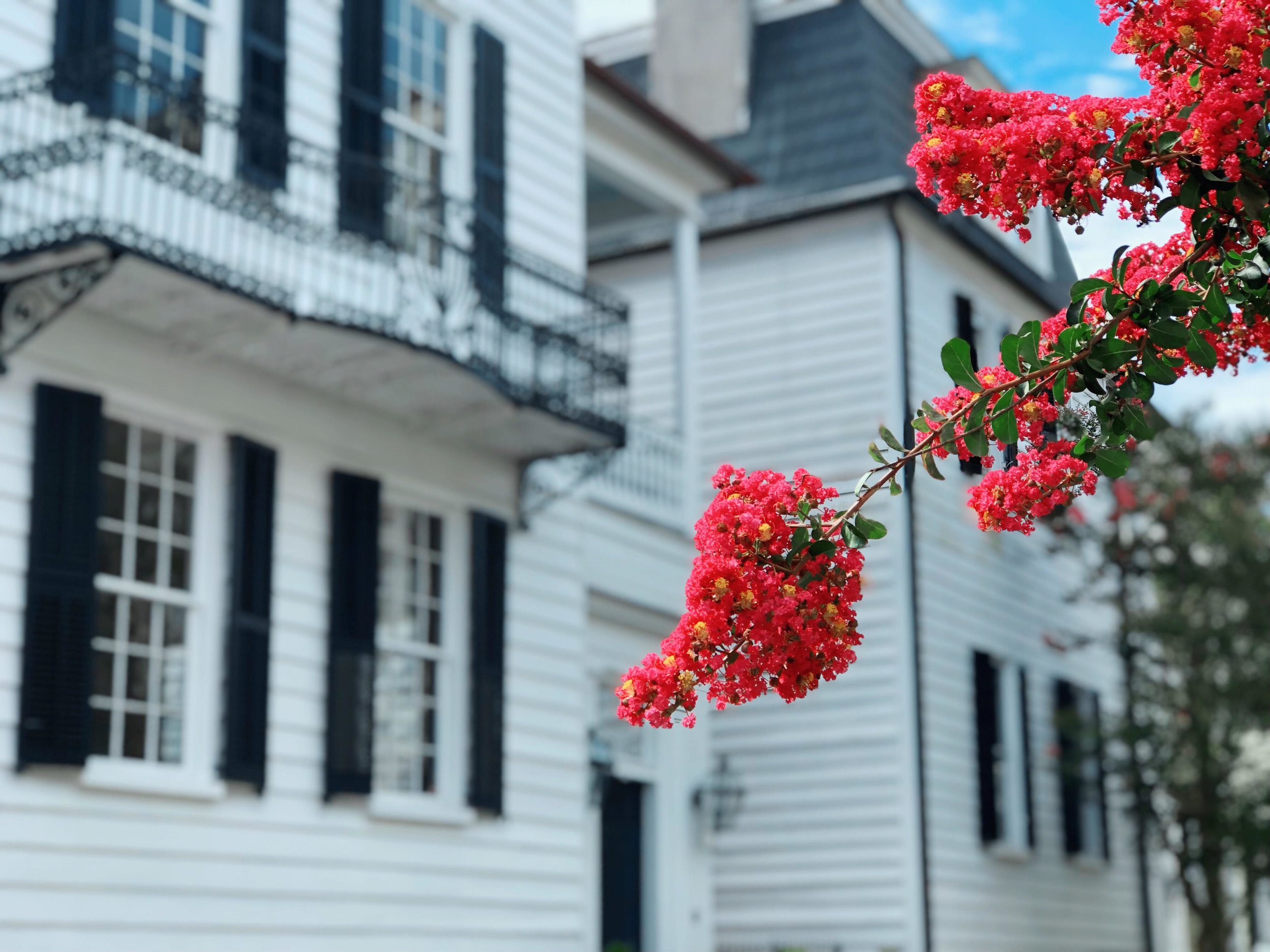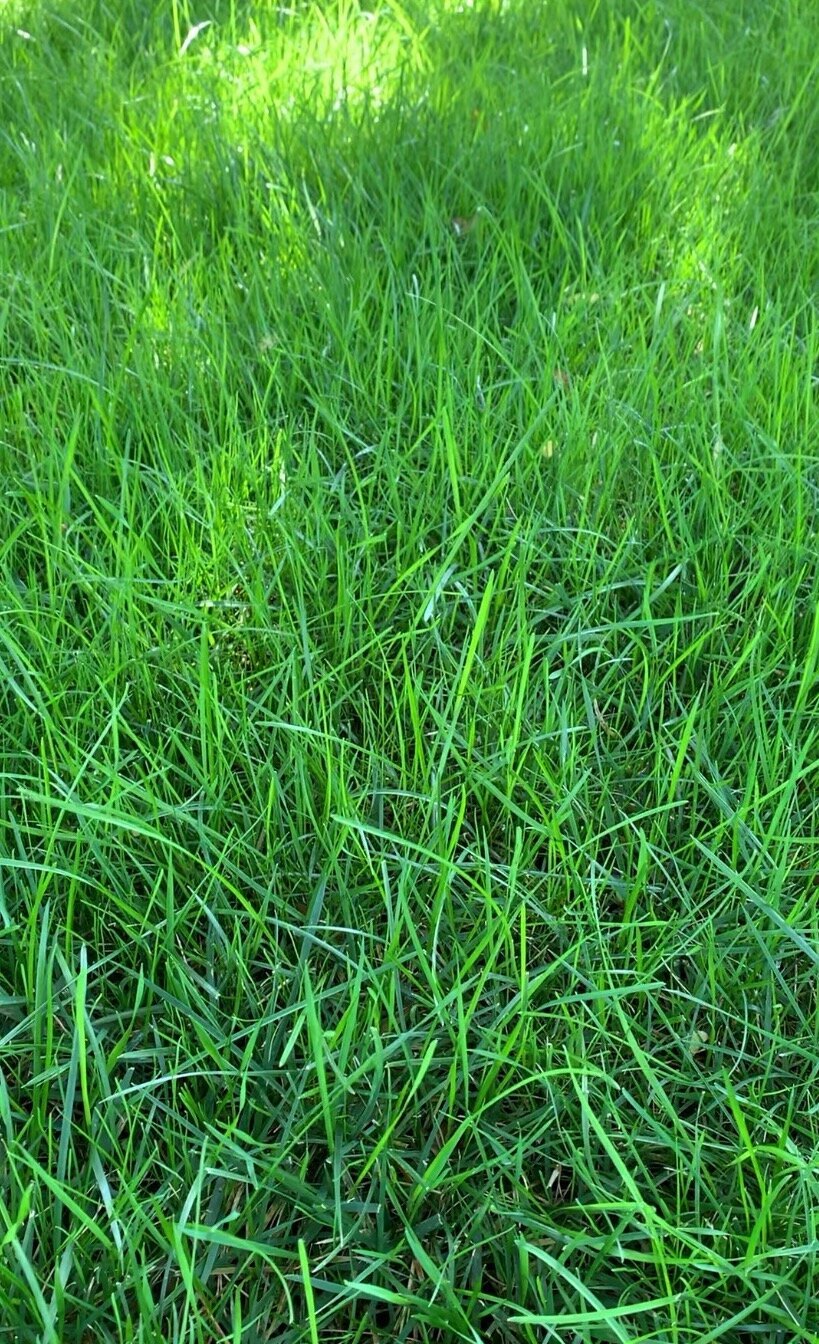
Spring can't be stopped!
The world changed a lot this week.
The change was faster and more sudden than anyone could have expected.
Lost in the fear, anxiety, and change was the first day of spring.
Thankfully, no one told spring about the change. When you thought the joy and celebration of new life wouldn’t happen this year, it arrived anyway.
I love spring! I love the fact that no matter how stressful life has become, spring is a constant.
Getting outside and into nature is good for your physical and mental health. Outdoor activities and exercise are a good way to way to cope with stress.
Live outside this week!
Get outside and enjoy all the colors of spring.
What are your favorites spring plants?
My list of favorite spring-blooming plants is too long to list, but here are a few of my favoritest (I wish that was a word) perennials, shrubs, and trees.
Saturday was the official first day of spring!
No doubt this spring will look a little different. Between trees that have been removed or severely reshaped and plants that suffered freeze damage, spring color will look a little different this year.
Even so, there will be spring color. It can’t be stopped!
It is time to get outside and into nature again.
It is time to get outside and enjoy all the colors of spring.
I love spring!
No matter how brutal February was on the landscape, spring will still arrive.
What are your favorites spring plants?
My list of favorite spring-blooming plants is too long to list, but here are a few of my favorite perennials, shrubs, and trees.
PERENNIALS
Creeping Phlox (Phlox stolonifera). The first to welcome spring each year. Creeping phlox produces a spring-like carpet in pastel hues of white, lavender, red, and pink. Creeping phlox is a moderate grower that can spread up to 2’ but only reaches 4-6” in height. It requires full sun but will tolerate a couple of hours of shade each day. Borders, walls, and around boulders are where it looks best. In my garden, you will find it cascading over a rock retaining wall. It tolerates most soils if it is well-drained. The plant requires little maintenance. Mites are about the only insect problem it will have.
Dianthus (Dianthus). It works well as a border, in small groupings, around boulders, or as a single plant reaching 10-15” tall with a spread of 12-24”. They bloom in late spring in rose, pink, white, red. They like full sun but will take some dappled shade or afternoon shade. Just like creeping phlox, they are a cool season lover. They will grow in most soils, prefer alkaline soils, but waterlogged soil will cause crown and root rot. Heavy mulching near the crown of the plant can be detrimental. Late March through April and into May is the peak bloom time. Light feeding in the spring with a complete fertilizer of phosphorus, potassium, and low nitrogen is recommended. Other than an occasional aphid or powdery mildew issue, they do not have many problems. There are more than 300 varieties of dianthus to choose from. My all-time favorite is ‘Firewitch’. It has a silver-green foliage and a vibrant pink bloom.
Dianthus and May Night Salvia
SHRUBS
Forsythia (Forsythia x intermedia ‘Lynwood’). Best grown as a specimen shrub where it can show off its naturally stunning shape. Forsythia’s brilliant yellow flowers are the first to welcome spring. It performs best planted in full sun and will grow in partial shade, only with less spring blooms. It is considered a fast grower. Forsythia adapts well to most soils but prefers well-drained. It rarely has an insect or disease problem. Pruning should only occur after spring blooms fade. If you prune later in the year you will reduce blooms the following spring. The best way to prune this shrub is to remove older wood all the way to the base of the shrub. Traditional forsythia will grow to 6-8’ with an 8’ spread and are well suited for large lawns. If you have a smaller yard, look for one of the newer varieties, such as Gold Tide (Forsythia ‘Courtasol’), a dwarf variety that only reaches 2’ high and spreads to 4’.
Bridal Wreath Spirea (Spiraea x vanhouttei). A medium-sized shrub with arching branches covered with an abundance of white cascading flowers in mid-spring. It is a very hardy, heirloom shrub, with no specific pest issues that thrives in well-drained soils. It attracts hummingbirds and butterflies. To preserve the natural arching shape avoid sheering but if pruning is needed, it is best done in the spring after blooms fade. It looks stunning planted in full sun to partial shade in front of darker structures or large hollies. Spiraea nipponica ‘Snow mound’ is another great variety.
TREES
Redbud (Cercis canadensis var. texenis ‘Oklahoma’). My all-time favorite “Welcome to Spring” plant. (You can expect me to dedicate an entire email to this tree every spring.) Reddish-purple blooms appear on branches before leaves appear. The ‘Oklahoma’ variety was discovered in the Arbuckle Mountains and known for its glossy, heart shaped, green leaves in the summer. It grows to 15’-20’. Prefers full sun but does well as an understory tree in dabbled shade.
Oklahoma Redbud
‘May Night’ Salvia (Salvia x sylvestris). Sage type flower spikes of deep bluish-purple that will add color in April, May, and early June. The best flower show will be in full sun, but it will tolerate a little dappled shade each day. The plant grows 12-18” tall with flower spikes reach 24”. The plant looks great in the middle of the garden planted behind creeping phlox or dianthus, and in front of Shasta daisy or Black-eyed Susan. The leaves often become tattered later in the summer and become dormant over the winter. Keep faded blooms removed to maximize the bloom period and pruning the plants after blooming may result in a few fall blooms. In the early spring, before new growth emerges, remove the dormant foliage. Salvia tolerates clay soils but will struggle with root rot if the soil stays saturated.
May Night Salvia
Flowering Quince (Chaenomeles japonica “Texas Scarlet’). Another early bloomer is known for adding splashes of red to the landscape. It also performs best in full sun and tolerates partial shade but with fewer blossoms. Considered a moderate grower and mid-sized shrub, most varieties reach 4-5’. It does best if planted where it can grow to its natural size and shape. If pruning is required, only prune in the spring after blooms have faded. Flowering Quince is loved by butterflies and hummingbirds. The plant is very drought tolerant once it is established and it will tolerate most soils, but like most plants would enjoy well-drained areas. Another variety, Chaenomeles speciossa Double Take Series has blooms that resemble camellias.
Flowering Quince
Oklahoma Redbud
Crabapple (Malus ‘Prairifire). There are many varieties of crabapples, but ‘Prairifire’ is one of the best. It was the Oklahoma Proven tree of the year in 2007. It is disease resistant and not fazed by most of the problems with crabapples. Flowers of rose-pink cover the tree as soon as leaves emerge. Young leaves go from purple-red to dark green as they mature. Branches have red fruit in the winter. Mature, 20-25’, trees have a rounded top. Plant in full sun as a specimen tree or in a grouping. Water extra during periods of extreme heat or draught.
Saucer Magnolia (Magnolia x soulangiana). A specimen type tree that reaches 15-20’. Large blooms put on a spectacular show on multi-trunk spreading branches. Blooms range from white to pink to purple. Best if planted in full sun. Plant away from radiant west or south heat where warm spring days may cause buds to develop too early only to be killed by a late freeze. They require regular deep watering in the summer months when leaves become tattered looking. It is best if their roots are protected with a layer of mulch to conserve water in the summer.
I am fortunate to work in an industry that gets to be outside.
I wouldn’t trade it for anything.
We only get spring once per year. Don’t miss it!
Slow down and enjoy it!
It’s time to celebrate the new life of spring!
Lorne Hall
Hall | Stewart Lawn + Landscape
(405)367-3873
This weekend is the pivot point for your lawn & landscape
Pivot - A factor having a major or central role, function, or effect. In the financial world, a pivot point is a time when a market price trend changes direction.
Mid-March is a pivot point for lawns and landscapes in central Oklahoma.
It is the point when weather conditions are exactly right for lawns and landscapes to change direction.
What are the key factors?
Forsythia’s bright yellow flowers are one of the first to brighten the early spring landscape. When forsythia blooms, it is also an indicator that we have reached the critical temperate for crabgrass to start germinating.
Flowering Quince, one of the first shrubs to announce spring, has started blooming.
Soil Temperature – When soil temperatures reach 55 degrees for 2-3 consecutive days summer annual weeds start to germinate. Thursday, Friday, and Saturday of this week most of the Oklahoma City metro area had soil temperatures at or above 55 degrees. Up until now, the weeds growing in the area were predominately winter annual weeds; weeds that germinated last fall. From this point on, as soil temperatures continue to warm, winter annual weeds will reach the end of their life cycle and summer annual weeds will begin to grow. Also, with soil temperatures reaching 55 degrees, Bermuda lawns will start to break dormancy and fescue lawns will become bright green.
Tulips and pansies on the south and west sides of structures began to put on a spring color show this week.
Look for saucer magnolias to burst with color this week.
Day Length – Longer days and shorter nights are key to bud break on shrubs and trees. Bud break is the point when the bud produces a flower or a leaf. Day length of 12 hours is the pivot point when we see the first blooms and leaf development. Mid-March is when day length reaches 12 hours. In mid-February, we were receiving an hour less and by this time next month, the day length will reach 13 hours. Each species has its own growth requirements. Some species started leafing and blooming this week, others will wait until April. Sunlight is a key trigger for bud break. The brighter the sun, the longer the day, the more plant species will bloom and leaf.
Moisture – Normal rainfall in central Oklahoma during March is 3”. A good spring rainfall when soil temperatures have reached 55 degrees acts as a trigger to green up fescue, force bud break on shrubs and trees, and start Bermuda emerging from dormancy. During periods of drought, spring green-up will be slow. The 30-day rainfall in the Oklahoma City metro area is less than 1”. We need a good soaking rain to push us over the pivot point. If we receive a good rain in the next few days, our landscapes will burst with the colors of springs in the next few days.
Tulips are getting ready to brighten the landscape over the next few weeks.
Daffodils started adding shades of yellow, orange and white to the landscape this week.
The unusual freeze burned leaves on spring blooming bulbs is a reminder of just how cold it was a few weeks ago.
If we have reached the pivot point, is it too late to start a weed control and fertilizer program?
No, it is never too late to start a lawn care program, but the sooner you start the better. The first summer annual weed to germinate once soil temperatures reach 55 degrees is crabgrass, and there are more to follow as soil temperatures warm. Goosegrass germinates when soil temperatures reach the 60s and sandburs follow soon after. All summer weeds will continue to germinate in the warm soil temperatures. Even if you are a little late with the first lawn care application, you still have the chance to stop more weeds from germinating throughout the season. If you have not put a pre-emergent on your lawn, there is another reason to do so soon: Most pre-emergent herbicides will control crabgrass during its first stage of growth. Starting now will still gain you good summer annual weed control this year.
The key to a great weed control program is a second pre-emergent application a few weeks after the first application. Pre-emergent herbicides work by creating a barrier over the soil surface. The barrier gradually weakens from foot traffic, mowing, heavy rains, etc. Edges of the lawn breakdown first. Since weeds continue to germinate throughout the season, a second application is required for season-long prevention.
If you are currently a subscriber to a Hall | Stewart Lawn Care Program, either the 7-Step Weed Control & Fertilizer or the 4-Step Weed Control Only, you have already received your 1st pre-emergent application to prevent summer annual weeds this year!
If you are not a subscriber to a Hall | Stewart Lawn Care Program, please contact us.
We want to make sure you receive timely applications to prevent weeds, control existing weeds, and keep the lawn healthy and growing.
Now that we are at the pivot point for spring, is it time to cut the lawn for the first time?
It is time to fire up the mower. It is not necessary to scalp the lawn, the process of cutting it as low as the mower will go. The goal for Bermuda lawns is to cut the dormant leaf blades to just below the height you will be mowing the lawn early in the season. For most, setting the mower on the 2nd setting is good.
For fescue lawns, you do not need to cut the lawn as short. For the first mow, cut the lawn a little lower than you left it last fall. Just low enough to remove the brown leaf tips left from the cold winter. As soon as the brown tips are removed, and we receive a good rainfall, fescue lawns will return to a rich green color.
Warm soil temperatures, longer days, moisture and cutting your fescue to remove winter burn will return your lawn to the rich greens of spring.
Hyacinths are one of the first bulbs to add color to the spring landscape.
The best news of all is that spring is on the way!
Every day something new will burst into life in the landscape.
Find sometime over the next few weeks to slow down and enjoy the colors of spring.
Lorne Hall
Hall | Stewart Lawn & Landscape
(405)367-3873
Patience is the key for winter damaged landscapes
While spring is knocking at the door, our landscapes are reflecting the harshness of the winter….a winter that was bookended by a record ice storm and record cold temperatures.
The normal early spring greens of the landscape have been replaced with shades of browns.
What do you do now?
The one-word answer…Patience.
Central Oklahoma’s USDA Hardiness Zone is mostly 7a with 6b just west and north of the metro area. Plants that can handle temperatures as cold as 0 to 5 degrees are recommended for Zone 7a, and if they can withstand temperatures from -5 to 0 degrees, they can be planted in Zone 6b.
The temperatures in mid-February dropped to those found in Zone 5a and 5b. You have to travel to Nebraska to be in Zone 5. Zone 5 is fine for Boxwoods but is not a good place for most varieties of Holly, Indian Hawthorn, Cedars, and many other plants we have come accustom to using in our landscapes.
Indian Hawthorns, a Zone 7-9 plant, are mostly brown after two weeks of Zone 5 temperatures.
The best plan, for now, is to pause and wait 2-3 weeks before making pruning. and replacement decisions.
You can expect your Blue Atlas Cedars and Deodar Cedars to drop most of their needles over the next few weeks.
Amazing, we are seeing signs that most plant material may have little to no damage. By the end of March, we will know more.
One of the first indications of freeze damage is cracking bark. Moisture moves from the roots to the leaves just below the bark. During periods of extreme cold, the sap can freeze resulting in cracking bark. If the bark is loose or popping off, the moisture below the bark froze. Without bark, a plant cannot move moisture from the roots to the leaves without resulting in plant death.
Another indicator is brown, to even black, colored foliage. Extreme cold temperatures dehydrate evergreen leaves and needles draining them of their color.
Leaf and needle drop can be expected. Plants that are normally evergreen in our area will see leaf drop this spring. Defoliation is a good sign when a plant has lost color. Leaf drop is a sign that the plant is alive and budding. If brown leaves and needles remain, it is a sign the plant is in real trouble.
Wait for new growth to appear before pruning. When you prune, start at the tips of the branch, and gradually move down until you see green in the cambium layer, the tissue right below the bark layer. Even if the top is dead in a broadleaf evergreen, it can fill back in this summer. Remember, you can prune holly and boxwood harshly and they will re-leaf on the stems.
If more than 30% of the top of Cedars, Pines and Cypress are dead, it is best to remove the plant. Otherwise, cut out the dead branches and reshape.
It’s common for magnolia to have some bronze leaves, many turned nearly completely bronze. Even so, their buds weathered the storm well.
Cedar branch tips are still soft and supple. A good sign that they will recover.
Typically elaeagnus is a silvery green in early March. After February’s cold spell, most are completely brown. And still most have buds that tells us they will recover.
Pine tree needles are more brown and yellow now than typically at this time of the year.
In our region, even during a mild winter, it is common to have some dead branch tips on Crape Myrtle. But after the extended cold spell in 1983, many Crape Myrtles froze to the ground. From the Crape Myrtles we have checked in the past few days, it appears that most have survived this year’s extreme cold. It is easy to give up on a Crape Myrtle too soon. They are one of the last deciduous plants to bud each spring. Give them plenty of time to respond this spring before making extreme pruning or removal decisions.
A good way to check your Crape Myrtle branches or any plant is to gently scratch the bark with your fingernail or a knife. If the cambium layer (the tissue right below the bark layer) is green, the branch is alive. If the color is faded green or brown, the branch will likely need to be removed.
Another indicator is the condition of the buds on the tip of a stem. If the bud is hard and dry, the bud is dead. If the bud is soft and supple, the branch is alive.
Sometimes freeze damaged plants will fool us in the spring. They will start growing, but then, because of their weakened condition, they will fail to survive in the summer heat.
One of the best things you can do for your plants this spring is fertilize to promote new growth. Follow label instructions. Do not pile fertilizer next to the trunk. Water well after fertilizing.
Periods of extreme cold will reveal unhealthy plants. These two cedars responded very differently to the cold. A sign that the one on the left is struggling. Most likely it has a damaged root system.
Check branches by gently scratching them with a fingernail. If the layer just below the bark is green, the branch is still alive. This Crape Myrtle is struggling with scale and it is still alive.
Check the buds at the tip of a stem. If they are soft and supple, the branch is alive. The plant may drop freeze damaged leaves, but it will recover.
Extreme cold can also be difficult on your turf as well. Bermuda, a warm-season grass, does not grow well north of central Kansas. The most important indicator for turf damage is how low the soil temperature went. During the two weeks extreme cold, amazingly, the average lowest soil temperature in the metro area was only 34 degrees. The 10” snow cover provided needed insulation for the turf.
We expect warm-season turf in full sun areas, where the turf is thick, to rebound well this spring. But, it is possible to see warm-season turf damage in areas of the lawn where the turf was already thin because it was not receiving at least 6 hours of direct sunlight each day.
We are all anxious about the condition of our landscapes. But, the best thing you can do is give the landscape time to respond.
For the next couple of weeks….just pause and wait.
If you have questions about your plant material, give us a call.
Lorne Hall
Hall | Stewart Lawn + Landscape
(405) 367-3873
Great Landscape Plantings Have 3 Levels
We interrupt the Siberian cold front with thoughts of colorful landscapes!
When you can’t be out enjoying landscapes, you can always dream of landscapes, right?
Let’s spend a few minutes talking about great landscape plantings this morning.
What makes the difference between an average landscape planting and a great landscape planting?
Great landscape plantings contain three levels: a front, a middle, and a back.
Let’s start with some basic design math:
Front – No more than 18” in height. Low ground covers, perennials, annual color and small plants.
Middle – Perennials, annual color and smaller shrubs with enough height to start creating levels. 18” to 3’ in height.
Back – Shrubs and small trees. 3’ or more in height.
Read the plant label and believe what it says about plant height and growing conditions. Remember plants perform their best if they are allowed to grow to their natural height and form. If you have only 4’ of height for your back level, don’t plant a shrub with a mature height of 10’ with the idea you will keep it pruned. Even if you are diligent with your maintenance, the plant will never look as good as it would if it could grow naturally.
Begonias, azaleas, hydrangeas used to create levels under live oaks in Charleston.
If your space is limited and you still want to gain height, a climbing vine or shrub against a wall or fence is a great solution. Also consider using a flowering tree, boxwood, or pyracantha in an espaliered form.
Walls and fences don’t count as the third level. To get the impact you need three levels in front of the object.
The levels don’t have to be in a continuous, linear run of all the same plant material. If you prefer, each level can contain a mixture of a few plants. Often the middle level works well with a few, specimen plants of interest, or groupings of perennials.
Annuals and bulbs used in front of azaleas to create levels.
A few ideas to get you started:
Large ornamental grasses in the back, flowering shrubs in the middle, with a ground cover boarder in the front.
Crape myrtle in the back, evergreen shrubs in the middle, and annual color in the front.
Evergreens for the back with a mix of perennials in the middle and ground covers in the front.
A specific shady area idea you may like is azalea in the back, hosta in the middle, and dwarf mondo in the front.
Groundcover, barberry and hydrangea used to create layers.
Dwarf Globe Blue Spruce used as a mid level shrub adds color and interest to a landscape.
Espaliering a plant, such as Pyracantha, on a wall or fence is a great way to create levels in small spaces.
A first level of bright seasonal color creates a welcoming environment to a front door.
Annuals, perennials, flowering shrubs and evergreens planted in levels to add interest.
When selecting plants for each level, don’t always go for flowering plants. Plants with interesting leaf shapes and colors can make the flowering plants look even better.
Need a low maintenance landscape option with three levels? Plant Pink Muhly Grass between groundcover and standard Juniper varieties. Little to no trimming will be required.
Larger plants, particularly when you have the room, are great for adding interest and will soften walls and fences. They also can be planted free standing to create a boarder or screen an unsightly view. The more space you have the bigger you can go with the back level.
Annuals planted in front of perennials to create levels.
Inpatients, Caladiums and Hostas create layers in front of Azalea and Hydrangeas in shady areas.
Plantings should have something of interest in every season. For high visibility areas and for great curb appeal, it is best if one level includes evergreens and another one annual color.
Always greet customers with flowers. Great front doors have a splash of annual color.
Annuals and bulbs used to create a warm welcome for guest.
A great resource for ideas and plant materials is Monrovia.com. Monrovia has been a leader in landscape plant material for over 90 years. I sure you will find their website a great resource. The content in this email is from Monrovia combined with our years of experience in the landscape industry.
We would enjoy hearing your ideas on great landscape designs and plants. Give us a call or respond with an email and let us know what is working well in your landscape.
Stay warm and keeping dreaming of days when you can be out in your landscape.
Lorne Hall
Hall | Stewart Lawn + Landscape
(405)367-3873
Grasses make a great middle level when creating landscape plantings.
What Your Landscape Wants You to Know About the Cold Weather Forecast
Overall, it has been a fairly mild winter. But, how it started and how it appears to be ending is hard on the landscape.
October’s three-day freezing rain came while leaves were still on trees resulting in damage to nearly every tree in the Oklahoma City area.
Now…we are faced with a forecast of extended freezing temperatures following several days of above-normal temperatures. Oh, and it has been nearly 2 weeks since most of the area benefited from a ¼” rainfall. And boy did the wind blow this week.
Why the weather review?
One of the most difficult situations for the landscape to overcome is spring-like days, when it is dry and windy, followed by an extended freeze. Plants gradually become acclimated to withstand low temperatures as we transition from fall to winter. Once they are fully acclimated, they can withstand cold spells. But, when they are exposed to warm days in late winter and early spring, their ability to withstand rapidly falling temperatures diminishes.
[Side note: Why is wind a problem? Evergreen shrubs store moisture in their leaves. During the winter, when temperatures are lower, transpiration (the release of water from plant leaves) is much lower. Well, except when the wind blows. Windy days zap the moisture stored in leaves making plants sensitive to winter injury during a harsh cold snap.]
So, what do you need to do today or tomorrow before the cold arrives?
1. Make sure your landscape is moist. Wet soil holds heat protecting root systems. Run your irrigation system through a cycle today or tomorrow. If your irrigation is winterized or you don’t have one, grab the water hose and water thoroughly around your shrubs, flowers, and trees.
Run your irrigation through a cycle before the cold arrives.
Mulch acts as a soil insulator keeping ground temperatures warmer in the winter and cooler in the summer.
2. Mulch around plants. A 2-3” layer of mulch will provide a layer of insulation for roots. Bare soil warms up too much on sunny winter days encouraging early root activity and in the extreme cold bare soil loses warmth quickly. A good layer of mulch will keep temperatures and moisture levels even.
3. Cover tender plants with sheets. The cover will act as insulation keeping the warm ground temperatures around the plants. Focus on plants with shallow root systems, new plantings, and ones that have started to bud. Remove covers as soon as temperatures rebound past freezing.
Covering tender plants with a sheet when temperatures are below freezing will trap the warmth of the ground around the plants.
The most common external symptoms caused by winter freezing are dieback, browning leaves, and bark splitting on the trunk. Dieback on the branches and brown foliage is common when freezing temperatures arrive suddenly after a few warm days.
You will find most plants to be resilient.
They will survive, bud, and produce new leaves as the weather warms in March.
Don’t overreact.
Wait until new buds and leaves form in the spring to make plant decisions.
Southwest injury is common in these conditions. It is an injury that develops on the south or southwest side of a tree trunk. On a warm, sunny February day it is common for bark temperatures to warm into the 60s on the sunny side. When temperatures suddenly drop below freezing, sap that has started to move up the tree, freezes cracking the bark. Young trees and ones with smooth bark, such as maples, are more susceptible. Protecting the trunk in the fall with a commercial wrap material helps prevent the problem.
The best preventive measure in avoiding winter damage is to select plants that are winter-hardy for our area. Cold hardiness is based on the USDA Plant Hardiness Zone Map. Central Oklahoma is in zones 6b and 7a. Plants rated 7a can withstand temperatures of 5 to 0 degrees while 6b goes as low as 0 to -5 degrees.
Southwest injury is caused when sap moving up the tree is frozen causing bark to crack and pop off the tree.
When selecting plants that are marginally hardy in our area, choosing the right site is critical. Keep in mind that south and west walls and concrete can create reflective heat resulting in damage from daily freezing and thawing. Also, avoid planting in locations where they will be exposed to drying winter winds. It is common to see plants better suited for zone 7b in the Oklahoma City metro when they are planted in the right location.
Keeping plants healthy during the growing season is an important step in surviving cold weather snaps. Plants in poor health are the first to suffer from weather stress. Rarely does a plant recommended for our area die from cold weather. Usually, many factors contribute to plants that die in the winter. Proper fertilizer applications, adequate moisture, and an integrated pest management program is critical to plant health.
Plants with shallow roots, such as Japanese Maple, are more susceptible to winter damage if their roots are dry during freezing temperatures.
Plants rarely die from winter kill. Typically they have been weakened by other factors such as bagworms.
Your landscape is a big investment. It is an investment that creates welcoming curb appeal and frequently results in higher home values.
If you have questions about the care of your landscape or if we can help you protect your landscape investment, give us a call.
Lorne Hall
Hall|Stewart Lawn + Landscape
(405)367-3873
Merry Christmas!
What are you hoping for this Christmas?
Maybe we should start with “What is hope?”
Hope is a feeling of expectation and desire for a certain thing to happen.
Hopeless is the feeling of despair about something.
The events of 2020 have left many feeling hopeless…. feeling as if there is no hope. Many are health hopeless. Others are financially hopeless. Relationship hopelessness is abundant. And career hopelessness has become common. We all have experienced hopeless feelings in some area of our lives this year.
If your hope has been in health, finances, relationships, career, or…. I’m confident you have experienced disappointments in the last few months.
But even so…. what we need more than ever right now is hope.
So again, what are you hoping for?
What are you wanting to happen?
And now…. it is Christmas.
Christmas…. the celebration of real hope coming to earth.
We need the hope of Christmas, the celebration of the birth of Christ…the celebration of the birth of hope and love for all mankind.
Christmas is the celebration of hope and love.
May everyone experience hope and love this season!
Merry Christmas from your friends at Hall | Stewart Lawn + Landscape!
Trees -- the pillars of our landscapes!
“Trees are truly the pillars of our landscapes… think of trees as an investment for future generations…”
The words Steve Dobbs as he introduces you to trees in his book Oklahoma Gardener’s Guide.
I am thankful previous generations took “investment in future generations to heart” and began the forestation of the Oklahoma prairies. And, that is why last week was so difficult. As I moved around the metro area this week, the widespread devastation of trees left me feeling as if planting trees in our climate was a losing cause.
Then the sun came out. For me, when the sun is shining, suddenly everything looks like it is going to be alright.
Leaves that were protected from the cold nights by a layer of ice, a layer that also left us with gaping holes in trees, began turning brilliant colors. One friend sent me a picture of a maple and commented “There is absolutely nothing in the world like an Autumn Blaze Maple. It looks like it is plugged in!”
Trees are worth it.
Trees make a difference in the appearance of our communities.
There is not a better way to improve the appearance of an area than to plant a tree.
Trees make a difference in the way we feel.
Trees increase the value of a property.
Trees, trees... trees just make the world a better place!
This may be the best fall yet for Autumn Blaze Maples
Every tree has its strength and weaknesses. Sweetgum gives us unique fall colors with a mix of yellow, purples and reds. But, it is also know for its large and obnoxious seed balls that litter the lawn.
Chinese Pistache is a medium sized tree with an oval top that is the perfect size for a city sized lot.
So, if trees are worth it, what characteristics make for the best tree?
There is not a perfect tree for every location. But there is a perfect tree for each location.
Here are a few things to consider when selecting a tree:
First – the intended purpose is important. Are you looking for shade, fall color, spring or summer flowers, screening, attract wildlife, windbreak, etc.?
Second – the size of the area. Large trees that grow over 35’ or taller are better suited for larger lawns and taller structures. Large trees planted on traditional sized residential lot often result in the need for heavier pruning.
Even with a few damaged branches, the Silhouette Sweetgum couldn’t help but burst with color this week.
Third – the shape of the tree. Larger trees typically have a strong central leader and spreading branches that create a lot of shade. Trees with oval tops are often small to medium-sized. There are also columnar shaped trees perfect for smaller areas.
Finally – consider the advantages and disadvantages of a particular tree. Are they susceptible to disease or insects? Do they prefer wet or dry soils? It is important you select a tree that is suitable for your type of soil – sand, loam, or clay. Do they have seeds, fruit, or nuts that are obnoxious? Do they have soft or brittle wood that is easily damaged by wind or ice? Fast-growing trees typically have weak wood, and some trees have narrow branching angles that are susceptible to storm damage.
Japanese Maples with their bright spring colors are a great tree for small areas.
Where do you go to find the best trees for your landscape?
Let me give you three sources of information:
Oklahoma State University Fact Sheet HLA-6456 Selecting Deciduous Trees for Oklahoma
http://pods.dasnr.okstate.edu/docushare/dsweb/Get/Document-11113/HLA_6456web.pdf
The article breaks trees down into varieties that tolerate or prefer dry locations, tolerate or prefer wet locations, tolerate or prefer shade, tolerate or prefer alkaline soils, winter interest, showy bark of unusual form, interesting or showy fruit, showy flowers, fall color, planting under power lines, attract wildlife, native species, and undesirable trees. There is also a table of trees listing region of the state, growth rate, height, and comments.
Some varieties of Japanese Maples have yellow fall color.
Autumn Blaze Maple
Oklahoma Proven!
http://www.oklahomaproven.org/welcome
A program by the Department of Horticulture and Landscape Architecture at Oklahoma State University. The program evaluates and recommends plants well-adapted for use across Oklahoma. Since 1999, the program has recommended trees, shrubs, perennials, and annuals.
Oklahoma Gardener’s Guide by Steve Dobbs
https://www.amazon.com/Oklahoma-Gardeners-Guide-Guides/dp/1591861241
A must-have book for anyone interested in Oklahoma landscapes. Steve’s book has been a great resource for me for years. Did you know that Oklahoma is the only state in the nation that has four ecoregions? The ecoregions of the desert southwest, great plains, continental east, and humid south meet in Oklahoma City! (Facts like this usually earn me the most boring person at a party.)
Bald Cypress is a deciduous needle tree grows well in wet, clay soils. It is a large tree that really needs more space than most lawns provide.
Get outside!
Take a walk and pay particular attention to the trees along the way.
Visit the zoo. Visit a park.
Even after a devastating week for trees, I dare you to tell me trees aren’t worth it!
Lorne Hall
Hall | Stewart Lawn + Landscape
(405)367-3873
Saucer Magnolia is a deciduous, small tree that brightens the early spring flowers landscape with large flowers.
The Oklahoma State tree, Redbud, is a small tree perfect for many residential lawns.
The World's Most Problematic Weed... Poa Annua!
Why do many consider poa annua, commonly known as annual bluegrass, the world’s most problematic weed?
It is the world’s most widespread weed.
It is showing increasing resistance to currently available pre-emergent herbicide chemistry.
Poa annua is a winter annual that first germinates in the fall when nighttime temperatures drop into the 60s, daytime temperatures stay under 85 and there is an abundance of moisture.
The only positive to the dry fall we are having is it may reduce the development of poa annua.
Optimal germination occurs when soil temperatures dip below 70 degrees. This week soil temperatures dipped below 70 degrees for the first time this fall.
Poa annua continues to germinate through the fall, winter and spring making it a several month-long battle. A single plant can produce up to 2,000 seeds.
Poa annua is a low growing, lime green, clumping, grassy weed with small white flowers. Everyone has experienced annual bluegrass. It is most troublesome in short cut warm season turf, bermuda and zoyia, during the winter when it is growing and seeding heavily, and turf is dormant. During the winter it does not have to compete with warm-season turf for light, water and nutrients which allows it to spread quickly when not treated. In fescue it is not as prolific since the turf is growing and thick in the cool season, but when present and flowering, it will distract from a beautiful turf.
Most concerning is poa annua has been developing an increasing tolerance for many pre and post emergent herbicides. Tolerance is the plants ability to survive and reproduce even though it has been treated with a herbicide.
Tolerance is scary to a lawn care professional when you are talking about weeds and herbicides!
Herbicide resistance in poa annua first developed in Japan in the 1980s with the first occurrence in the US in Mississippi and Tennessee in 2004.
Poa annua is a clumping grassy weed with small white flowers.
Here are a few recommendations on how to best overcome annual bluegrass in your lawn:
Problem - A single fall application of a herbicide is not enough for the prevention of poa annua because germination can occur from September to March. Also, repeated use of the same herbicide will result in herbicide resistance.
First Solution – Our application #7, in October and November, is critical in the control of poa annua. This application contains a different fall pre-emergent herbicide than is applied in Application #6. Additionally, we use a herbicide in Application #7 that has post-emergent abilities on poa annua.
Second Solution – Application #1 in January and February contains herbicides for control of poa annua that can only be used on dormant warm-season turfgrasses. Once we reach March control of annual bluegrass is more difficult.
Poa annua will thrive in thin dormant turf during January and February without effective fall prevention.
Problem – Lawn care application effectiveness is reduced when the pre-emergent herbicide is not watered into the top 1” of the soil.
Solution – Always follow the watering instructions when we do your lawn care applications, but especially when the application includes a pre-emergent. Pre-emergent herbicides are not effective at preventing germination when they remain on the soil surface.
Problem – Unhealthy, thin turf is a breeding ground for poa annua and many other weeds. Therefore, annual bluegrass is more of a problem in dormant warm-season turf than it is in cool-season turf. Annual bluegrass also prefers compacted soil.
First Solution – Applications during the growing season for warm-season turf contain fertilizer that thickens the turf reducing the area for poa annua seeds to germinate and develop in the fall.
Second Solution – Do not cut warm-season turf short for the winter. Maintaining a healthy amount of top growth will inhibit some seeds from reaching the soil surface. Annual bluegrass is much more troublesome in short cut, warm-season turf during dormancy.
Third Solution – Aeration in the early summer on warm-season turf and in the fall on cool-season turf will result in a thicker, healthier turf. Aeration will reduce the compaction and strengthen the root system of your lawn by allowing air, nutrients, and water to reach the root system.
Maintaining a thick, healthy, properly maintained turf is critical to the prevention of poa annua.
Heavy reliance on herbicides to control poa annua increases the likelihood that it will develop herbicide resistance particularly if you are relying on a single fall pre-emergent application of the same herbicide year after year.
In the spring after lawns have greened up, controlling poa annua can be very difficult without damaging the turf.
Without two fall pre-emergent herbicide applications, poa annua will be prolific the next spring when the turf is coming out of dormancy.
Effective prevention of poa annua is the result of two differing fall pre-emergent applications and healthy turf.
Our goal is to do all we can to strengthen your lawn and prevent poa annua from littering your dormant lawn this winter.
We are committed to taking steps to overcome the herbicide resistance of annual bluegrass.
We need your help in following watering instructions, maintaining proper mowing heights, and adding aeration to your annual services.
Lorne Hall
Hall | Stewart Lawn + Landscape
(405)367-3873
Fall is for planting!
Wait…. Really? I thought spring was the season for planting new shrubs and trees?
Actually, fall is by far best time to plant!
In the spring, everyone gets the planting bug. Garden centers are loaded with colorful plants that often unfairly entice you into taking them home. Unfortunately, new plants struggle through the summer, often not living up to the way they looked in the garden center and leave us disappointed.
Maybe we need to change our thinking.
Could it be spring isn’t the best time to add to your landscape, but rather fall is?
Four reasons why fall is better for planting than spring
Limelight hydrangea will add color to your landscape during the heat of the year and they do well in full sun to partial shade.
1. Warm Soil Equals Root Growth
Soil temperatures remain warm well into the fall and early winter resulting in root development. Shrubs and trees put their energy into growing roots more in the fall than any other time of the year. Fall planted landscape materials have more time for the root system to become established before the onset of summer heat. Plants installed in the spring don’t have the root system needed for growth and spend the first summer just trying to survive.
3. Fall Weather Brings More Moisture
New shrubs and trees require supplemental watering. During the fall and winter new plants need at least 1” of moisture per week, which is likely to occur from rainfall. In the summer, new plants often need 2” or more of water to survive. Chances are much greater you will be spending time hand watering your spring planted shrubs and trees than you will fall planted ones.
Plant a Japanese Maple this fall and have more red in your landscape next spring when leaves emerge.
4. Head Start on Next Year
Fall planted materials can gain an entire year of development over plants installed in the spring and summer. Because fall plants will start developing roots now, they will be ready to grow next spring while spring plantings will grow little until they develop roots in the fall. It has been my experience that a 3-gallon shrub planted in the fall will be the same size as a 5-gallon shrub planted in the spring after one season. Save money. Plant in the fall.
Crape Myrtles planted in the fall will bloom more their first season than ones planted in the spring or summer.
Yes, most shrubs and trees can be planted year-round and because they can, we typically plant at any time. But, the ideal time to add new plants to your landscape is September through December in Oklahoma. For deciduous trees the best time to plant is during winter dormancy, December through March.
Plant perennials in the fall for great early blooms next spring.
When azalea are planted in the fall the establish roots and bloom well the next spring.
2. Cool Days Are Less Stressful
Warm days are hard on all plants and are particularly hard on the newly planted. New plants without a developed root system are more susceptible to moisture loss resulting in desiccated leaves and roots.
Japanese Maple in the spring.
If you have too much open landscape bed area that you are always needing to weed, consider adding ground covers this fall.
Planting creeping phlox this fall will give you a carpet of color in the spring.
Bridal Wreath Spirea is a medium sized, old fashioned, shrub that deserves to be in more landscapes. Arching branches are covered with thick sprays of white flowers in April.
Azaleas planted the right locations and in the right soil put on a show every spring.
Remember, your landscape has a big impact on home value and greatly impacts your curb appeal.
Plant something new this fall.
You won’t be disappointed.
Lorne Hall
Hall | Stewart Lawn + Landscape
(405)367-3873
The Endless Summer Hydrangea
Every June hydrangeas put on a show!
Hydrangeas are known for their old fashion charm with their large mop-type blooms.
Unfortunately, traditional hydrangeas often underperform. Because they bloom only on last year’s growth, and they often suffer freeze damage, it was common to not have any blooms at all. Too often hydrangeas leave us only with the hope of next year.
Fortunately, the world of hydrangeas was forever changed with the introduction of the Endless Summer Hydrangea in 2004 from Bailey Nurseries with the help of Dr. Michael Dirr from the University of Georgia. Dirr was doing some consulting with Bailey, known for introducing new plants, in the 90s when he noticed a hydrangea that was blooming in mid-summer. Bailey had been propagating and testing the hydrangea for about 10 years. It was unique because it bloomed in the spring on last year’s growth and rebloomed on the new growth during the summer. Dirr immediately knew it was a game-changer for hydrangeas and quickly coined the name ‘Endless Summer’.
The Original — big round blue or pink blooms
Blushing Bride - pure white blooms that mature to a pink blush.
Twist-n-Shout — reblooming lace-cap in pink or periwinkle blue with red stems.
Bloom Struck — purple or rose-pink flowers with red stems.
Summer Crush — a 2019 introduction with raspberry red or neon purple flowers with a compact growth.
Other recommended Hydrangea varieties:
Oakleaf – Instead of traditional mophead blooms, oakleaf hydrangeas have white clusters of cone shaped flowers. It is named for the large oak like leaves that turn reddish-purple in the fall. It is a large shrub that blooms in the summer on new growth. It also requires less water than a traditional hydrangea.
Annabelle – A smooth hydrangea with white blooms on the new growth. Because it is fast growing, it is common for this hydrangea to be cut all the way to the ground each spring.
Limelight – Blooms in mid to late summer on new growth. Flowers start green, turn to white and then back to green.
Seaside Serenade Series by Monrovia – A more compact form of hydrangea ideal for smaller areas that blooms on both last year’s growth and new growth. To see all the varieties in the Seaside Serenade series, visit Monrovia.com.
Hydrangea Planting and Care
Planting – Hydrangeas prefer rich, well-drained soil in a location with morning sun and dappled to full shade in the afternoon and evening. When planting in our tighter clay soil, start with a hole twice as big as the plant container. Incorporate compost and peat moss into the existing soil, fill the bottom of the hole with enough soil that the root ball will be slightly above the existing grade. Backfill around the root ball with the remaining mix of soil and amendments creating a ring outside the root ball creating an area to retain moisture when watering.
Watering – Hydrangeas require more water in the heat of the summer. They perform best in soil that retains some moisture but does not stay wet. It is common for their leaves to wilt slightly on 90+ degree days and then rebound quickly when water. A good deep soaking every other day in the summer is enough. A 2” layer of mulch will help retain moisture.
Pruning – Hydrangeas don’t require much pruning. In the spring, wait until the dormant branches start to bud. Prune any dead wood just above the highest green bud. Spring is the only time you should prune a hydrangea. If you need to prune to reduce the size, avoid doing so after the end of July. Leaving the last blooms on the plant protects buds over the winter.
Flower Color – Excluding white hydrangeas, the soil is the greatest determinate to whether the flower blooms will be blue or pink. Soil with a pH below 6.0 (acidic) will have blue blooms. pH above 6.0 (alkaline) will produce pink flowers. Adding lime to the soil will change blue blooms to pink and adding sulfur will change pink blooms to blue. Endless Summer has a formulated product called Color Me Pink which adds lime to the soil to produce pink blooms and Color Me Blue which adds sulfur to encourage blue blooms. Similar products are available from Bonide.
Fertilizer – Hydrangeas respond well to fertilizer in the spring and early summer. Select a slow-release fertilizer that is high in phosphorus, the middle number on the fertilizer label. Phosphorus produces more blooms. If you fertilize with a high nitrogen, the first number on the label, you will have more and larger leaves and less blooms.
Bonus Info: “Why aren’t my Endless Summer Hydrangeas blooming?”
Pruning – The most common blooming problem is a result of over-pruning and pruning at the wrong time. They only need to be pruned at the beginning of the season to remove the brown stems left from the winter. Wait until at least mid-May to do so and then only prune back to the first bud. During the summer, if you want to you can snip off spent blooms, but it is not required. Otherwise, keep the pruners and shears away from your hydrangeas. And…never prune in the fall.
Fertilizer – Hydrangeas needing fertilizer or having been fertilized wrong will always disappoint. As mentioned above they need slow release high phosphorus fertilizer. If you are using a high nitrogen, low phosphorus fertilizer, you will have lots of pretty leaves and no blooms. Just remember – use a fertilizer with a low first number and a high second number.
Water – The right amount of water will make a difference. You don’t want the plant to be too wet or too dry. It is ok if they droop in the afternoon heat, but if they are still droopy in the morning, they need a good watering.
Sunshine – Hydrangeas bloom best planted in the morning sun with dappled afternoon shade. When planted in a hot location such as on the south or west sides of a structure, they need to be protected from the scorching afternoon sun. The bottom line is you don’t want them to fry and you don’t what them to go without some sun.
Soil Problems – What you plant your hydrangeas in will impact the results. Hydrangeas require well-drained soil with a good amount of organic material. In our native soils, it is best to adjust the soil when planting with ample amounts of pine bark, peat moss, and/or pecan hulls.
For more tips on Endless Summer Hydrangeas, click follow this link: https://endlesssummerblooms.com/inspiration-resources/
Your landscape needs a hydrangea. I am sure there is one exactly right for you.
They require a little more work when planting, and a little more attention with water, but with the new reblooming varieties, and some of the older varieties that bloom on new growth, the color will be a great addition to your landscape.
Lorne Hall
Hall | Stewart Lawn + Landscape
Japanese Maples -- The Aristocrat of the Landscape
A couple of weeks ago I suggest you go on a scavenger hunt to find the best ‘Oklahoma’ Redbud in your neighborhood.
This week I’m back with another Shelter in Place scavenger hunt – Japanese Maples!
If you live in an older neighborhood with established shade, I am confident you have noticed the stunning, bright red color of the Japanese Maples while you have been on a walk. And if you live in a new neighborhood with fewer trees, I’m sure you have discovered a few on the north and east sides of houses.
A couple of weeks ago I suggested you go on a scavenger hunt to find the best ‘Oklahoma’ Redbud in your neighborhood.
This week I’m back with another Shelter in Place scavenger hunt – Japanese Maples!
If you live in an older neighborhood with established shade, I am confident you have noticed the stunning, bright red color of the Japanese Maples while you have been on a walk. And if you live in a new neighborhood with fewer trees, I’m sure you have discovered a few on the north and east sides of houses.
Michael Dirr, author of the Dirr’s Hardy Trees and Shrubs textbook writes this about the Japanese Maples:
“True aristocrats are rare among people and trees, but Japanese Maple is in the first order.
It is difficult to imagine a garden that could not benefit from one of the many forms of Acer palmatum.
The normal habit is round to broad-rounded, with the branches assuming a layered,
almost stratified architecture similar to Flowering Dogwood.
Leaves are light green, to dark green, to reddish purple.
Fall color is sensational with rich yellow and reds through the fall.
The winter silhouette is attractive providing interest during the off season.
Landscape uses for the species and its many cultivars are limited only by
the imagination of the gardener.”
On your Japanese Maple scavenger hunt, you will discover two different shapes and growth habits. The traditional Japanese Maple is a small tree with a familiar maple leaf having five to nine lobes 2-5” long and wide. The other type of Japanese Maple, dissectum, offers finely cut leaves in a dwarf, weeping growth habit.
Varieties of Japanese Maples are numerous. I am not sure how many varieties there are, but Monrovia list 35 on their website. https://plants.monrovia.com/search?p=Q&srid=S1-5DFWP&lbc=monrovia&ts=custom&w=japanese%20maple&uid=466265184&method=and&isort=score&view=grid&srt=0
Here are a few you are sure to find on your scavenger hunt:
‘Bloodgood’ One of the hardiest, and therefore most used, Japanese maples. Attractive foliage with burgundy red coloring turning brilliant scarlet in the fall. Slowly reaches 15-20’ tall and 15’ wide. The airy nature of the tree is well-suited for patio and entry plantings. The tree surprisingly has a good sun tolerance as long as the root system is shaded from the afternoon and evening sun. Our house is blessed with a full grown, stunning ‘Bloodgood’ that was planted by the original owners.
‘Fireglow’ Named for its luminescent purple-scarlet to crimson red fall colors, this selection is similar to the popular 'Bloodgood' but smaller in stature and with deeper red foliage persisting through summer. It is a slow growing, with an upright habit that will reach 6-10' in 10 years.
‘Coral Bark’ Is an upright, vase-shaped form with green leaves, yellow fall color, and coral orange-red winter branches. It thrives in bright dappled shade in warmer regions. It is a moderate grower that will reach 15-20’ tall and wide.
‘Crimson Queen’ A dissectum variety that is a low-branching, dwarf tree with a delicate, weeping form. The foliage holds its beautiful crimson color throughout summer and can turn bright scarlet in autumn. Planted in a bright, dappled shade area will increase the intensity of the foliage color. It is a moderate grower reaching 10’ tall and wide.
‘Garnet’ Also a dissectum, it is a graceful small tree with lacy, deeply cut dark red leaves that retain their color into fall. Very durable and vigorous with a spreading, weeping growth habit. Slowly reaches 10’.
Japanese Maples are not hard to grow and are very low maintenance when they are planted in the right location.
They prefer shade but can tolerate more sun than most realize. The key to the location is for the root system to be shaded and out of the hot afternoon and evening sun. Japanese Maples have very shallow and delicate roots. If the soil is hot in the summer, the leaves will have a tattered, burned appearance in July and August. Even if the leaves are in the sun, as long as the soil is cool, a Japanese Maple will do well in our hot summers. And remember, the more sun they receive the richer the leaf color will be. Our mature ‘Bloodgood’ is in full sun, but the soil is blocked from the west sun, and it has adorned the front of our house for 25 years.
Traditional Japanese Maples have 5-9 lobes and are 2-5” long and wide.
A red leaf and green leaf dissectum varieties planted together in a landscape.
Dissectum have finely cut leaves.
‘Emperor I’ has an upright growth habit and displays more intense color in the summer.
They also need soil that is evenly moist, acid, organic, and well-drained. It is best to plant them slightly high and incorporate a combination of peat moss, pine bark, and/or pecan hulls. During the summer heat, they need a good deep soaking a couple of times per week.
Japanese Maples are a great accent to the typical green leaf plants found in shady areas and they are a perfect companion for azaleas.
So, go on another scavenger hunt this week. See who can find the prettiest and brightest Japanese Maple planted in the best landscape location.
And, text me a picture. I would love to see what you find. (405)520-8199.
Lorne Hall
Hall | Stewart Lawn + Landscape
(405)367-3873
3 Keys to a Great Lawn -- #1 Lawn Care Applications
The three keys to a great lawn are Lawn Care Applications, Maintenance, and Environmental Conditions. Each of these are equally important.
Great lawns are not a result of getting one, or even two, of the three correct.
Great lawns are equally the result of all three.
Today we will cover the first, Lawn Care Applications. In May, we will cover how proper Maintenance impacts your lawn and visit about how the Environmental impacts your lawn in June.
The three keys to a great lawn are Lawn Care Applications, Maintenance, and Environmental Conditions. Each of these are equally important.
Great lawns are not a result of getting one, or even two, of the three correct.
Great lawns are equally the result of all three.
Today we will cover the first, Lawn Care Applications. In May, we will cover how proper Maintenance impacts your lawn and visit about how the Environmental impacts your lawn in June.
Weed Control Applications
Weed control and fertilizer work hand-in-hand to produce a great lawn. Healthy, growing turf is the best prevention for weeds. Common weed problems are less in an actively growing, fertilized, watered and maintained turf.
Correct Timing of Weed Control Applications is Important
The life cycle of the weed is important when it comes to prevention and control. Annual weeds germinate from seed, grow and flower (produce seed) all within one year. Perennial weeds continue to grow year after year increasing in both size and root.
Secondly, weeds are either broadleaf or grassy. Broadleaf weeds are the easiest to spot because they look very different from grass. They have a stem with leaves attached.
Grassy weeds are actually undesired grass that grows as one single leaf. Many are similar to turf grass and often not as noticeable when they are small, but destroy the aesthetics of a lawn as they mature.
The third dynamic with weeds — winter weeds and summer weeds.
With annual weeds, there is a correct time to prevent and with perennial weeds, there is a best time to control. While annual weeds are easy to prevent, they are difficult to control when mature. Lawns that did not receive a fall pre-emergent are now littered with mature winter annual weeds that are slow to respond to Lawn Care Applications.
Winter annuals are prevented with a pre-emergent herbicide in the fall. The same is true for summer annuals, they are easy to prevent when a pre-emergent herbicide is applied in the spring. The key to both is timing. The pre-emergent must be applied before the weeds germinate.
To prevent summer annual weeds, an application must be made before soil temperatures reach 55 degrees for three consecutive days (typically in mid-March). This spring, in central Oklahoma we had our first three consecutive days with soil temps at or above 55 degrees from March 13th to 15th.
To prevent winter annual weeds, an application must be made before the first cool spell occurs in late September to early October.
Effective prevention of annual weeds is enhanced when a second pre-emergent application is made 30-60 days after the first application. Pre-emergent herbicides have a life. Defending on conditions, they will last only 60 to 120 days. The second application creates a season-long barrier of weed prevention.
The Proactive Plan – Timely Pre-emergent Herbicide Applications
Hall | Stewart Lawn Care Programs include 4 pre-emergent herbicide applications per year:
· Late Winter - January to early March
· Spring – Mid March through April
· Early Fall – Late August through September
· Late Fall – October through November.
Post Emergent Weed Control Takes Persistence
The key to controlling perennial weeds and mature annual weeds is applying the right herbicide at the right time and the willingness to make follow-up applications when required.
Fall (October-November) is the best time to control winter broadleaf weeds when they are small and actively growing. Spring (April-May) is the best time to control summer broadleaf weeds.
Post-emergent weed control is always more difficult when the weed is mature and flowering. Herbicides work by translocating through the plant. When a weed is actively growing, it absorbs the product quickly. Once the weed starts to flower (seed), it slows the growth and focuses on reproduction. During this stage, control is much slower.
A key to successful control of existing weeds is re-treatment if needed 14 days after an application. For this reason, Hall | Stewart Lawn Care Programs include follow-up visits when needed to gain control of difficult weeds.
Difficult to control weeds, such as nutsedge, violets, geraniums to name a few, take time to gain 100% control. Single applications are not successful. Persistence is the key.
Nutsedge is one of the difficult to control weeds that often requires additional treatments.
Fertilizer Applications
A healthy, properly fertilized, dense turfgrass can resist weed invasion and is able to better tolerate heat, cold, drought, and wear.
The three key ingredients in fertilizer are nitrogen, phosphorus, and potassium. All three are needed by your turf, but nitrogen is needed the most. Nitrogen gives a lawn the best quality of color and density, but it is void in our soils. Therefore, it needs to be added the most.
Phosphorus and potassium are required for healthy turf growth, but because they are present in our soil they do not need to be replaced as much.
Both bermuda and fescue are at their best when they receive a total of 5 lbs. of nitrogen per 1,000 sq. ft during the growing season spaced out over 4-5 applications.
Bermuda, being a warm-season grass, needs feed the most during the summer. The first application should be made within 2 to 6 weeks of spring green-up. An application before the lawn has come out of dormancy is a waste of product and does not benefit the turf. The last application should be made by the end of September. Heavy fall fertilizer in an attempt to force growth and color deep into the fall can contribute to spring dead spot.
Fescue, a cool-season turf requires a completely different schedule and thought process. Cool-season grass is at its peak in the spring and fall. During the summer, growth slows and the plant actually enters a period of semi-dormancy even though it never actually loses all its color.
Cool-season turf needs fertilizer between the first of March and the end of May. This creates a strong and healthy turf with the best opportunity of surviving the summer heat. High nitrogen fertilizer June through August can damage fescue. In the fall, September through November, resume fertilizer applications.
Fertilizing fescue in the summer will always lead to disappointment.
Weed control and fertilizer are not a panacea. Both will be ineffective without the other two pieces: proper maintenance and the right environmental conditions.
We look forward to exploring the impact of maintenance and the environment on your lawn in May and June.
If you are not currently subscribing to a Hall | Stewart Lawn Care Program and have struggled with getting the critical timing right on your lawn, we would enjoy visiting with you.
If you are a Hall | Stewart customer, we look forward to every opportunity to be on your lawn.
Lorne Hall
Hall | Stewart Lawn + Landscape
(405)367-3873
Two Important Pre-Emergent Questions
Is it too late to put a pre-emergent on my lawn?
And, why do I need two pre-emergent applications in the spring?
“Is it too late….” Is the most asked question we receive this time of year.
The answer…. ”It is never too late to start a lawn care application program!”
In central Oklahoma it is always our goal to have the first pre-emergent on the lawn by the first week of March. Why? For the best lawn prevention of crabgrass is important.
Crabgrass germinates when soil temperatures reach 55 degrees for 3 consecutive days, which is typically mid-March in central Oklahoma. This year soil temperatures are right on schedule. For the last three days, soil temperatures in central Oklahoma have been at or above 55 degrees.
Is it too late to put a pre-emergent on my lawn?
And, why do I need two pre-emergent applications in the spring?
“Is it too late….” Is the most asked question we receive this time of year.
The answer…. ”It is never too late to start a lawn care application program!”
In central Oklahoma it is always our goal to have the first pre-emergent on the lawn by the first week of March. Why? For the best lawn prevention of crabgrass is important.
Crabgrass germinates when soil temperatures reach 55 degrees for 3 consecutive days, which is typically mid-March in central Oklahoma. This year soil temperatures are right on schedule. For the last three days, soil temperatures in central Oklahoma have been at or above 55 degrees.
Crabgrass seedling
Early Summer Crabgrass
Mid-Summer Crabgrass
Then, it is too late?
No. There are two reasons why it is not too late to control crabgrass:
1. The professional pre-emergent herbicide we use will kill newly germinated crabgrass during its first stage of development. So, if you have not applied a pre-emergent yet this year, we can gain complete control if an application is made this month.
2. Not all crabgrass seeds germinate all at once. Germination will continue through the spring and early summer. Even if you don’t get a pre-emergent on at the perfect time, having some prevention is better than none.
Why are we so concerned about preventing crabgrass?
Crabgrass is the most prolific summer annual grassy weed. As an annual, it dies every year and comes back from seed the next year. Just like the name suggests, it spreads low to the ground. It is yellowish to light green in color.
Crabgrass is a fast grower and if left unattended will rapidly dominate turf. It can be found in almost every turf and landscape setting during the summer months where a pre-emergent was not applied.
During late spring and early summer, crabgrass grows faster than turfgrass and thrives under stress conditions of drought, heat and low soil fertility when the turf is struggling. Crabgrass dies in the fall after the first hard frost. But before it dies, one mature crabgrass will produce thousands of seeds.
Why is it important to have a second pre-emergent application this spring?
Pre-emergent herbicides work by creating a barrier over the soil surface. The barrier gradually weakens over the season from foot traffic, mowing and periods of heavy rain. The edges of the lawn are the first to breakdown. The second pre-emergent will provide protection through the summer months.
The Best News About Lawn Care Applications -
If you are a subscriber to a Hall | Stewart Lawn Care Program, either the 7-Step Weed Control & Fertilizer or the 4-Step Weed Control Only, you have already had your 1st Pre-emergent Application this year and your 2nd Application is on the schedule!.
An additional reason for a second pre-emergent is to prevent other
troublesome summer grassy weeds: goosegrass and sandbur.
Sandburs start germinating at 55 degrees soil temperatures, but they reach peak germination much later at 75 degree soil temperatures. A second pre-emergent application is critical for the prevention of sandburs. Another important characteristic of sandburs is they thrive in thin, dry turf. Two spring pre-emergent herbicide applications and a thick, healthy turf are the best defenses.
Goosegrass germinates when soil temperatures reach 60 to 65 degrees. Because of the later germination period, it is common for goosegrass to dominate in lawns that only receive the first pre-emergent of the year. Goosegrass is common in areas of high foot traffic, compacted and poorly drained soils. Like most grassy weeds, prevention is the best medicine. Aeration is also an important step in reducing goosegrass.
If you haven’t put a pre-emergent on your lawn yet this spring, it is not too late!
If you have put a pre-emergent on your lawn it is important to put a second application on your lawn for season-long weed prevention!
If you are not a subscriber to a Hall | Stewart Lawn Care Program, please contact us. We want to make sure you receive timely pre-emergent herbicides to stop weeds before they start wreaking havoc on your lawn.
Preventing weeds is much easier on your lawn than trying to control them after they are up and growing. Once weeds take root, harsher products must be used that may slow turf development.
If you have questions or would like additional information about pre-emergent herbicides, please contact us at (405)367-3873.
Lorne Hall
Hall|Stewart Lawn + Landscape
Crape Myrtle Pruning & Insect Issues
Crape myrtle pruning and care is a regular topic for Hall | Stewart at this time of year. Sometimes we feel like we are a broken record on the subject and it’s time to move on, but we just can’t. The over-pruning, the destruction of a wonderfully structured plant, never seems to stop. So, we will keep promoting the proper pruning and care of crape myrtles.
We understand that most crape myrtles require some pruning in late winter to early spring, but way too often crape myrtles are trimmed incorrectly, too severely. There are cases where the crape myrtle variety is the wrong one for the location and the only choice is to dramatically prune. But most crape myrtles are over pruned for no purpose.
Crape myrtle pruning and care is a regular topic for Hall | Stewart at this time of year. Sometimes we feel like we are a broken record on the subject and it’s time to move on, but we just can’t. The over-pruning, the destruction of a wonderfully structured plant, never seems to stop. So, we will keep promoting the proper pruning and care of crape myrtles.
We understand that most crape myrtles require some pruning in late winter to early spring, but way too often crape myrtles are trimmed incorrectly, too severely. There are cases where the crape myrtle variety is the wrong one for the location and the only choice is to dramatically prune. But most crape myrtles are over pruned for no purpose.
Why are so many crape myrtles cut back to 4-5’ every year?
Three Reasons for Bad Crape Myrtle Pruning
1. It is simply what everyone does to their crape myrtles in the spring. Have you ever wondered if it is the best practice? It pains me to see so many beautiful crapes cut back to ugly stubs every spring. This practice ruins the natural form of the plant. Southern Living termed the practice as “Crape Murder” decades ago, yet it continues as the common practice.
2. The wrong variety was selected for the location and pruning is needed to control the size. Varieties include large tree types that grow 20’ or larger, medium varieties 12-18’, 6-12’ small varieties, and dwarf varieties. When you select the right size for your planting area and are not forced to prune heavily to contain the plant, you will find you will have a healthier plant resulting in less disease and more blooms.
3. They believe the myth that crape myrtles bloom more if they are severely pruned every year. Flowers are produced on new growth every year even if they are not pruned. Without heavy pruning, you will have more branch area resulting in more summer blooms.
Crape Murder destroys the natural beauty of the plant. Mature crape myrtles have wonderful smooth and molten bark with graceful shapes. You will never experience this quality if you murder them every spring.
How should crape myrtles be pruned?
Best Pruning Tips
1. Know what your goal is before you start. You can always prune more, but once you have pruned, you can never prune less.
2. Remove last summer’s seed pods from the ends of the branches with hand pruners.
3. Remove all the smaller branches growing toward the center of the plant. This will allow more air and light to reach the center of the plant which will increase blooms and reduce disease.
4. Make cuts back at the main branch and don’t leave stubs.
5. Remove any unwanted branches from the base of large shrub or tree from varieties. Typically 5-7 trunks, free of any branches for the first quarter or third of the plant results in an attractive landscape plant.
Great pruning… this Crape Myrtle didn’t fall victim to Crape Murder.
Crape myrtles create a great allee along streets when grown to their natural size.
First leaf buds on a pruned Crape Myrtle in late March.
Crape myrtles in open areas should be allowed to grow to the natural shape as small trees and not pruned to 5’ every year.
Crape myrtles benefit from regular insect and disease control.
Tree & Shrub Care Needed for the best crape myrtles, a good plan for insect and disease control is needed. A dormant oil application in late winter to early spring is the first line of defense followed by regular inspection for insect and disease is important. The sooner an issue is discovered, the more success you will have with treatment.
Common Insect and Disease Issues
Scale – The last two years many crape myrtles in central Oklahoma developed bark scale. This problem is relatively new to our area, but has been a nuisance in Texas for a few years. The insect is invasive and results in a black mold along the branches and trunk. Although the scale is rarely fatal to the plant, they are responsible for stunted growth, reduced flowering and loss in aesthetics. Best control is achieved with a dormant oil in the spring followed by contact insecticide applications in late spring and early summer when pest populations increase.
Powdery Mildew – Best identified as a power-like dusting that develops in late spring and early summer on new leaves. It will result in reduced blooming and misshaped leaves when untreated. Warm days, cool nights, low wind circulation, and excessive moisture on the leaves are the culprits. Best practice is to plant carpe myrtles in areas where they will receive plenty of light and air movement. If you notice powdery mildew, fungicide applications will be required to control the spread of the disease.
Aphids – Traditionally they have been the major pest for crape myrtles. A few aphids are not a problem and do not require treatment. But if populations increase, they can cause damage. Application of a dormant oil in the late winter or spring is the best preventive step to control aphids and is recommended. If aphid populations become a problem during the season, repeated applications of an insecticide will be required to gain control.
Crape Myrtles are the healthiest growing in full sun in their natural form. Scale, aphids and powdery mildew tend to be more of an issue on crape myrtles planted in partial shade or in areas of low wind circulation.
Please let us know if we can help you with any crape myrtle issues, from plant selection, proper pruning, and care.
To ensure you have a summer full of wonderful crape myrtle color, call (405) 367-3873 to schedule a dormant oil application this month!
Crape myrtles are a must-have plant for nearly every landscape.
They are one of the longest blooming plants in our region, have attractive branching and bark, and provide great fall color.
Lorne Hall
Hall | Stewart Lawn + Landscape
(405) 367-3873
Crape myrtles also add great fall color as small trees.
Merry Christmas!
We hope your lawns & homes are filled with family & friends this week as you celebrate Christmas with those you love.
“Behold, a virgin shall be with child, and shall bring forth a son, and they shall call his name Emmanuel, which being interpreted is, God with us.” – Matthew 1:23
Merry Christmas!
Lorne Hall & Tom Stewart
Hall | Stewart
Fall... the absolute best time to establish fescue!
In early August, we visited about The Reasons For A Fescue Lawn.
Last week, in our September Lawn & Landscape Tips we discussed Fescue Overseeding.
Why so much focus on establishing fescue?
Because,
if you have areas of your lawn where the bermuda has thinned because of shade…
Or, you already have fescue…
Or, you want to have a green lawn longer into the fall and earlier in the winter…
It is very important that you take advantage of the next few weeks and overseed with fescue! Today through October is the absolute best window to establish fescue.
If you wait until spring to seed fescue, you are doing it at the second-best time and there is an enormous chasm between the establishment of seeding now (the best time) and seeding in the spring (the second-best time).
Don’t settle for second best results. Follow these four steps to have a great fescue lawn:
1. Evaluate Your Turf. Bermuda needs at least 8 hours of direct sunlight for best performance. Less than 8 hours and it starts to thin. Bermuda greens up very slow in the spring with the less direct sunlight it receives. As your trees mature, and your neighbor’s trees, your turf is getting less and less direct light.
Fescue will perform much better in dappled or partial shade than bermuda.
Resist the belief that if you trim the limbs up higher and the bermuda will do better. It won’t — thick bermuda requires direct sunlight.
Also, don’t think of fescue as only a shade grass. Fescue will grow in full sun. Yes, in July and August, in full sun it will show some stress (fescue’s off season). But, you will have a green lawn long after bermuda has gone dormant and you will have a green lawn earlier in the spring. You can’t beat the appearance of fescue from March through June and again September through December.
If your lawn receives less than 8 hours of direct sun light every day, then fescue is your best choice for a great lawn.
2. Good Seed Source. When selecting the type of grass, a blend is best. Blends are a combination of two or more varieties within the same species, such as two or more fescues in one mix. Blends are a combination of the best species, tested over time, for the best shade tolerance and disease resistance. The number one problem with fescue is brown patch disease. The best blends use fescue varieties that show strong resistance to brown patch. Also, some blends will contain bluegrass and, or rye for even more vibrant spring color.
Oklahoma State University conducts annual research on cool season turf. It is always best to purchase a blend that contains varieties that have performed well in their trials.
Our primary seed this fall is Go Thunder Blend. It is a mixture of Supersonic Tall Fescue, Titanium 2LS Tall Fescue, Firecracker SLS Tall Fescue, 4th Millennium SRP Tall Fescue, Fastball RGL Perennial Ryegrass, and Legend Kentucky Bluegrass.
3. Good Seed to Soil Contact is Critical. Start with cutting the existing turf short to remove excess grass, then loosen the soil to create good seed to soil contact.
Aeration is the best method to gain good seed to soil contact. Aerating also gives you the extra benefit of improving the soil structure, increasing water absorption, and developing deeper roots.
If overseeding an existing fescue area with a good strand of grass, spread seed at a rate of 5-8 pounds per 1,000 square feet. If establishing a new fescue lawn, spread seed at a rate of 10-12 pounds per 1,000 square feet.
A great way to have good seed to soil contact is through aeration. And you gain the benefits of an improved soil structure at the same time.
Fescue lawn cut short before seeding.
Keeping the seed tacky moist until it germinates is critical to successful fescue seeding.
4. Keep the Area Tacky Moist Until Seed Germinates. The first three steps are critical for success. But, you can get the first three correct and have complete failure if the seeded area is not kept moist until new grass is visible in the entire area.
For the best success, set your irrigation to run 3 short cycles per day. Set spray type zones to run 5 minutes each time. Set rotor type zones to run 10 minutes each time. If possible, set the system to run before dawn (4:00 AM), late morning (10:00 AM), and mid-afternoon (4:00 PM).
You don’t have to have an irrigation system to establish fescue. You only need to be diligent at watering every morning and every evening.
The most damaging thing you can do to germinating seed is to allow the seed to dry out between watering.
Typically, you will see some grass coming up within 10 days and a good stand in 14. Check the seeded area every few days to see how the seed is progressing. Adjust water if you see areas getting too dry. If you do not have a good start within 14 days, apply more seed.
At 14 days, if you have a good stand of seed, resume normal mowing and watering habits.
Fescue lawn 2-3 weeks after seeding.
Don’t let the best time to seed fescue slip past you this fall!
If you need assistance in establishing a fescue lawn, have questions about fescue, or would like to get on our overseeding schedule, give us call – (405) 367-3873.
Lorne Hall
Hall | Stewart Lawn + Landscape
Ornamental Grasses... adding interest to your late summer & fall landscape!
Some of the best late season, dramatic landscape scenes include ornamental grasses.
Ornamental grasses can be used as borders, planted in small groupings, mass planted, or as a single specimen to add interest.
Most grasses are very adaptable to heat, drought and humidly. They also grow in most soils.
There are both cool season and warm season ornamental grasses. Cool or warm season refer to the time of the season they bloom. Cool season start growing earlier in the spring and look stunning in early summer. But, warm season grasses emerge later in the spring and add interest to the landscape as they flower in late summer to fall.
Ornamental grasses require little maintenance, needing attention only once per year. Grasses do best if 1/3 of their dormant top is removed in early spring before new leaf blades emerge.
There are too many varieties of ornamental grasses to cover them all, but here are just a few favorites:
Pink Muhly Grass – Pinkish-purple lacy plumes in the late summer to fall. As a warm season grass it is often one of the last to start to grow in the spring and one of the later bloomers. Pink Muhly grows in full sun to partial shade and reaches 3-4’ in height.
Maiden Grass – Slender blades with creamy white to shimmering silver small plumes. 5-6’ tall. Plant in partial to full sun.
Blue Grama Grass – Native grass with golden summer flower on stiff stems. Great for adding texture to the landscape. Plant in full to partial shade. Once established this grass does not require much water. Grows about 3’ tall.
Little Bluestem – Blue to pink to burgundy hues in the late summer and rich copper tones in the fall. Requires full sun. A native grass that is loved by birds. Grows 3-4’ tall.
Switch Grass – An Oklahoma Proven perennial grass that grows in full sun to partial shade. It has lacy sprays with a purplish cast in the fall. There are several cultivars and great used as a single accent or in groups. Reaches 6’.
Mexican Feather Grass – Another Oklahoma Proven grass with a feather like, graceful fine texture and silver flowers. Best grown in a grouping in full sun to partial shade. It prefers well drained soil and is very drought tolerant once established. Different from most grasses in that it prefers to not be cut back in the spring. Only grows 2-3’.
All Gold Japanese Forest Grass – Best planted in shade to partial shade, the light green color is a great accent to dark green shrubs in a shade garden. Grows 1-2’ with a cascading habit. Requires rich, loamy soil and does not do well in tight, clay soils.
Karl Foerster Feather Reed Grass – One of the most common cool season grasses with reddish bronze plumes in early to mid-summer. Grows 4-6’ tall in full to partial sun.
Fountain Grass – Graceful arching shaped grass that will reach 5’ with tuffs of green seed heads on rich green grass blades. Little Bunny, a dwarf variety, only reaches 1-2’. Little Bunny is great for borders and smaller landscapes. Grows in full to partial sun.
Zebra Grass – A great accent grass with bands of yellow on green foliage. Grows 4-5’ tall in full to partial sun.
Purple Fountain Grass – An annual ornamental grass (does not come back next season) with rich dark purple color. It reaches 3-4’ tall and looks great planted as a single accent plant with yellow or pink summer annual flowers.
Blue Fescue – A small silvery-blue grass that makes a great boarder or mass planting. Prefers well drained soil in full sun. Only reaches 12”.
Dwarf Pampas Grass – Don’t let “dwarf” fool you, this grass reaches 4-5’. One of the most common ornamental grasses with large, showy white plumes in late summer. Giant Pampas Grass can reach 10’ and best used as a screen in large landscapes.
A couple of good sources for more information on ornamental grasses: growbeautifully.monrovia.com & oklahomaproven.org!
What are your favorite ornamental grasses?
We would enjoy hearing your success stories.
Lorne Hall
Hall | Stewart Lawn & Landscape
Fescue in the off season!
All turf grasses have an offseason. A season when they are not at their prime. For warm season grasses, it is the winter. No one expects their bermuda lawn to be green and actively growing in January. Everyone understands that it is dormant.
What about a cool season turf? When is fescue’s off season?
Fescue is at its best in the spring and fall, often has greenish-brown freeze burnt leaves in the dead of winter but goes through an off season during July and August when temperatures average 90 plus.
One of the advantages of fescue, when best practices are followed, is it will keep good color during its off season, unlike bermuda. Bermuda will always have more color than fescue in July and August, but March through early June and September into December, you can’t beat the greens of a fescue lawn.
Bermuda is the dominate turf in our region, but it doesn’t grow in shade. Fescue is the preferred turf for shady areas. Gracefully aging neighborhoods in the Oklahoma City area are full of mature trees and lawns that have transitioned from bermuda to fescue. Every homeowner eventually must face the need for fescue in their landscape.
How do you keep a fescue lawn looking its best in the summer heat?
Let’s run through a list of best and worst practices for fescue during its off season.
Best practices for keeping fescue looking good during July and August:
Mow fescue at 3” – 3 ½”. The more leaf space the better color and the more draught tolerant the lawn will be.
Water deep. Water infrequent. Water in the early morning. Fescue lawns that are receiving 1 ½” of moisture per week, on an every other day schedule, only in the early morning, look the best in the heat of summer.
Fescue lawns that receive at least some dappled sunlight look the best during the summer heat.
Fescue lawn with dappled sunshine.
Fescue lawns that are aerated in the fall have stronger root systems and can better withstand hot, dry days.
Fescue when watered and mowed properly in full sun in the heat of the summer.
Worst practices for fescue during the summer heat:
Fescue cut too short. Remember leaf blades store moisture the plant needs to withstand the summer heat.
Stop watering twice per day, morning and evening, every day. Short and frequent watering does far more harm than good. It is a myth that fescue needs to be kept wet during the summer heat. When temperatures are hot and fescue stays consistently wet for more than 6 hours at a time, brown patch will damage the turf. When brown patch starts spreading in a fescue lawn it looks like the lawn needs more water. The natural response is to water more which makes the problem worse. On most site visits I made in the past two weeks where customers were concerned about their fescue, I discovered brown patch was the problem. In each case the homeowner had increased watering to two times per day, morning and evening, every day.
Brown patch in fescue.
Fescue with a mild case of brown patch.
Heavy shade and low air circulation. Fescue performs best if it receives some light every day. Fescue will tolerate more sun than most realize and does well in full sun when it is watered and mowed properly. Air circulation plays the important role of drying the leaf blades between watering cycles. Small backyards, with wood fences, and heavy shade are the hardest on fescue in July and August.
Drought stressed fescue.
Tight clay soil that has never been aerated result in shallow rooted fescue that will struggle in the heat.
Fescue seeded over Bermuda in full sun in the heat of the year.
Fescue in full to dappled sun in July.
During fescue’s offseason take a stroll around your lawn and start planning for the fall. The cooler days of September will be here soon.
Do you need to make some changes to how you are mowing and watering your fescue?
Are you trying to grow fescue in full shade, in a location where there is little wind movement? If so, can you improve the conditions, or should you consider transitioning to a shade tolerant ground cover?
If your fescue didn’t perform well due to the excessive moisture and high humidity of the early summer, or if it has struggled with brown patch in the heat, start making plans to overseed this fall.
Do you have areas of the lawn that are becoming too shady for bermuda? Bermuda starts to thin anywhere it does not get at least 8 hours of direct sunlight every day. Is this the fall to start establishing fescue in those areas?
Whether you have a full fescue lawn or just some fescue in shady areas, don’t fret, fescue’s best season is just a few weeks away!
Lorne Hall
Hall | Stewart Lawn + Landscape
(405)367-3873
What can your lawn do for you?
In the race to reduce carbon output and conserve water, many have forgotten the long list of benefits of a healthy lawn. Concerns over water supplies, herbicides, pollutants, and your carbon footprint have caused some to race toward a more minimalist approach to landscapes and lawns.
Over the past few years the media joined the war against the landscape with articles such as “The Life and Death of the American Lawn. Grasses – green, neatly trimmed, symbols of civic virtue – shaped the national landscape. They have now outlived their purpose.”
One of the hottest trends is the replacement of natural grass with landscape gravel or artificial turf. Both have their place, but not at the expense of a healthy landscape of plants, trees, and turf.
Is it good for the environment when living plants are replaced with artificial materials? Yes, water will be saved. Yes, there will be less fertilizer used. But, is there more to consider?
Can replacing a living plants with artificial materials really be a net positive for the environment?
When it comes to the benefits of turf grass most people don’t give it much thought. The environmental benefits of a healthy lawn are seldom considered. Most would have a hard time answering the question, “What is your lawn doing for you?”
Let’s explore a few reasons why a healthy landscape is important to our environment:
Turfgrass captures carbon.
Healthy lawns absorb carbon dioxide and replace it with oxygen.
The average, managed lawn, captures more carbon than a lawnmower produces. The average lawn captures 300 lbs. of carbon per year and has a net positive impact on our environment.
A 2,500 sq. ft lawn, half the size of the average lawn, provides enough oxygen for a family of four.
What is a managed lawn? A lawn that receives regular mowing, and some fertilizer and weed control applications. Maintaining a healthy turfgrass environment provides us with a critical component of a healthy world – less carbon. An Ohio State study found lawns that received only an occasional mowing and no fertilizer or weed control captured far less carbon.
Maintenance habits have a big influence on whether turfgrass helps or hurts the environment. Lawns cut too short typically create a negative carbon exchange. Weedy lawns, nutrient deficient lawns, and drought stress lawns result in thin lawns that have a negative impact on the environment.
Actively growing and healthy landscapes can provide benefits of heat reduction.
Trees, shrubs, and lawn areas around homes can reduce air temperatures on the average 15 degrees compared to concrete, asphalt or gravel.
Studies estimate that improved planting and maintenance of lawns and landscapes could reduce total US air conditioning requires by 25%. Grass cools the air by absorbing solar radiation and through evapotranspiration.
A healthy turf slows water runoff reducing erosion and therefore reducing sediment build up and improves the quality of streams, ponds, and lakes.
Less runoff increases infiltration of water into the groundwater supply. A dense root system traps and removes pollutants moving through the soil and into the water supply. The natural filtration system of healthy turfgrass improves water quality.
Turfgrass is more effective at stopping erosion than any other plant. Grass naturally slows runoff and allows more water to be absorbed. Also, grass is a natural water purifier.
Lawns are a major component of higher home values.
Smart Money reported consumers value a home with a well maintained lawn and landscape on the average 11.3% over the base value.
Healthy lawns improve air quality by trapping dust and allergens.
Dense turf reduces the blowing of soil particles. Also, it only takes 25 sq. ft. of turfgrass to provide enough oxygen for one adult for one day.
Great lawns benefit the community and human health.
Green areas enhance community pride, provide places for people to come together and promotes outdoor activity. Research shows the result is improved physical and mental health and reduced stress.
The belief that well maintained lawns are an environmental liability are short-sighted. Water concerns are legitimate. Overwatering lawns and excessive use of fertilizers and herbicides drive much of the concern. Education on proper watering, maintenance, fertilizer, and herbicide use is important.
A scientific study “The Role of Turfgrasses in Environmental Protection and Their Benefits to Humans” concluded that there is no valid scientific basis for water restrictions of turfgrass. The report stated, “the main cause for excessive landscape water use in most situations is the human factor.”
James Beard, Professor Emeritus of Texas A&M, said, “The environmental benefits of turfgrass are the most sensible and economically feasible approach to counter the greenhouse effect.”
So, what has your lawn done for you lately? “More than you can imagine!”
Lorne Hall
Hall | Stewart Lawn & Landscape
Crape Myrtle - Summer's Biggest Show!
This week marked the longest day of the year, the first day of summer, and the start of Crape Myrtle season.
Most blooming trees and shrubs last for only a few days or a couple of weeks. But the crape myrtle holds the distinction of being our longest blooming shrub or tree. Typically, the crape myrtle starts adding color to the landscape in mid-June and doesn’t stop until the first frost. This year, due to the cooler than normal start to the summer, the crape myrtle hasn’t started to put on their summer show yet but will in the next couple of weeks.
This past week, I was fortunate to spend a few days in Charleston, South Carolina, the first place the French planted crape myrtles in the United States. One of our favorite activities of the week was a morning walk through Charleston’s crape myrtle lined streets.
There are over 50 varieties of crape myrtles and new ones are introduced every year. They are found throughout the southern US and perform well anywhere south of USDA zone 6.
Crape Myrtle Colors – The color pallet ranges from white, pink, purple and red. Bloom color is not the only attribute of a crape myrtle. Their foliage ranges from dark green, wine colored, velvet and dark purple. The combination of the bloom and foliage colors is one of the things that attracts me to the plant.
I am most fond of the large, full sized, tree formed crapemyrtles. It is hard to narrow my list of favorite crapemyrtles, and my list often changes, but these are just a few of my current favorites:
One of the nation’s leading innovators of crape myrtles is Oklahoma’s own, Dr. Carl Whitcomb. Dr. Whitcomb holds 32 patents and has authored five books including Know It and Grow It, a book every landscape enthusiast should own. You can see all of Dr. Whitcomb’s crape myrtles by following this link: http://drcarlwhitcomb.com/Patented_Plants.html
I would challenge anyone to find another plant that offers so many features to the landscape. From the long bloom, the variety of colors, the many shapes and sizes, and the addition of exfoliating bark and good fall color, you can’t deny the crape myrtle a place in your landscape.
Lorne Hall
Hall Stewart Lawn + Landscape













